26 – 28 March 2023
Getting There from Wellington
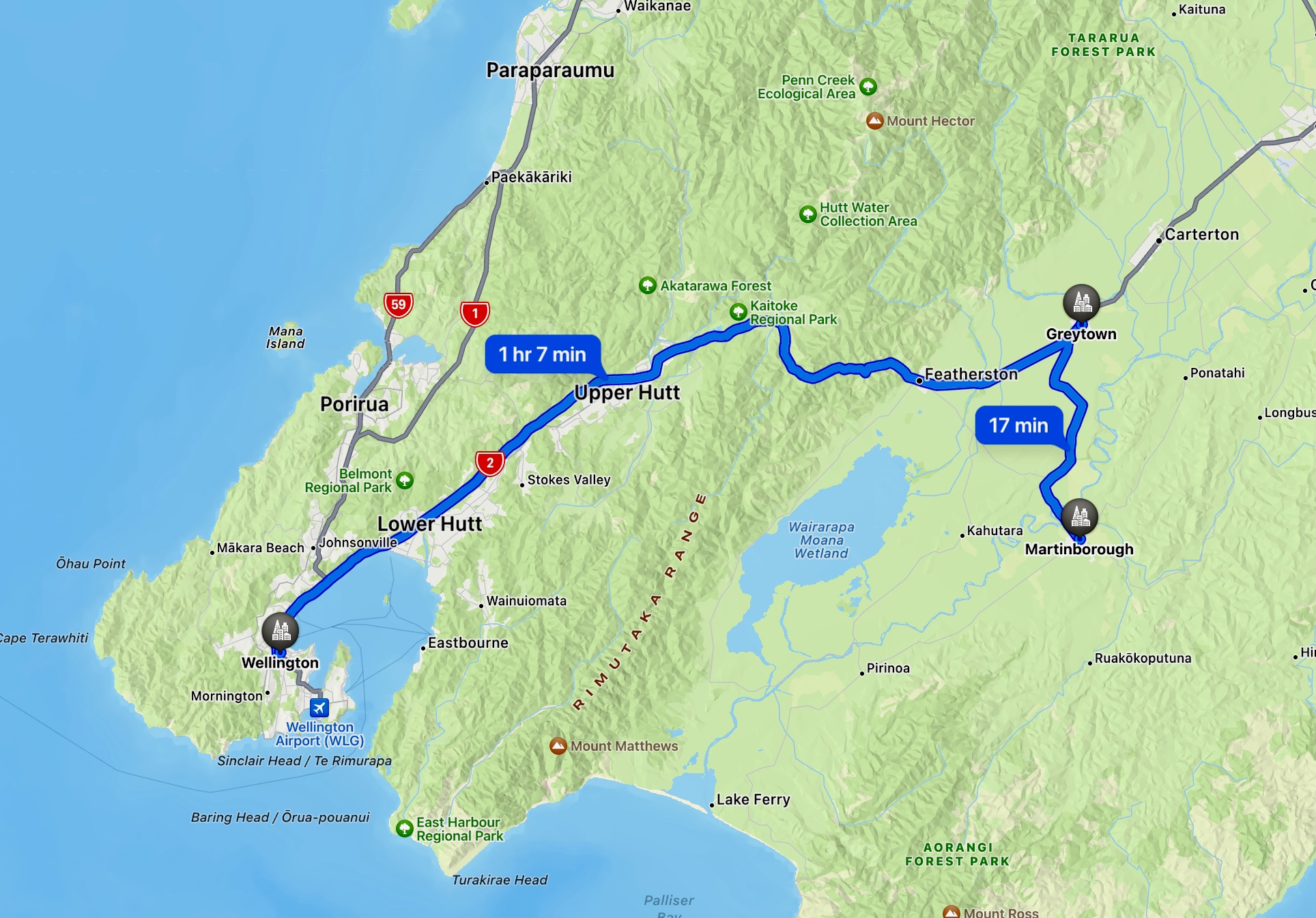

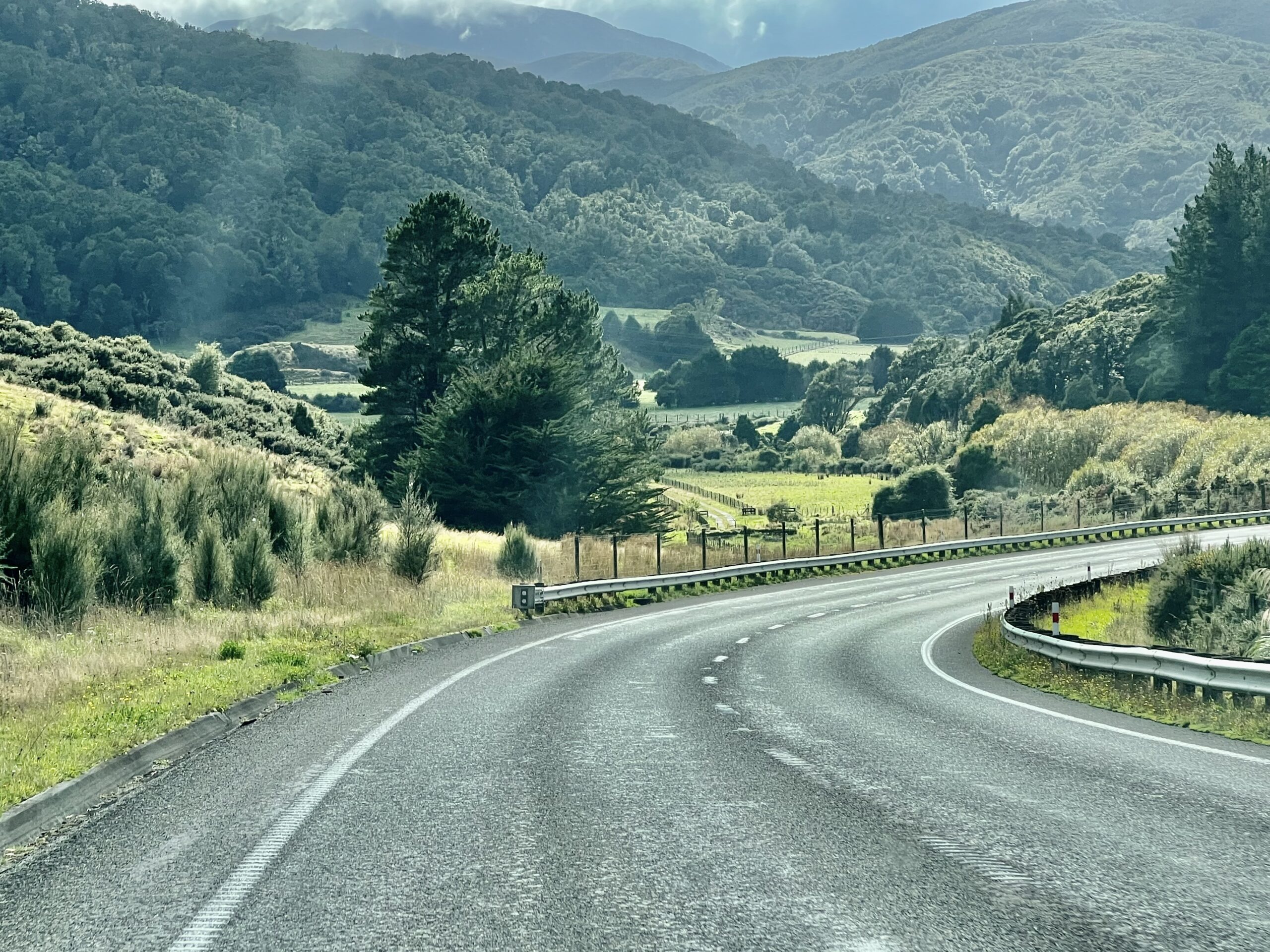
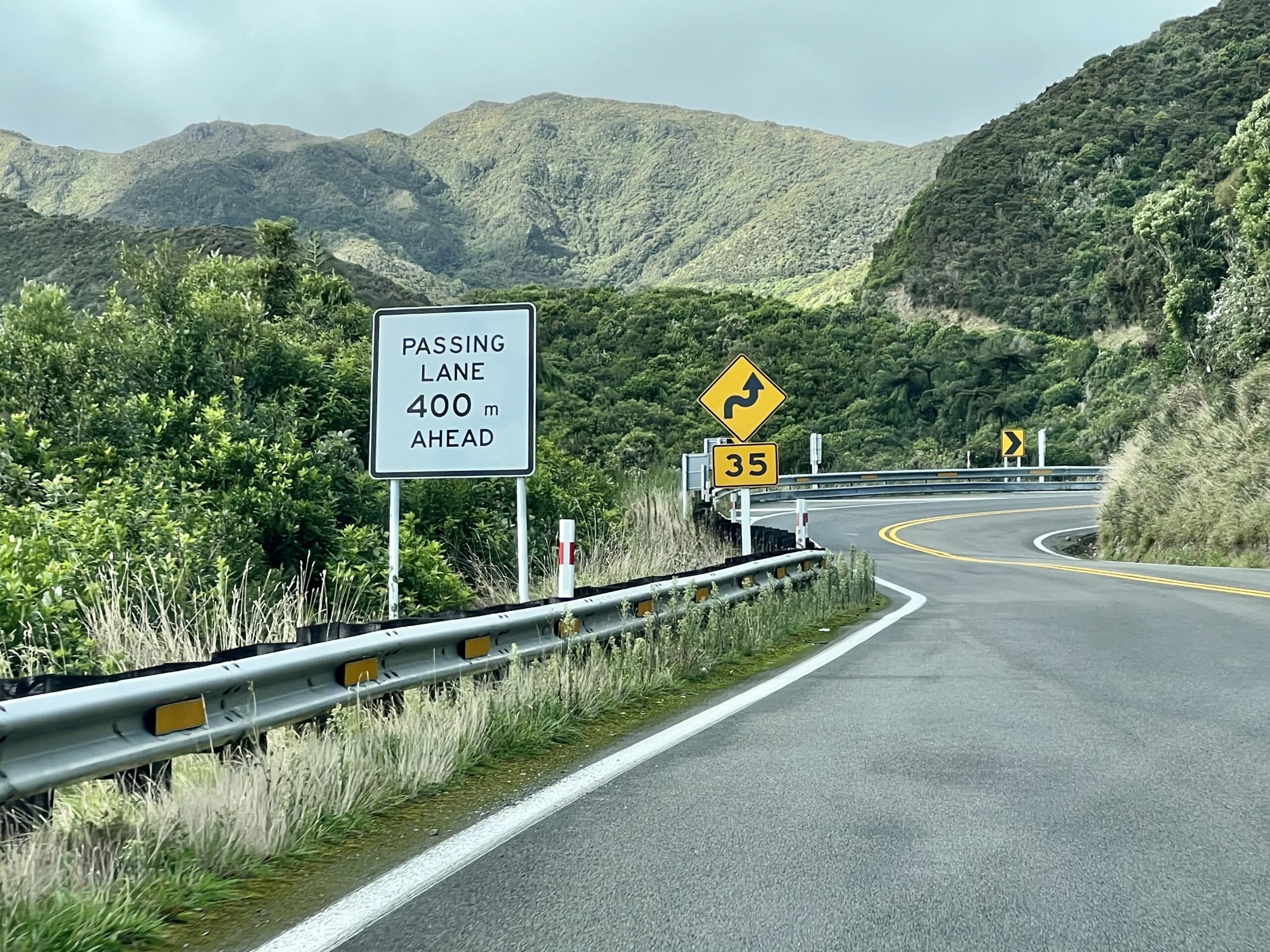
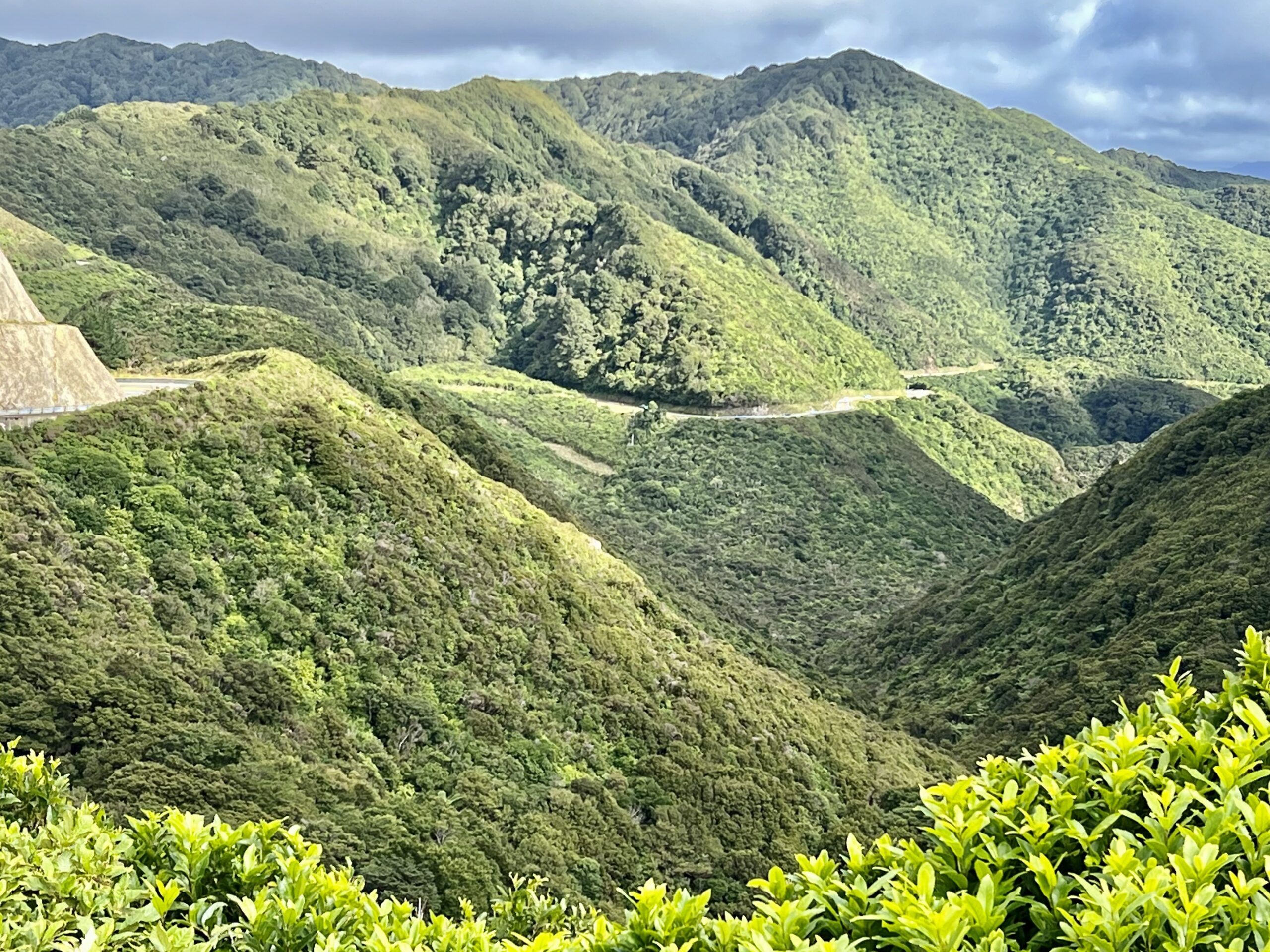
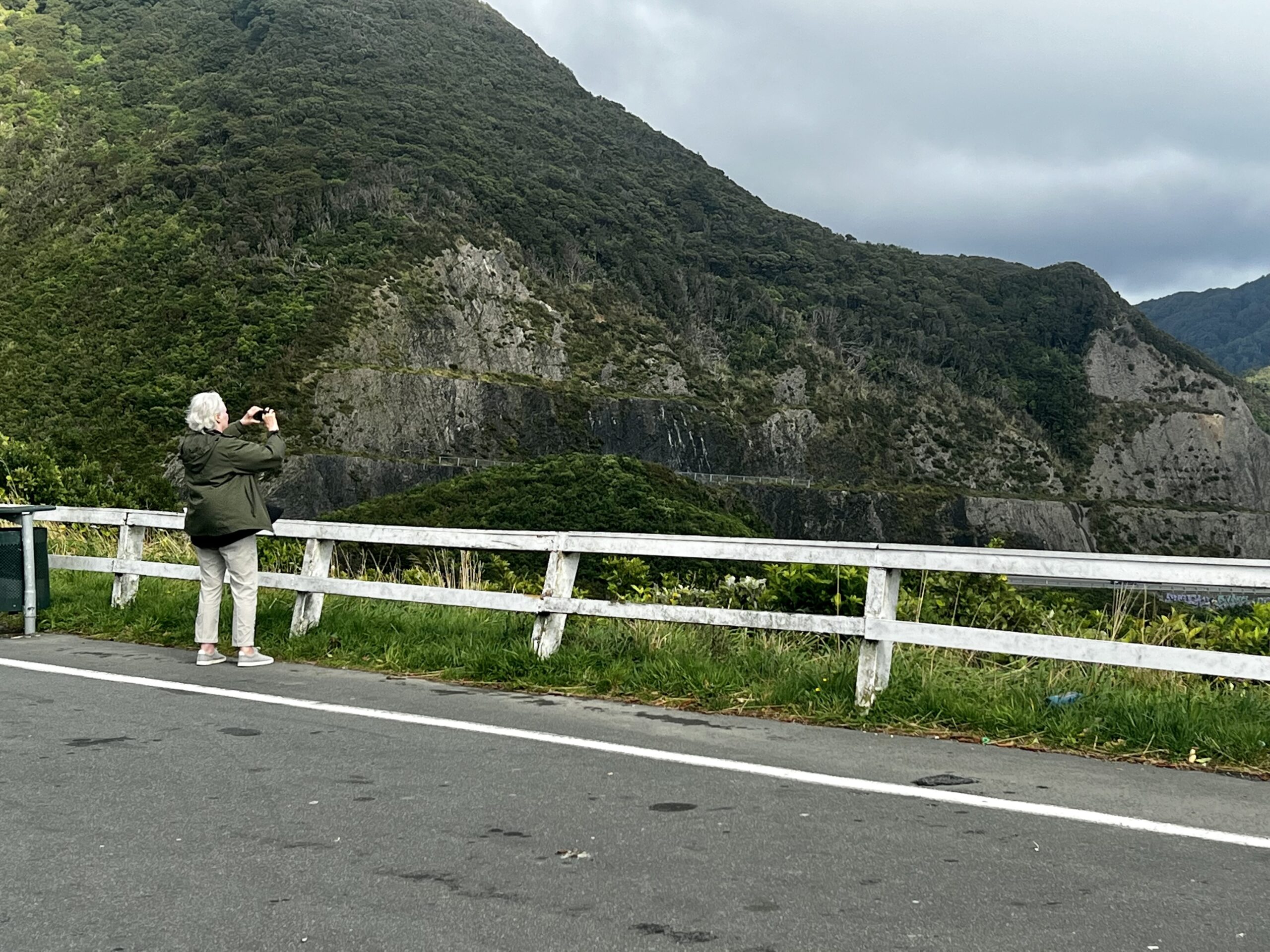

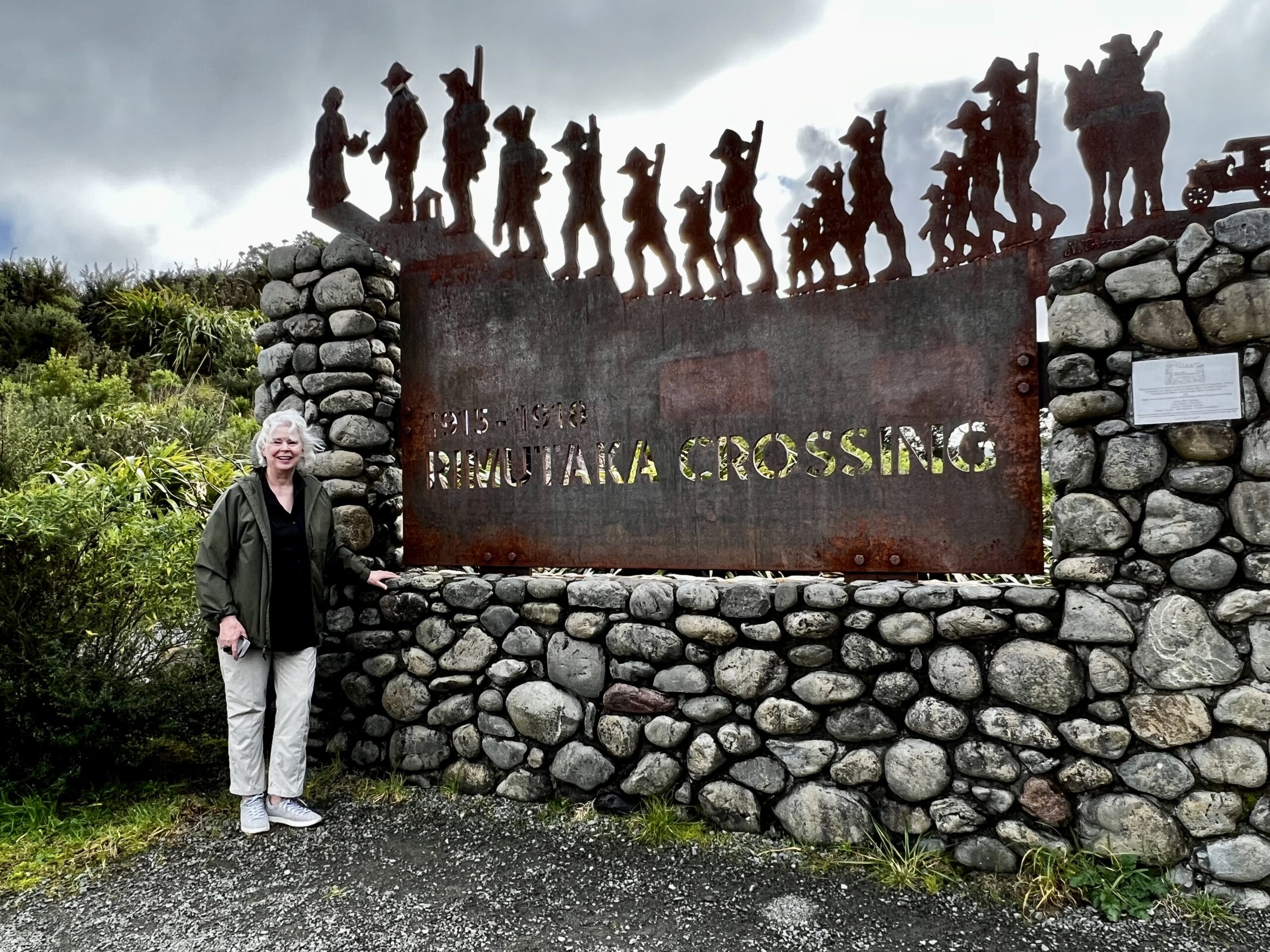

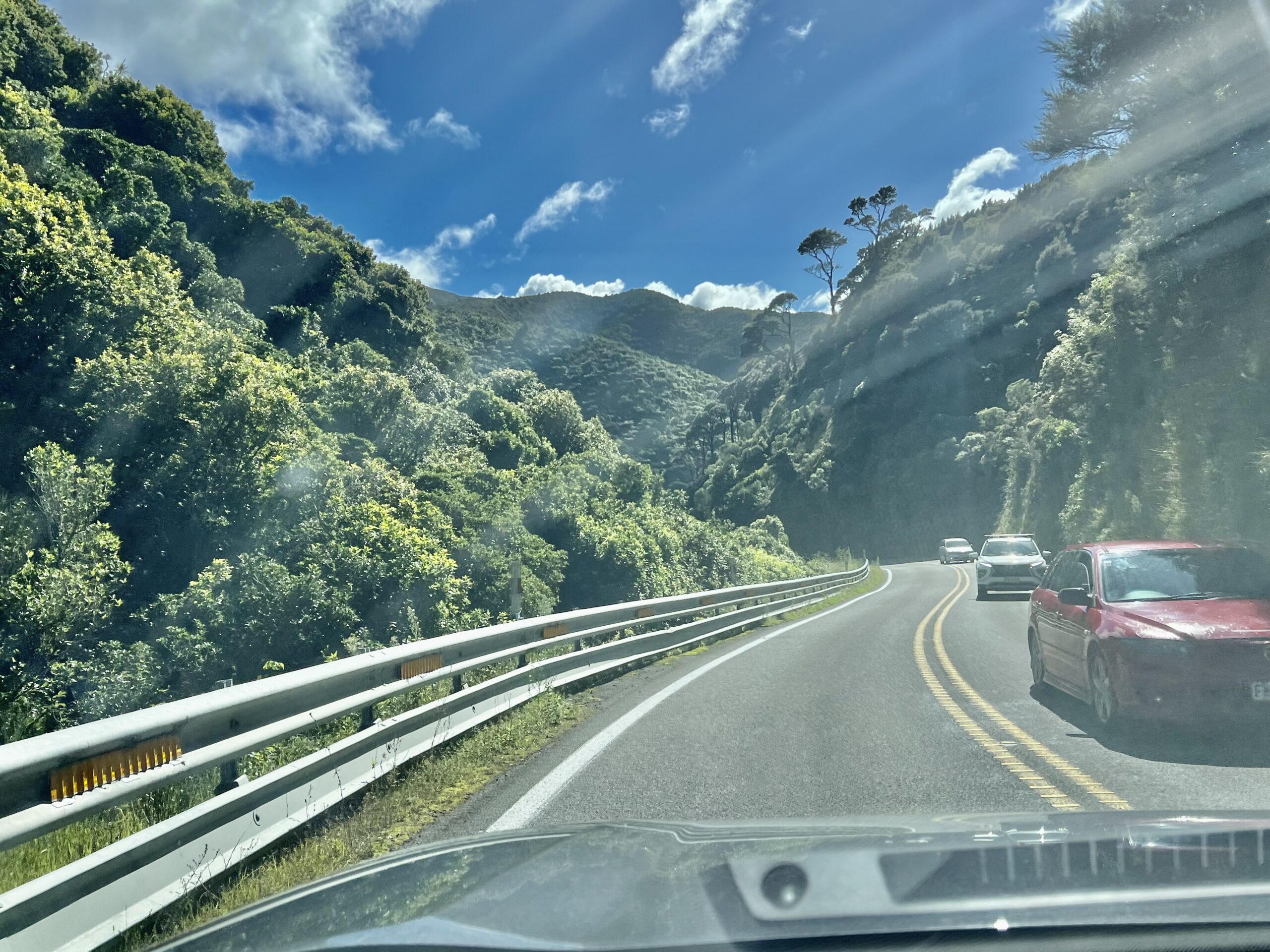
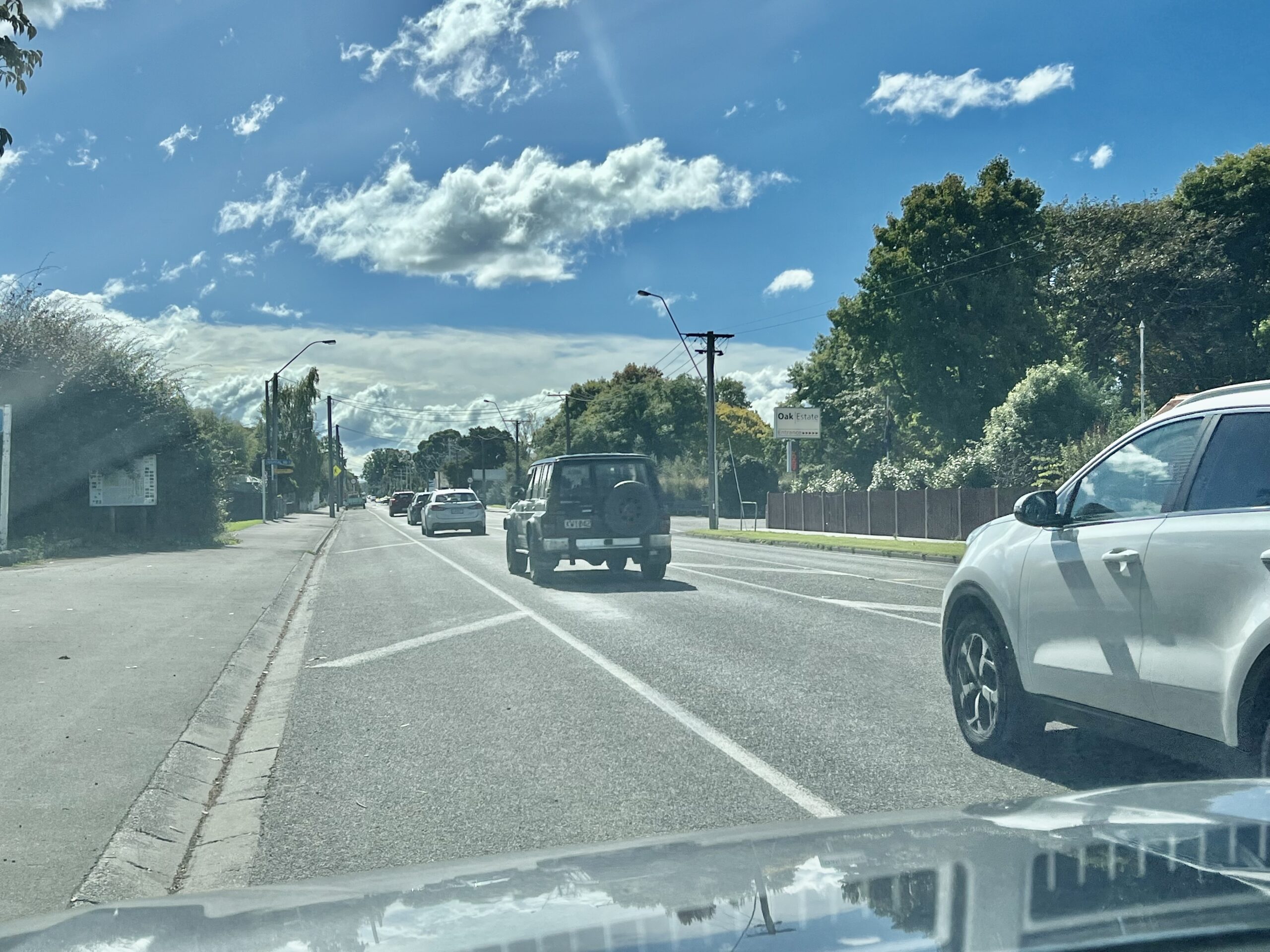
Accommodations and Grounds
Very nice cottages set within the vineyards of Martinborough. We unpacked in an elegant and comfortable cottage and ate a first-rate dinner at the resort the first evening. The grounds are lush with vegetation and voluptuous hedges that intermittently line the drives and walkways. Stargazing at night is undisturbed by unneeded lighting. In January 2023, this area in the South Wairarapa was certified as an International Dark Sky Reserve, one of only twenty-one worldwide.
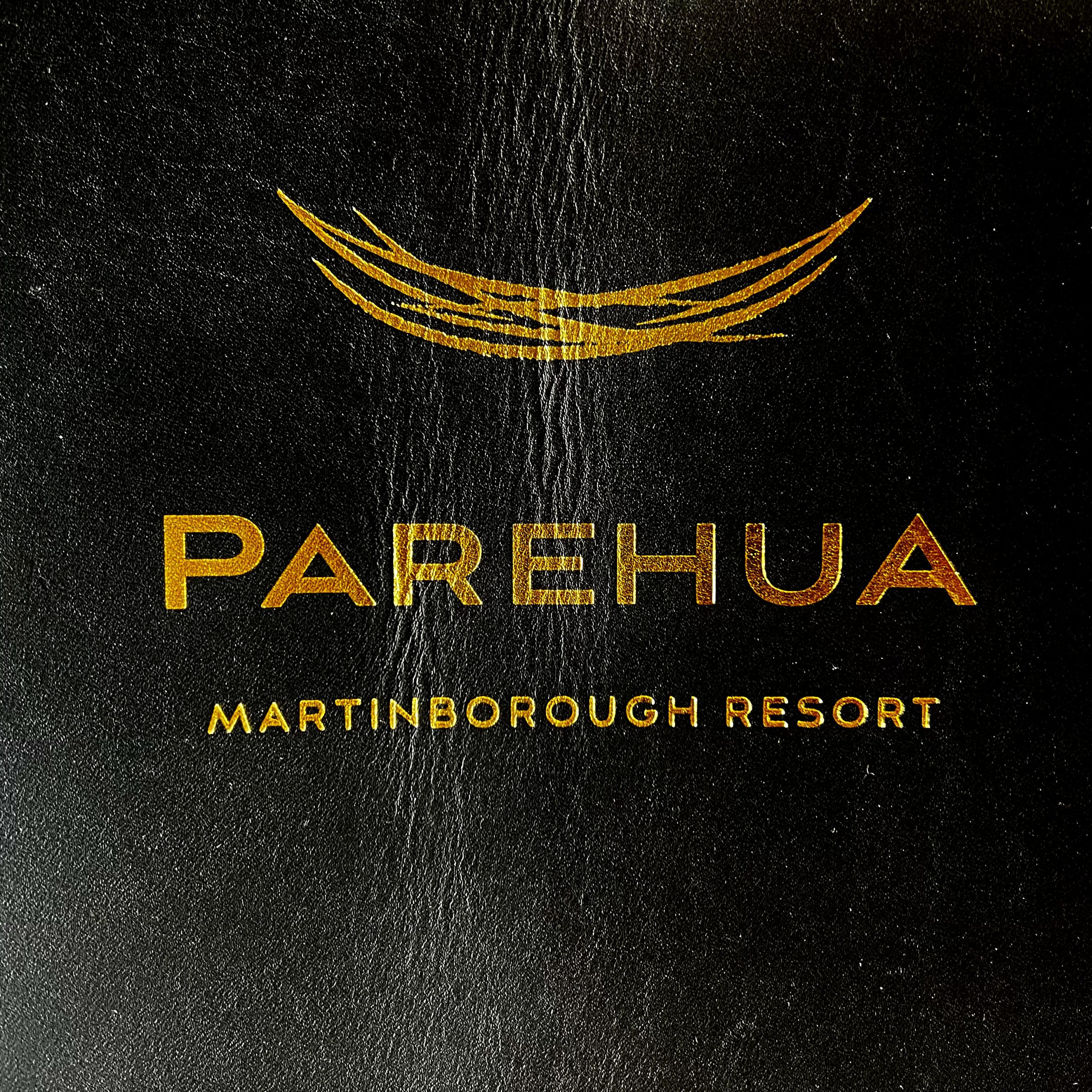
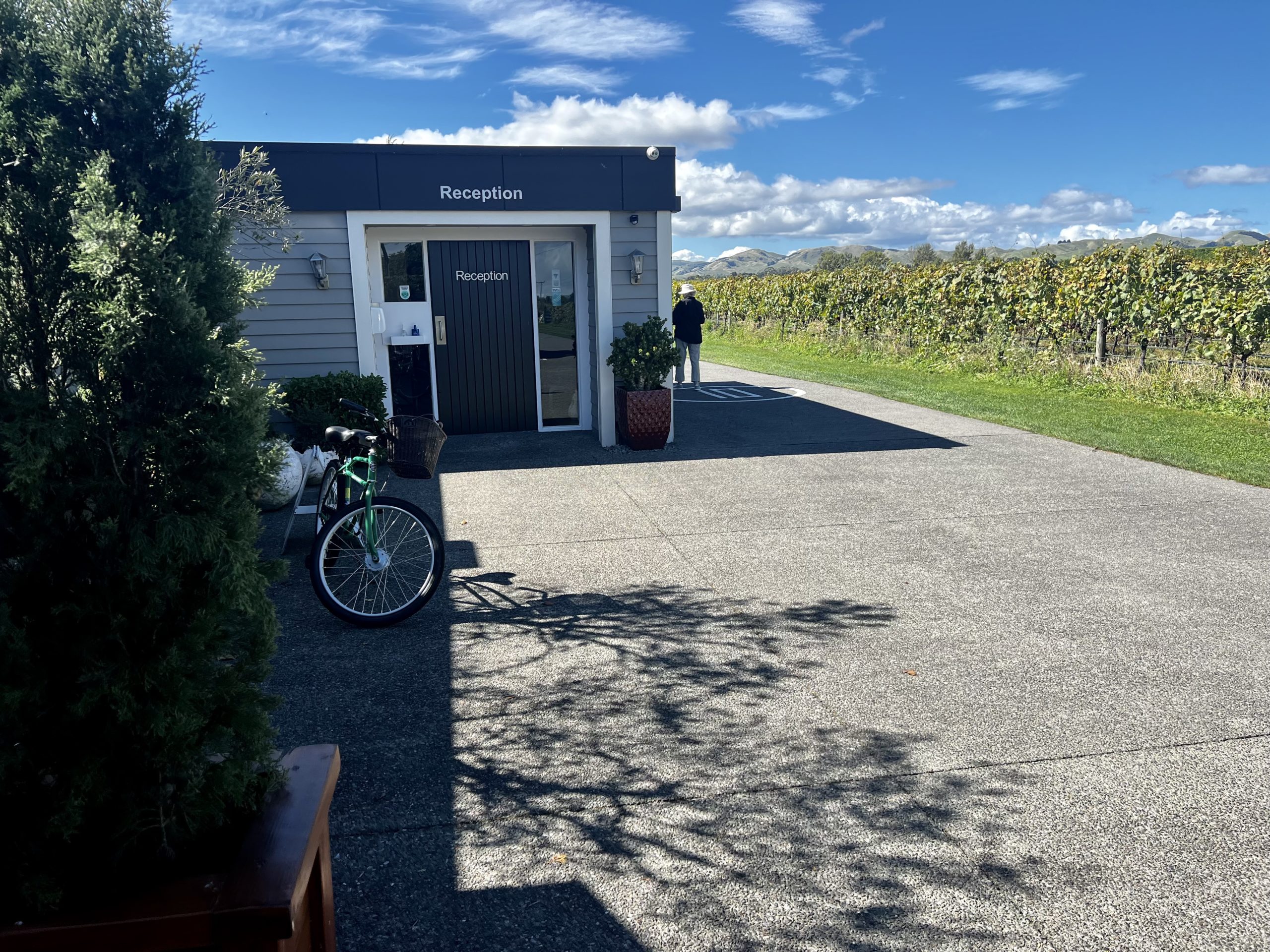
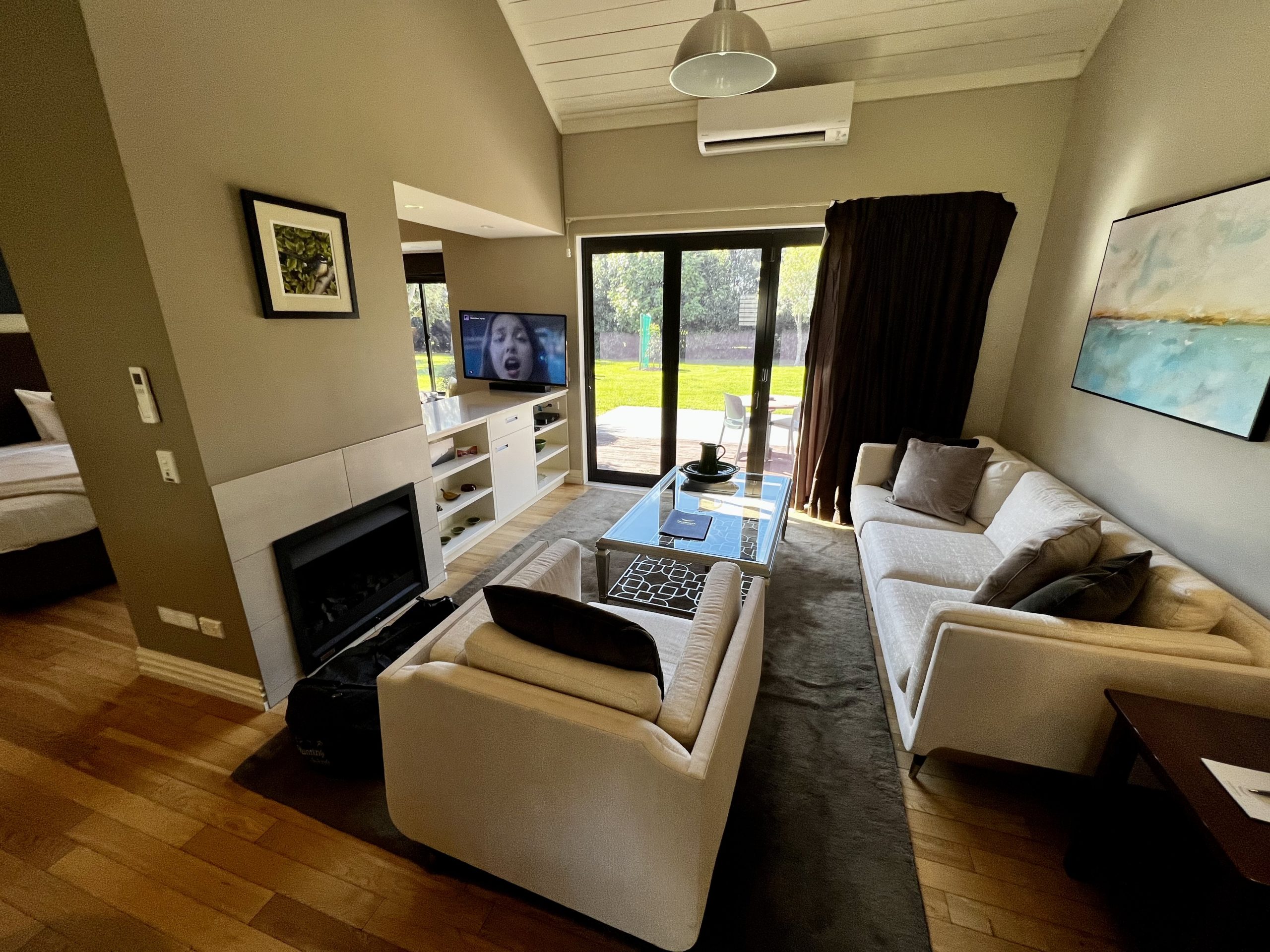
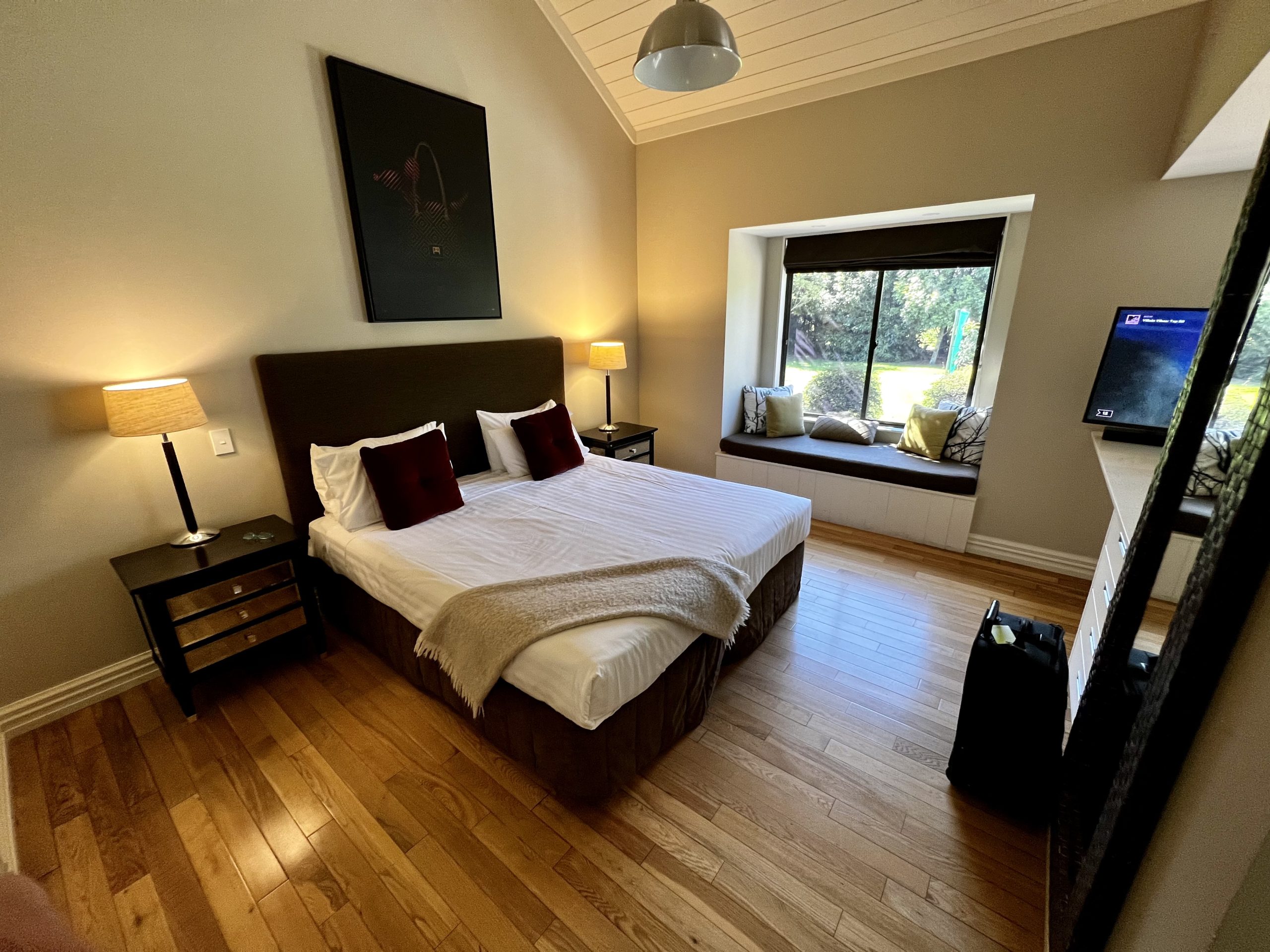
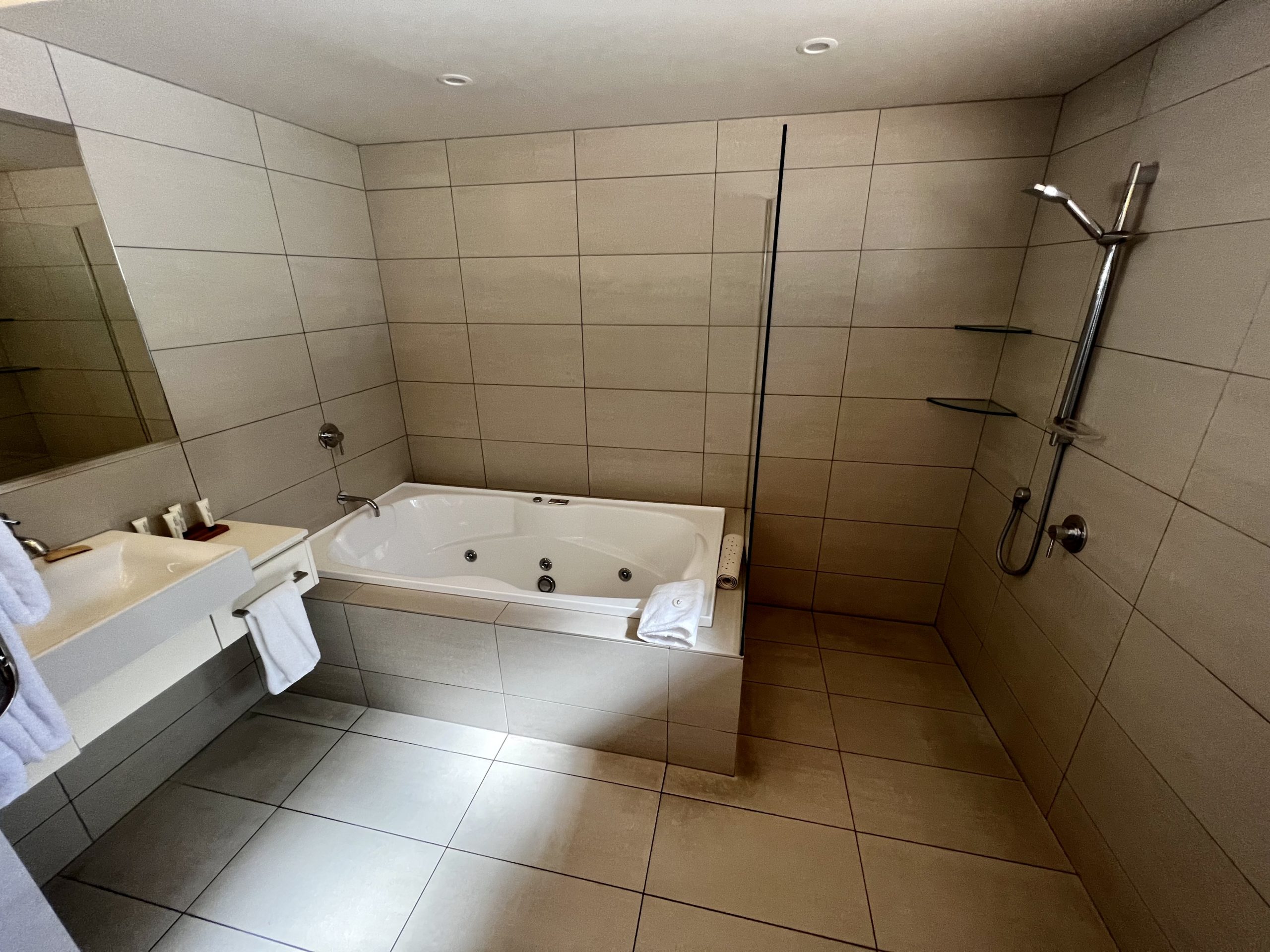
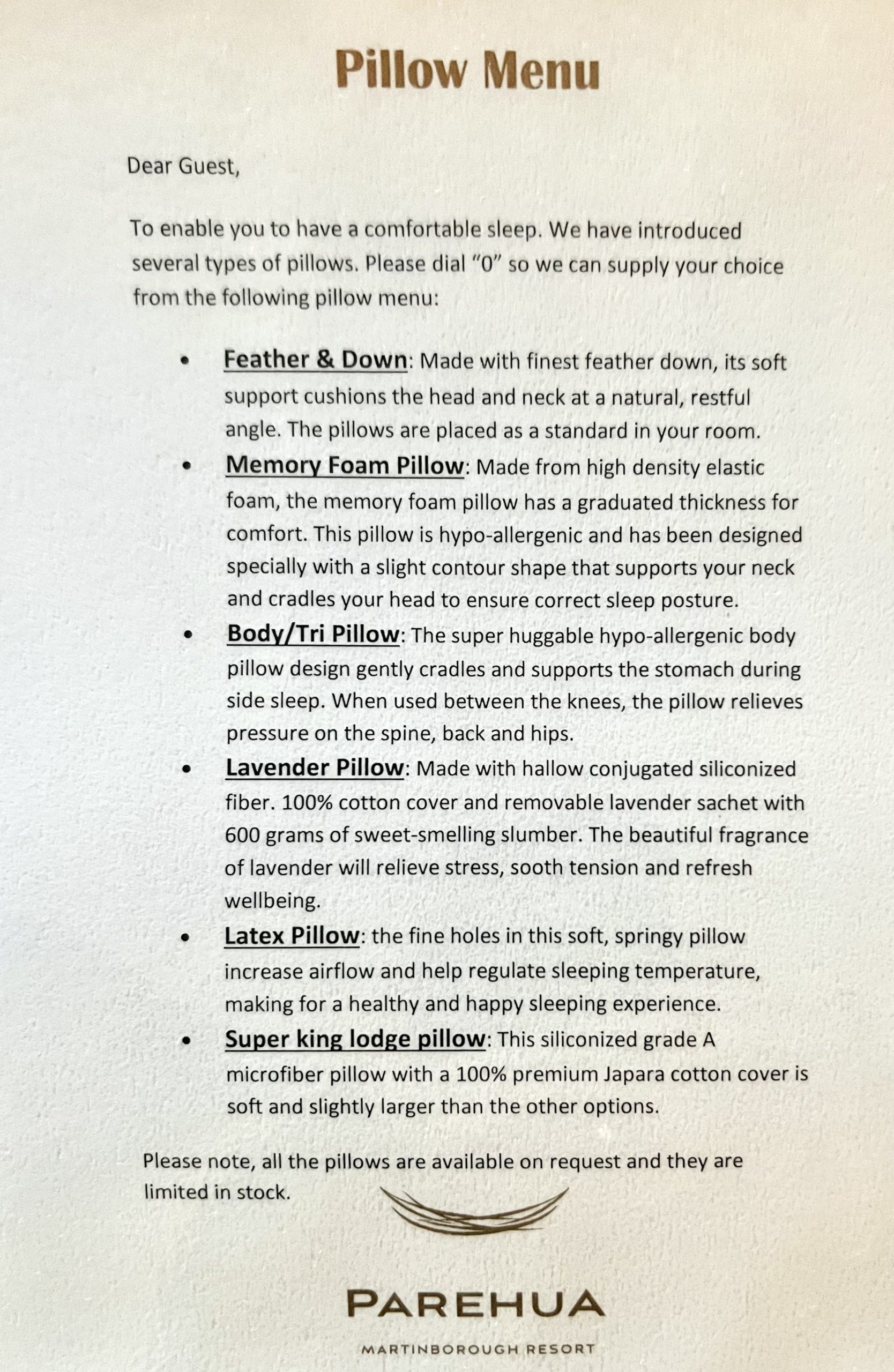
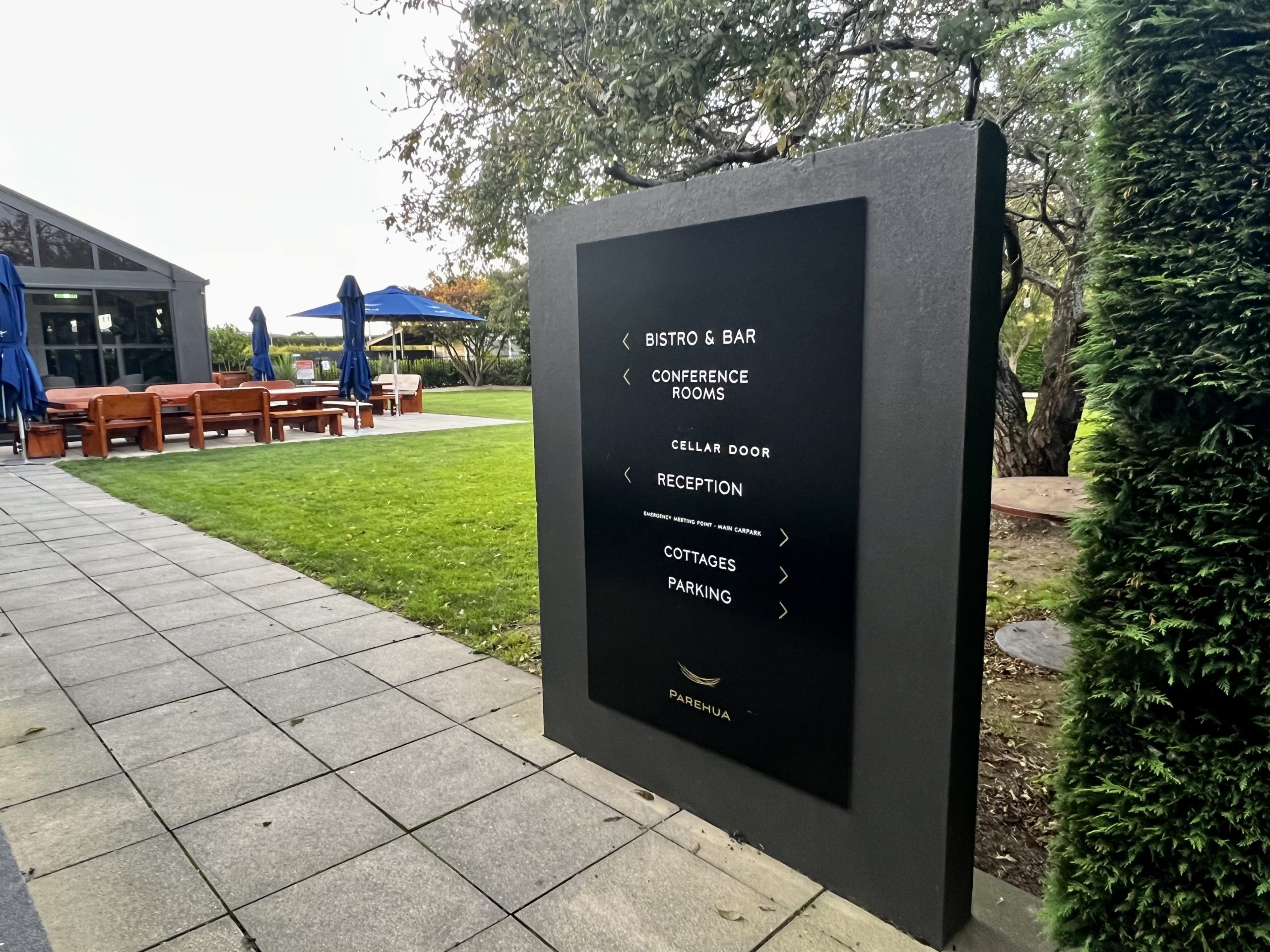
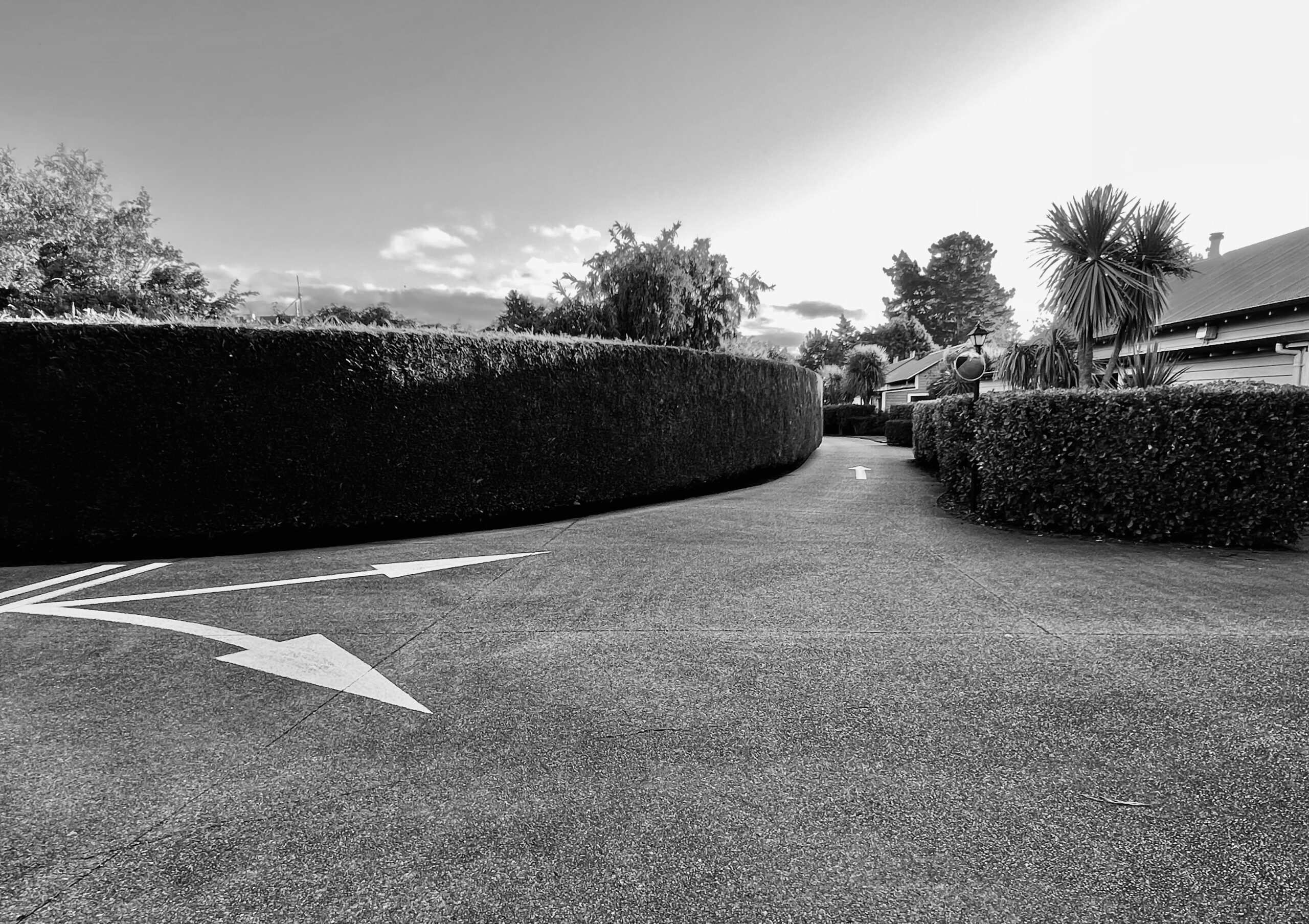
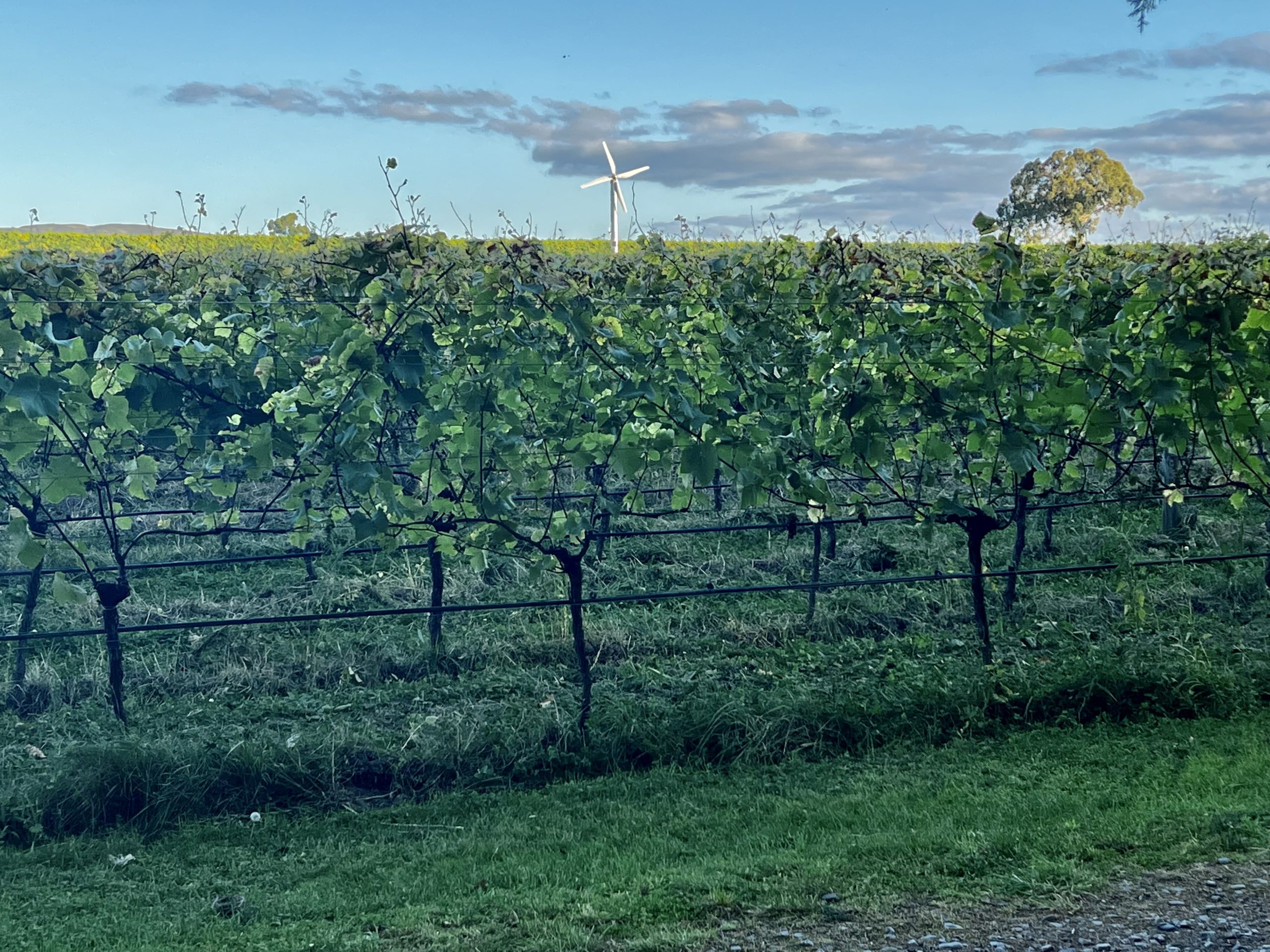
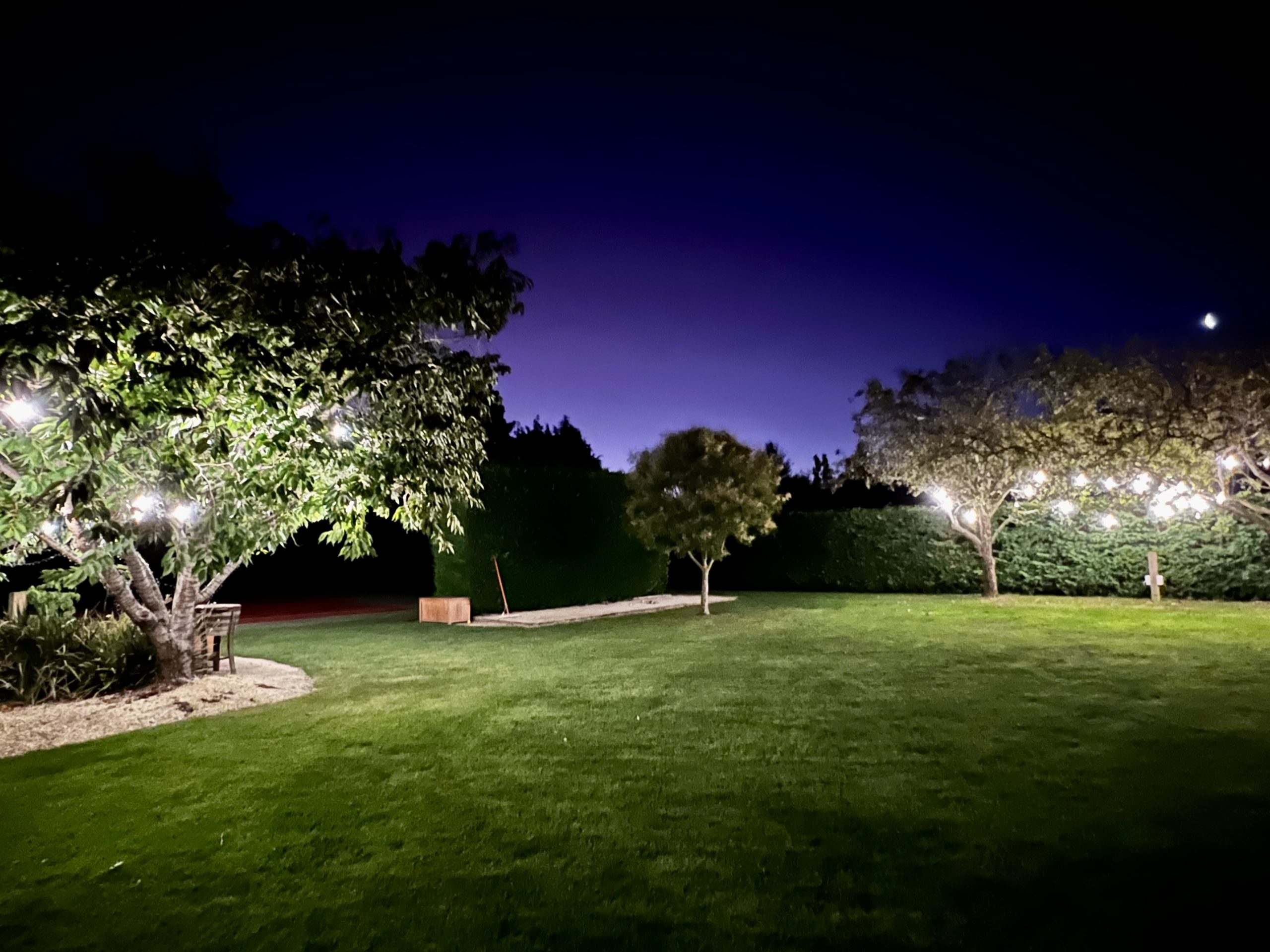
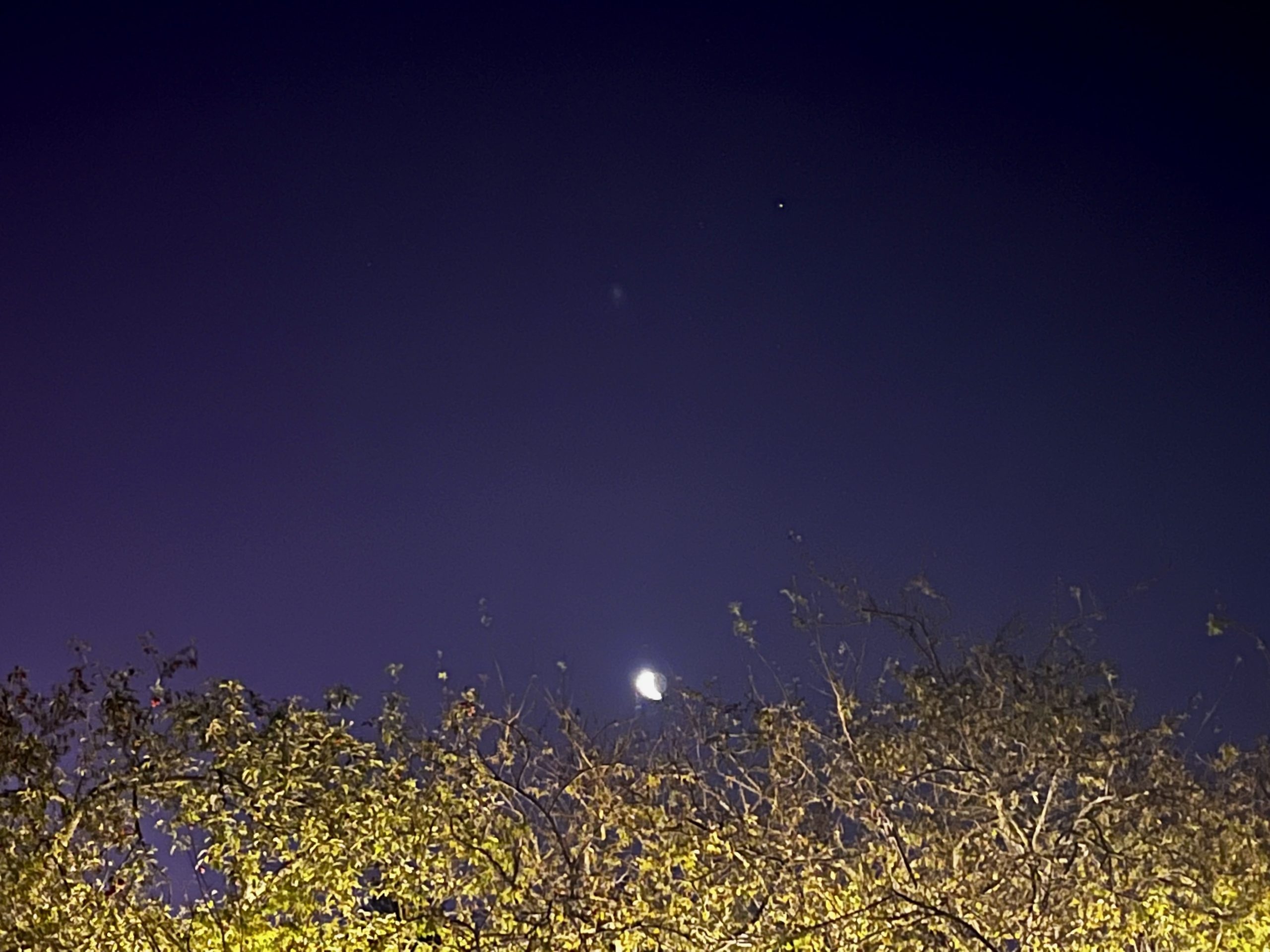
Bonnie in Greytown
So much to say about Greytown. When Bonnie arrived as an exchange student in 1966, this town of 2,000 was dusty, and the Main Street looked like a ghost town. The two-hour drive over the mountains from Wellington was too arduous and scary to do often. Basic shopping required a trip to a slightly larger town farther north. Fields around the town were filled with Romney-cross sheep. The best thing happening in town was Kuranui College, the new high school, which had great teachers and a hard-driving principal. Before Kuranui, local students went to boarding schools. Now they came by bus daily from three surrounding small towns, often with very long drives. Bonnie’s friend Gary had the longest bus ride in New Zealand—an hour and a half each way. He bonded with the bus driver, our math teacher, Mr. Spooner.
Greytown today is nearly unrecognizable. It has added only a few hundred people, but Main Street is super stylish and bustling with cafes, hotels, and high-end shops. We have not seen anything like this elsewhere in New Zealand. The Victorian buildings are restored and labeled with historic plaques. Greytown could easily compete with St. Helena in the Napa Valley for title of most fashionable little tourist town. As the road over the mountains from Wellington was improved and the drive became easier and faster, Greytown became a popular weekend destination, first for gay men. Now they are eclipsed by white-haired heterosexual couples with money to spend.
For Bonnie, the year in Greytown was terrific. Great family, great school, great best friend. The rural setting was an abrupt change from suburban Chicago but not a bad one. Her New Zealand family took her on ambitious trips throughout the country, got her outfitted in a school uniform, arranged tennis parties for friends on the grass court in the yard, hosted girlfriends for the weekend, invited other exchange students in the region for an American Thanksgiving dinner, answered her endless questions about the country, and addicted her to daily afternoon tea.

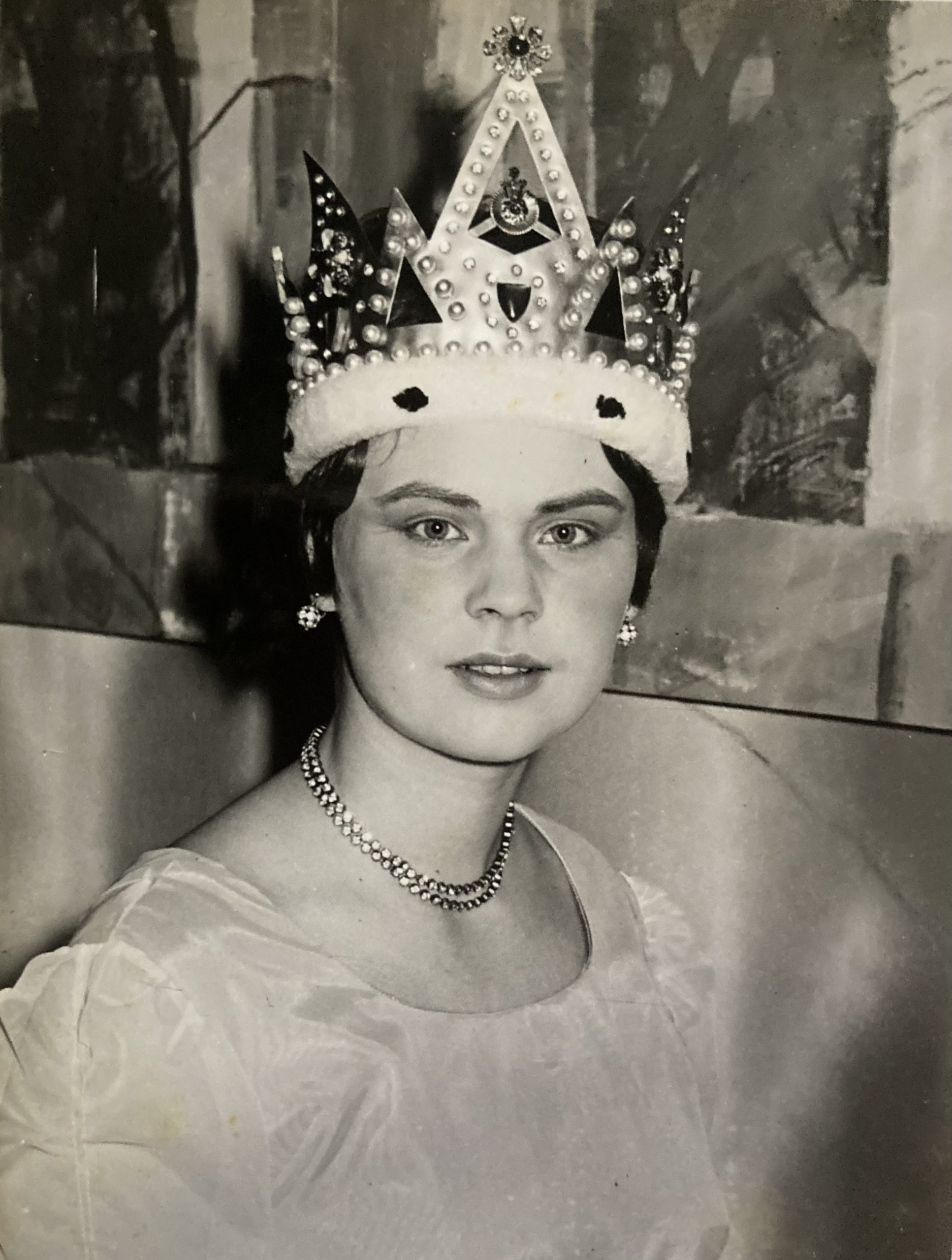

An Afternoon with Di!
Di is part of Bonnie’s extended family in New Zealand. It was an intense experience to spend a half day with her in person, not on Instagram, catching up on family news, old classmates, and Greytown. After a long lunch we went to Kuranui for a tour of the school. Di picked up a master key, and we explored the old and new buildings, talked to teachers, and met the principal.
After a long, interesting career in education, Di currently works three days a week for the Department of Education targeting students who “don’t like school.” During the pandemic lockdown, despite stops by the police, she drove all over the region to visit students, often delivering paper workbooks to students without computers. She is the mother of Bonnie’s “nephew” Simon who has stayed with us several times in San Francisco. Di is also approved by the government as an “officiant” for weddings and funerals. She does weddings only occasionally, but Bonnie loves to see them on Instagram.
Di gave us great insight on the push to use more Māori language and customs. She is an enthusiastic advocate. She explained that people are switching to Māori names for places such as Wellington, despite the grumpy reluctance of some in our generation. And we all need to correct our pronunciation. Bonnie included. The sloppy old Kiwi version, omitting syllables here and there and mushing vowel sounds, is no longer acceptable. As an employee of the Department of Education, she takes an exam next week, demonstrating that she can perform a Māori greeting ceremony (such as for a professional meeting), a farewell ceremony, and two songs, and can handle Māori vocabulary. A teacher at the high school gives classes on these things for students and teachers. Di says she can follow the gist of meetings conducted in Māori, which is impressive. She pointed out to us that there in no plural in Māori. So we need to correct our blog to remove any “Māoris” and switch them to “the Māori.”
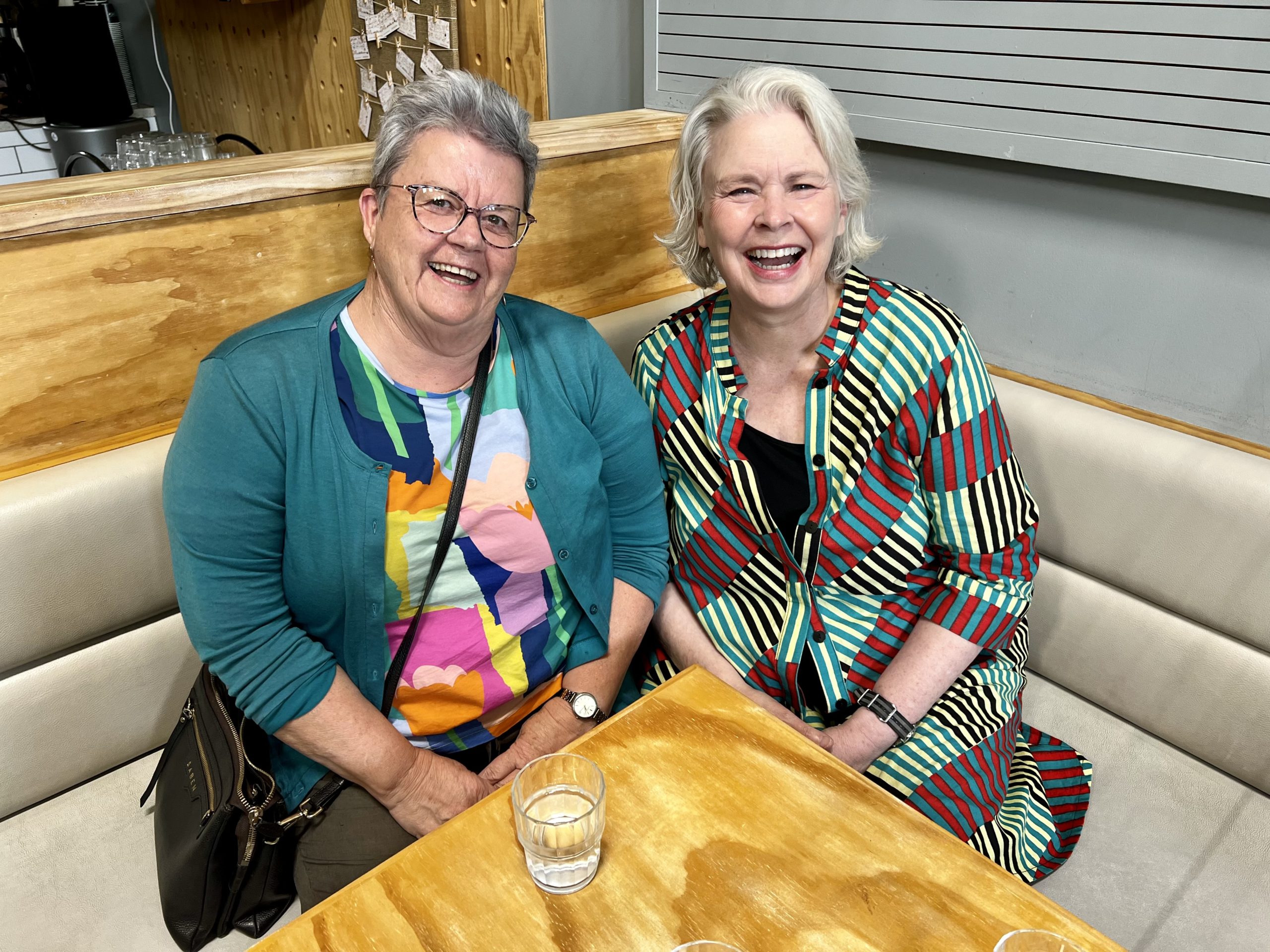
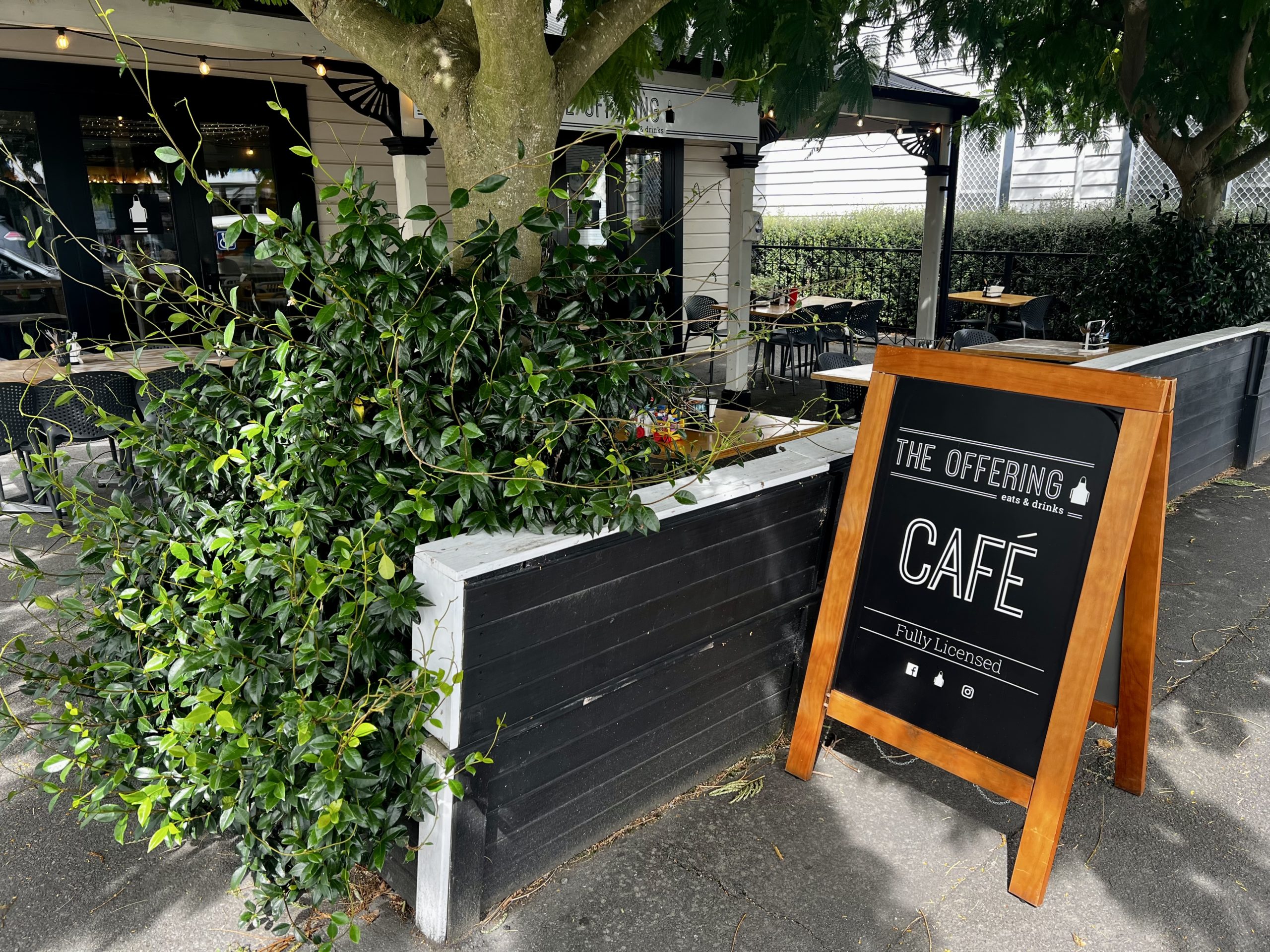
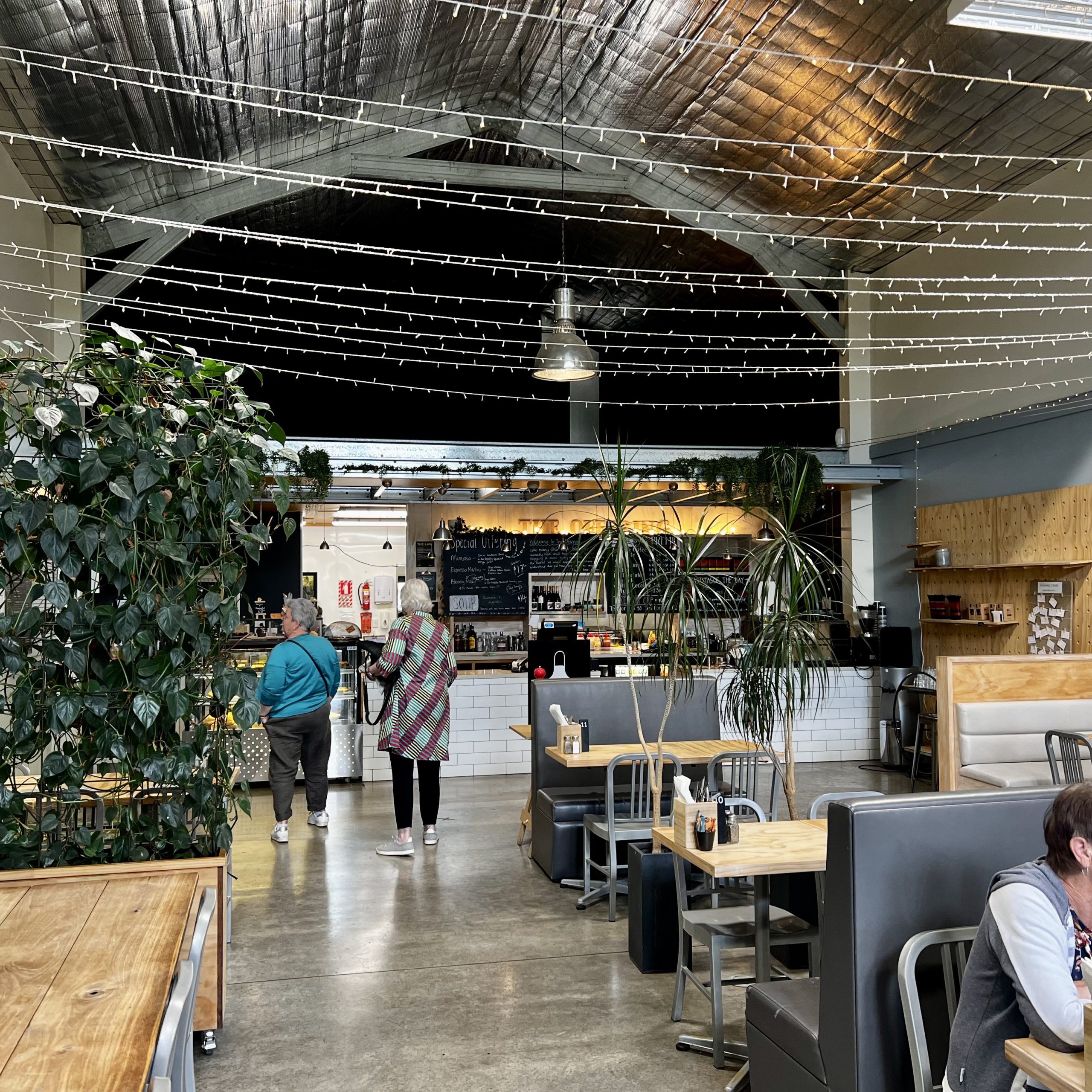
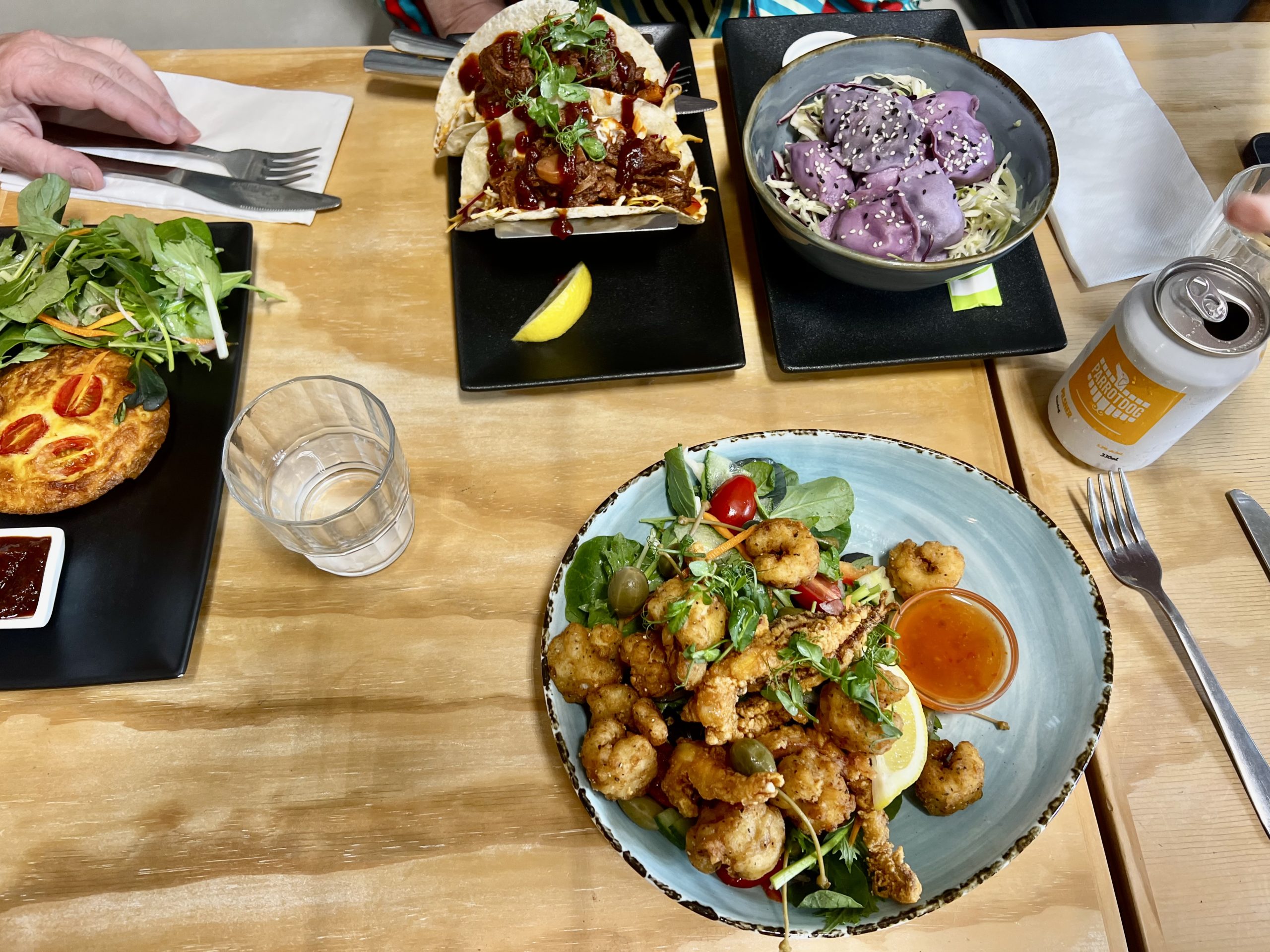
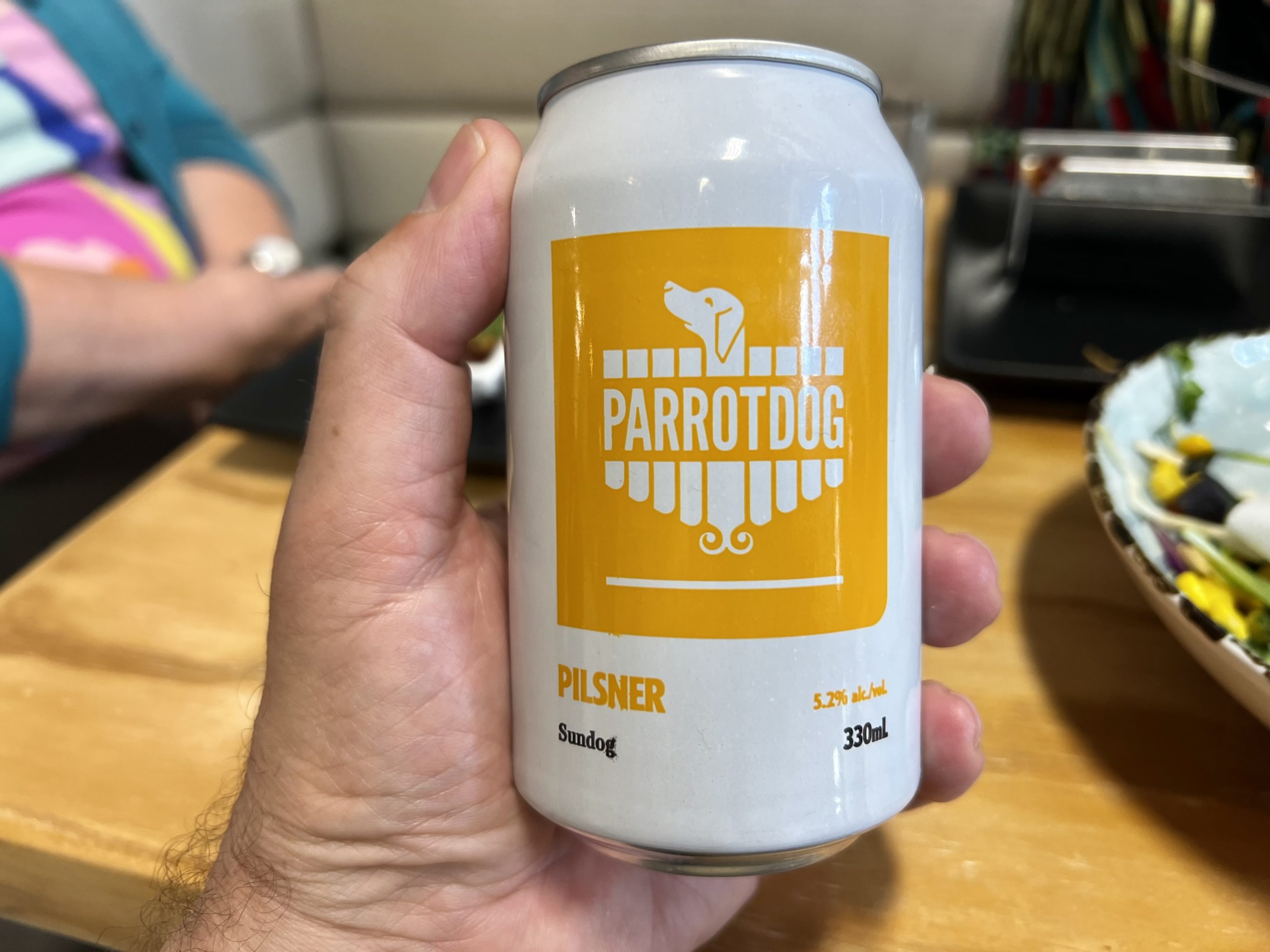
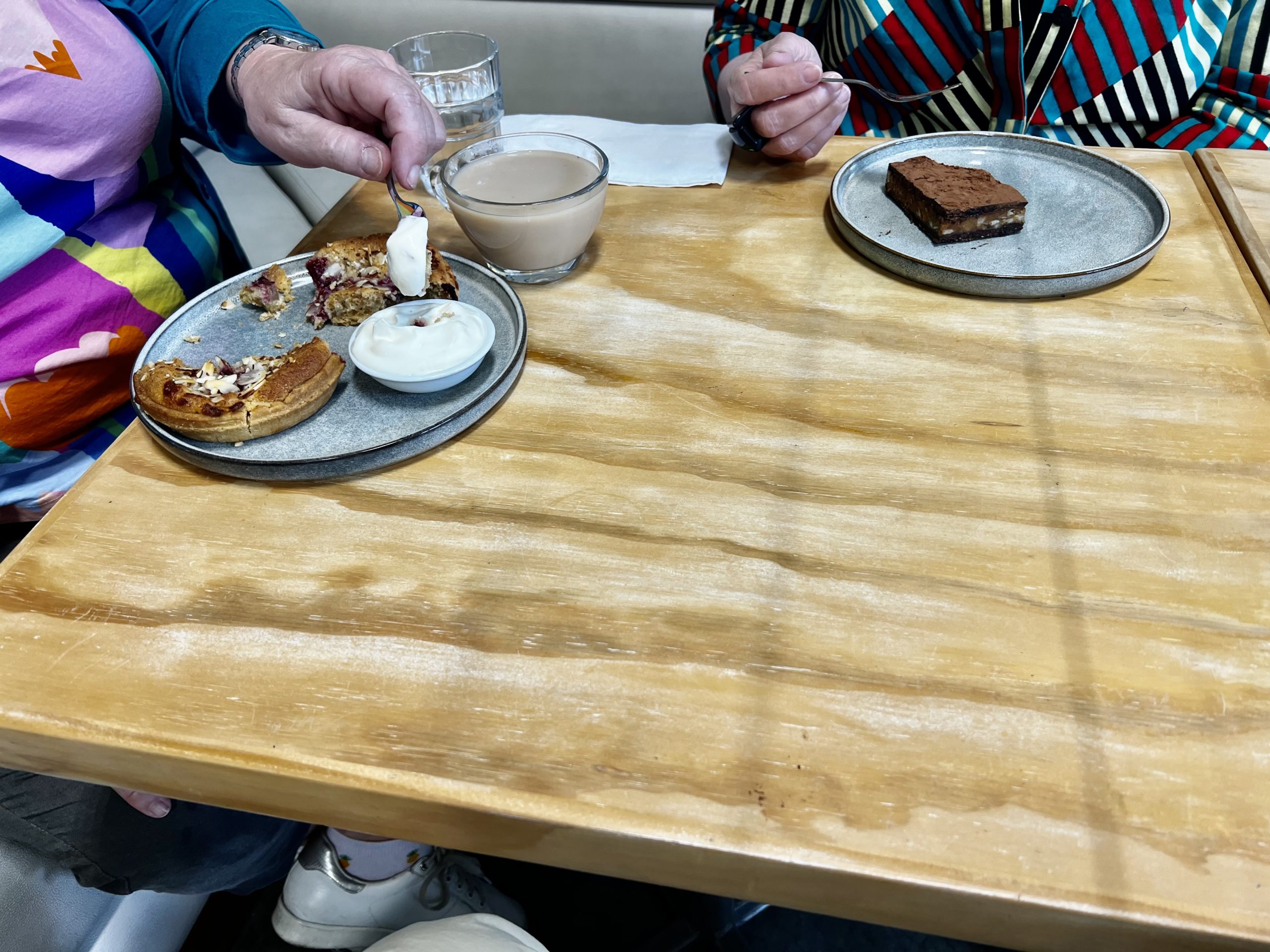
Kuranui College
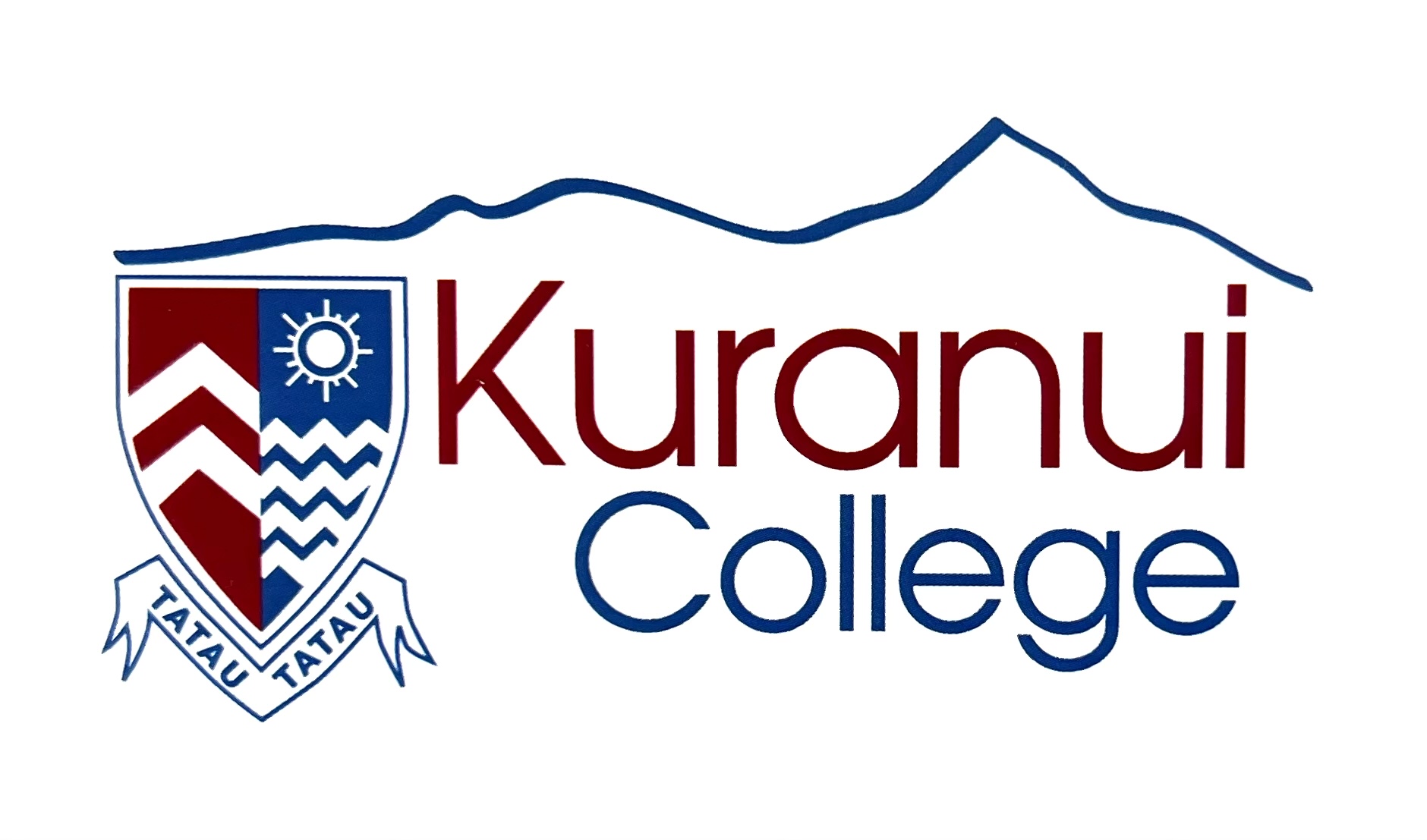
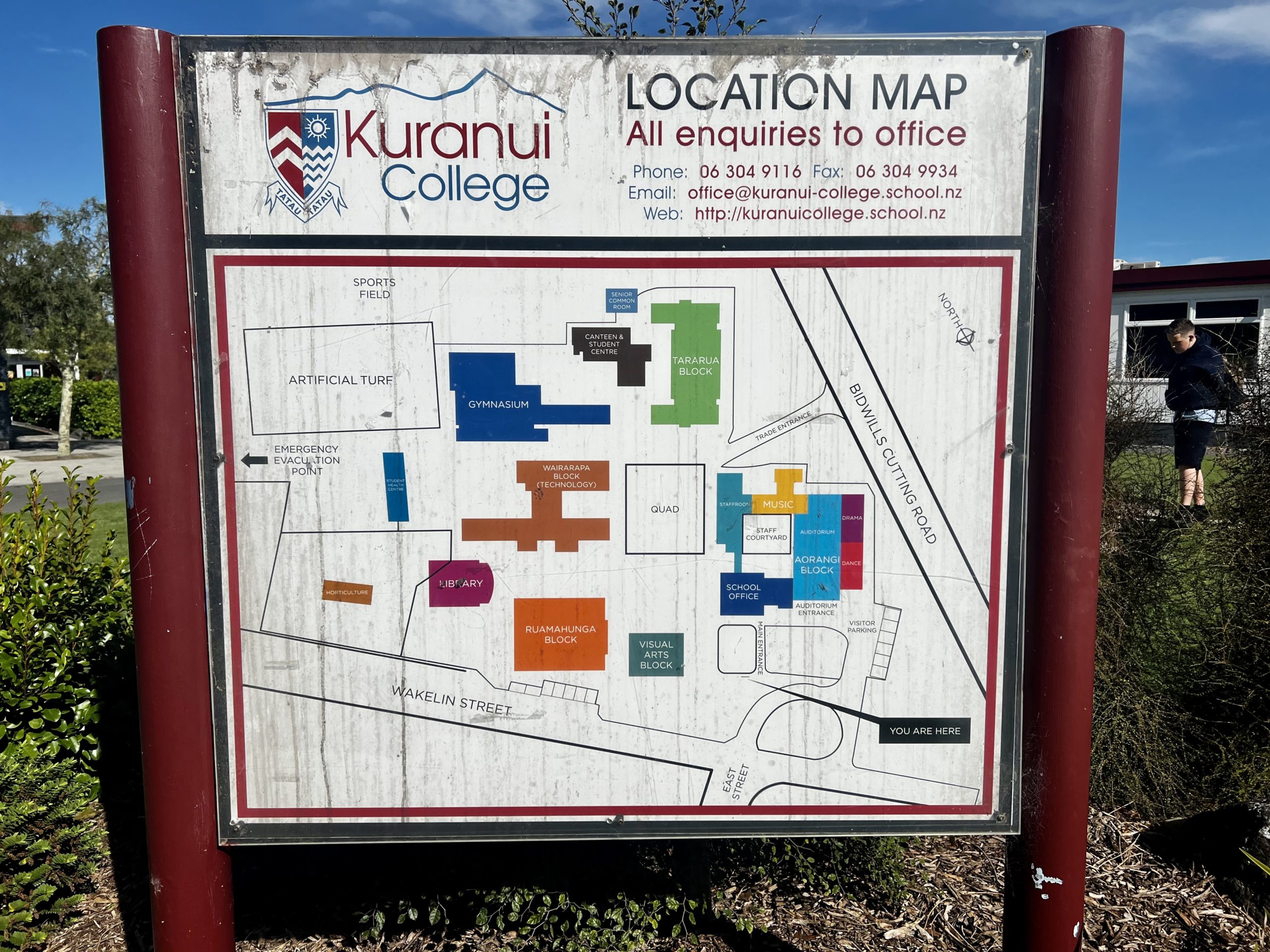
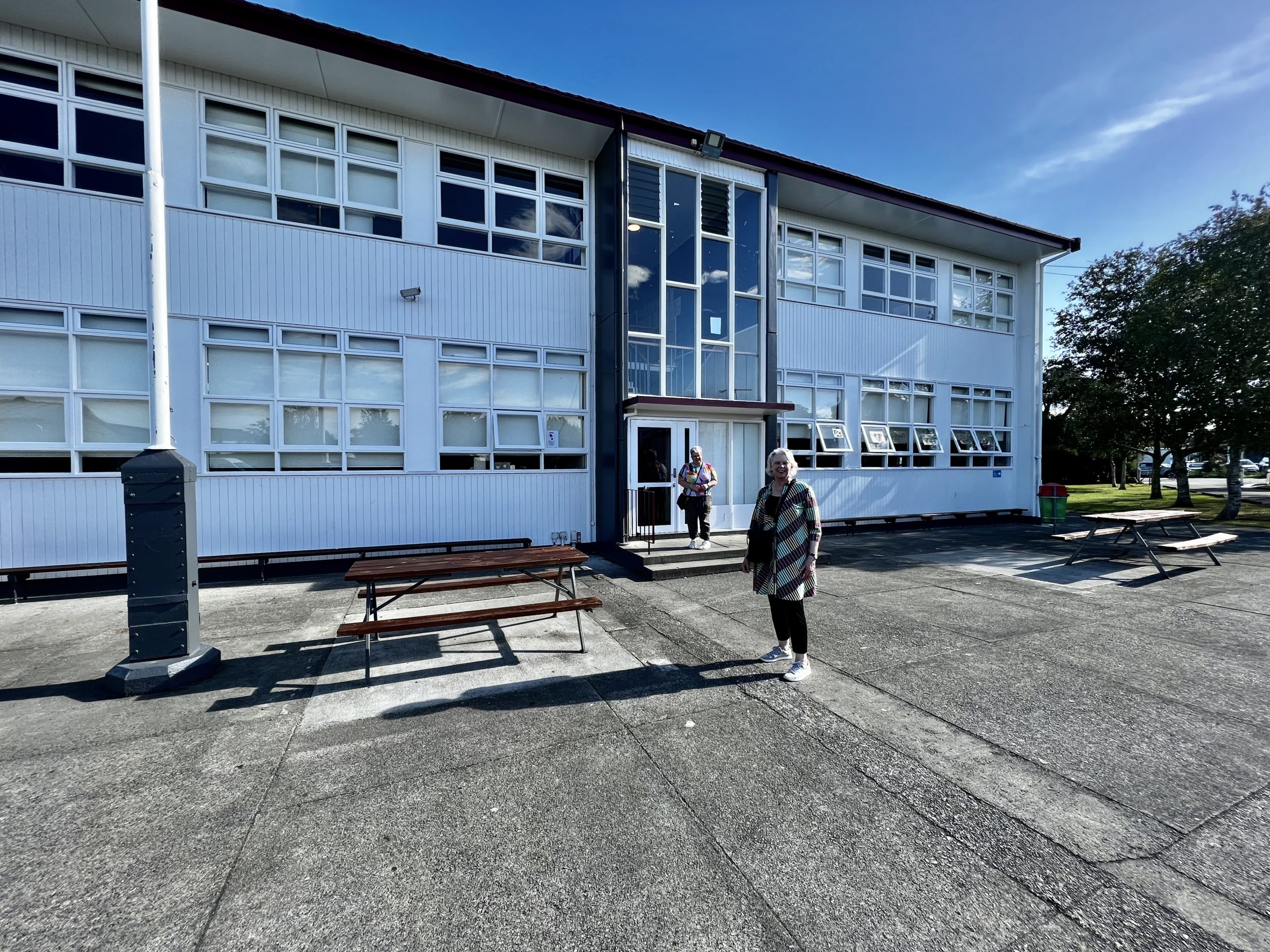
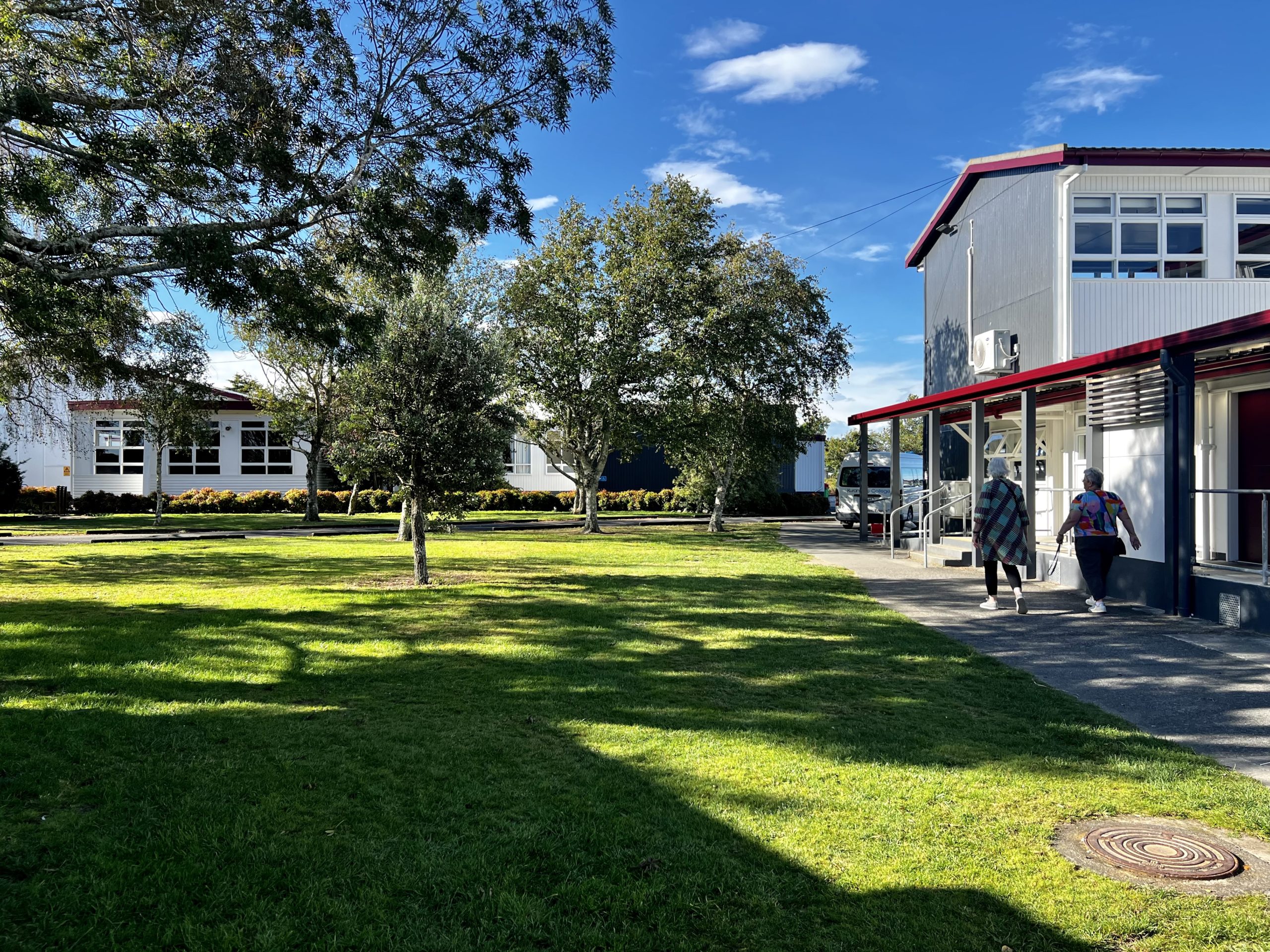
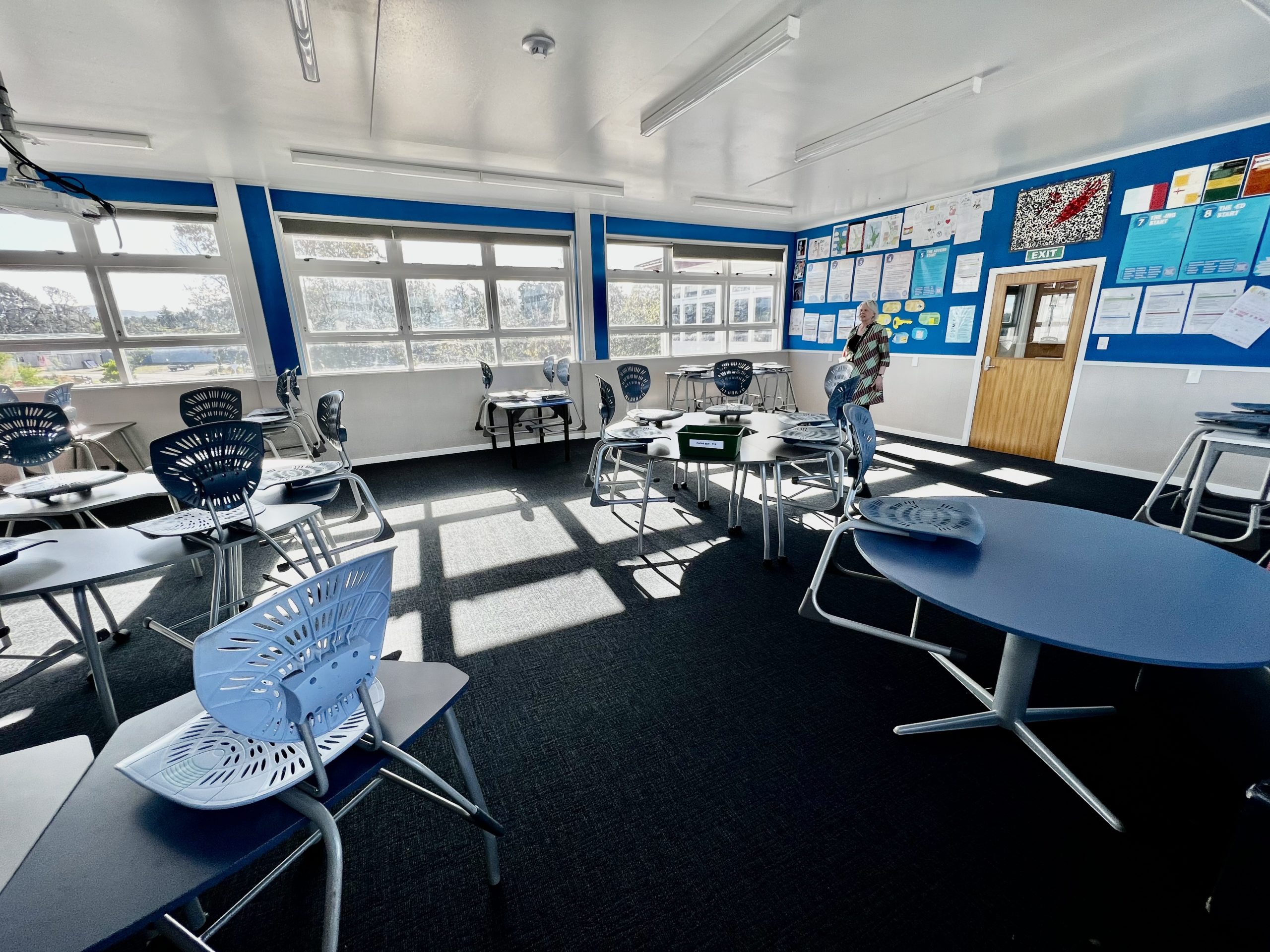
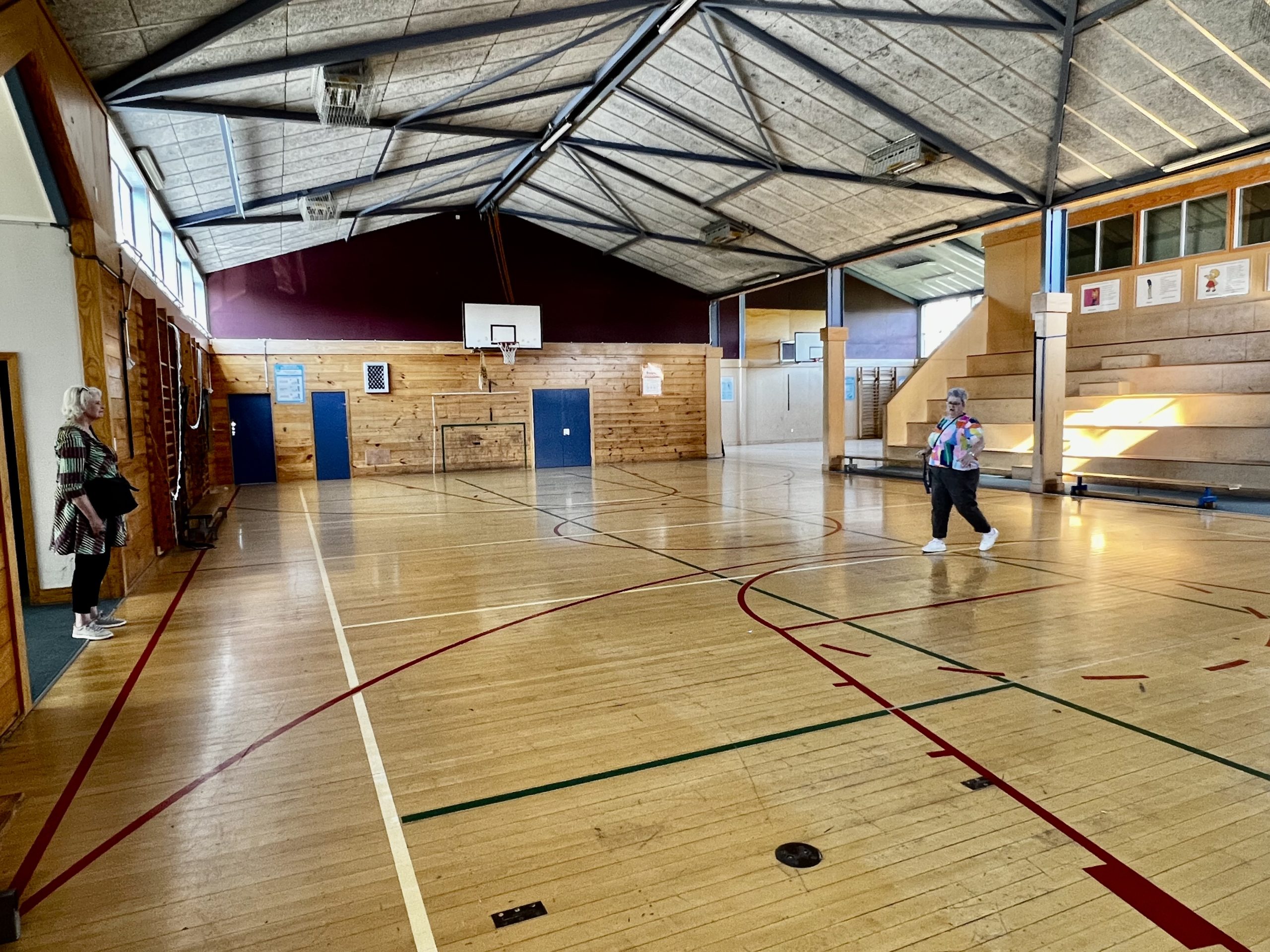
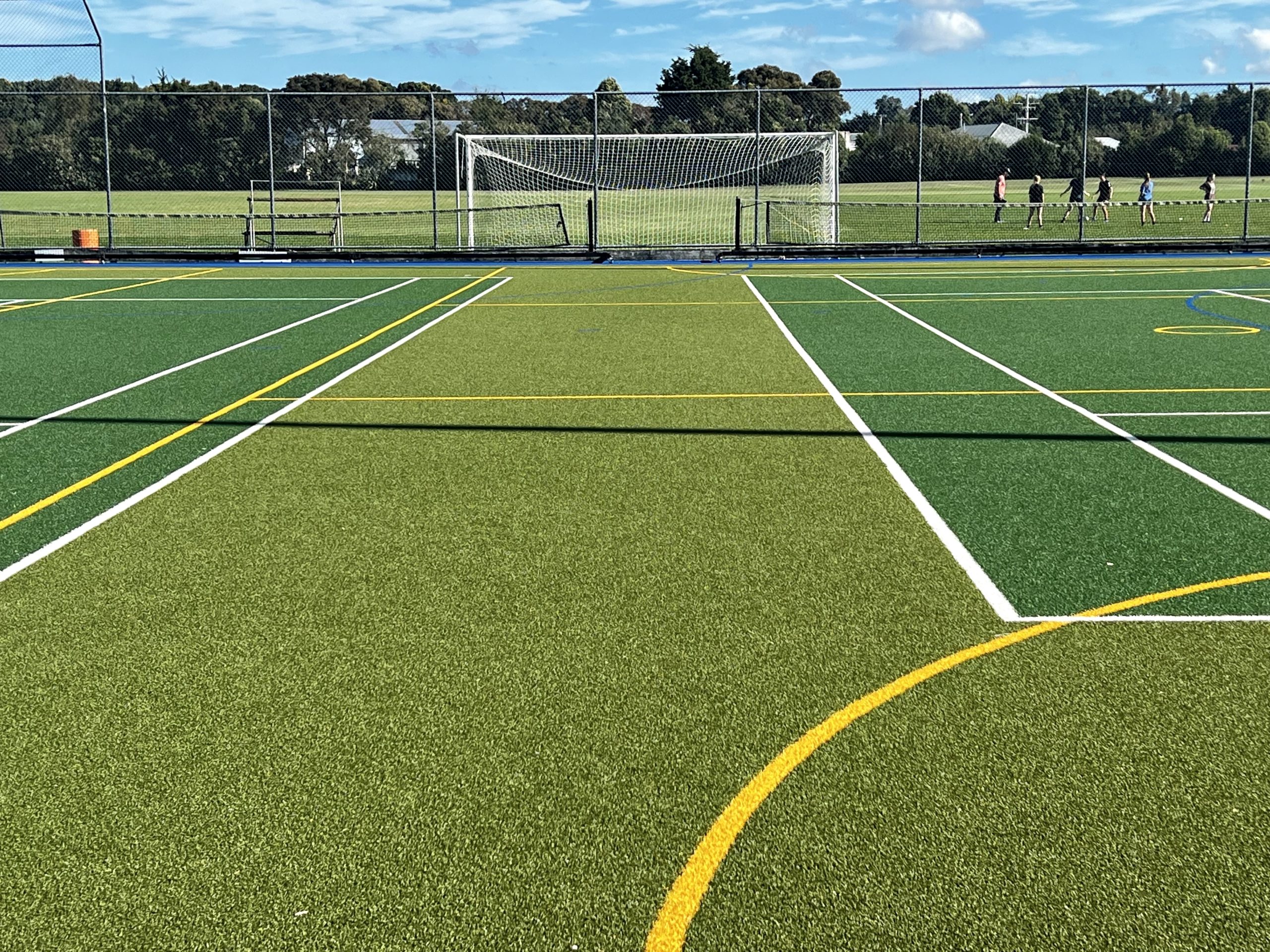
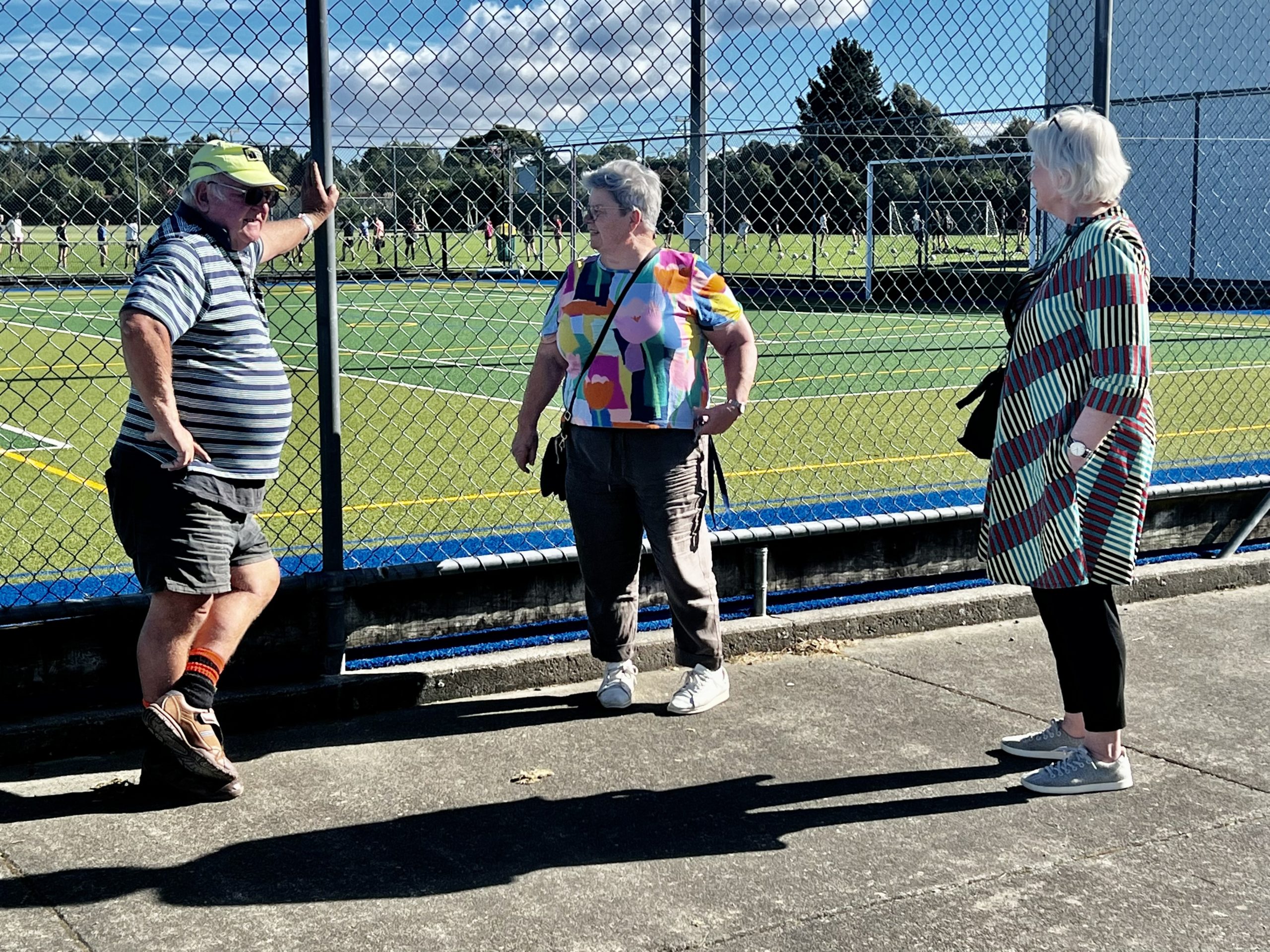
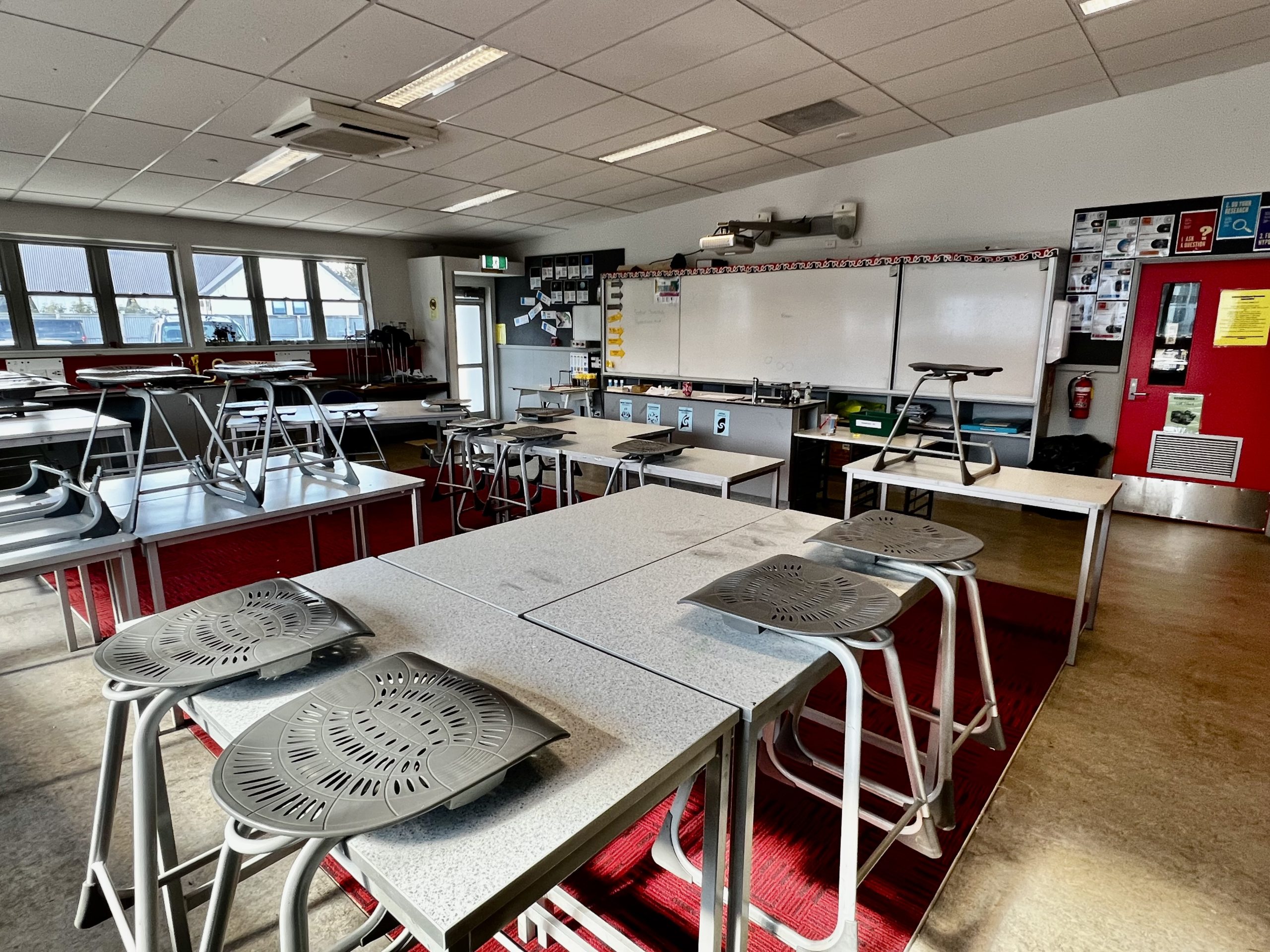
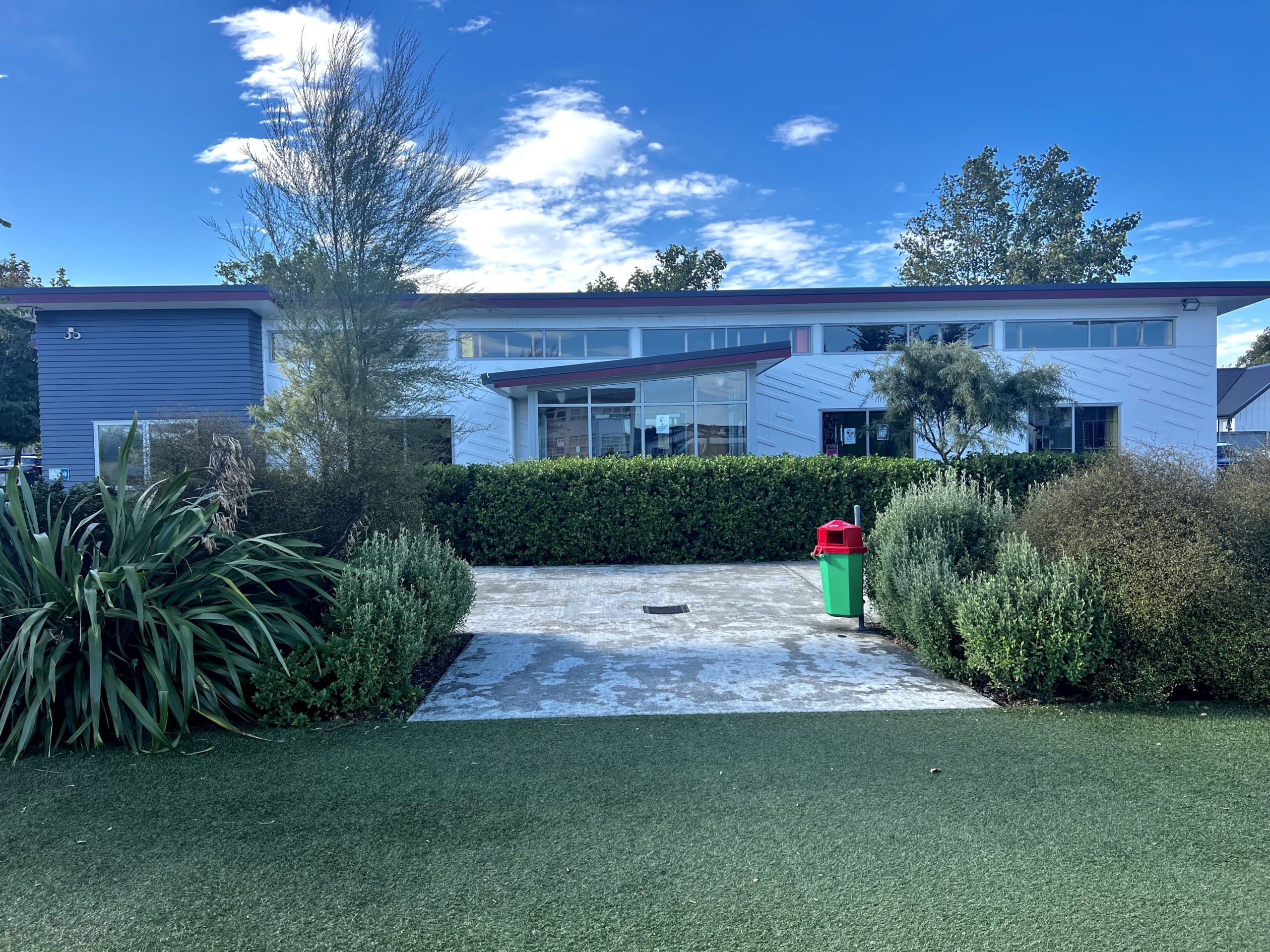
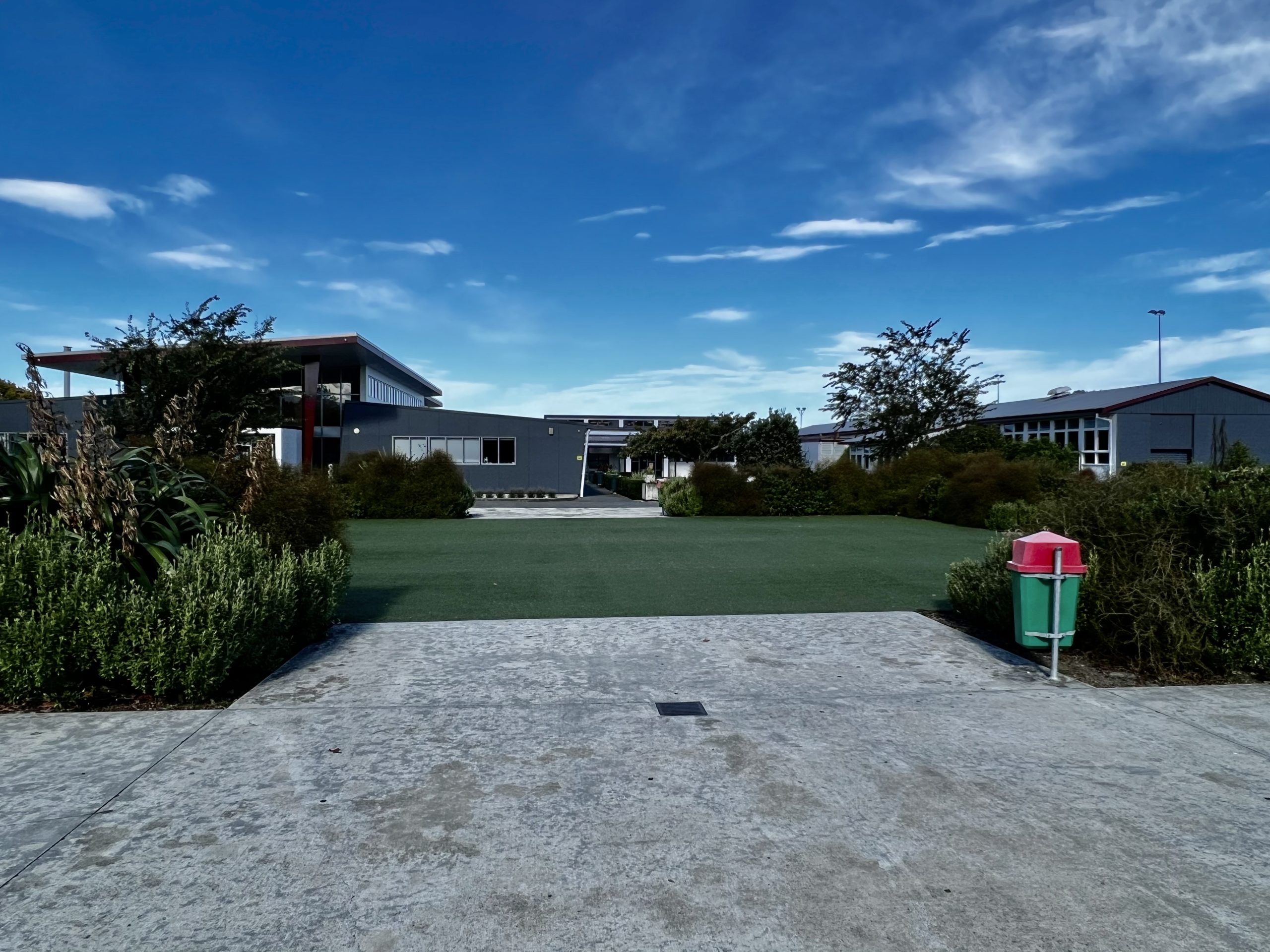
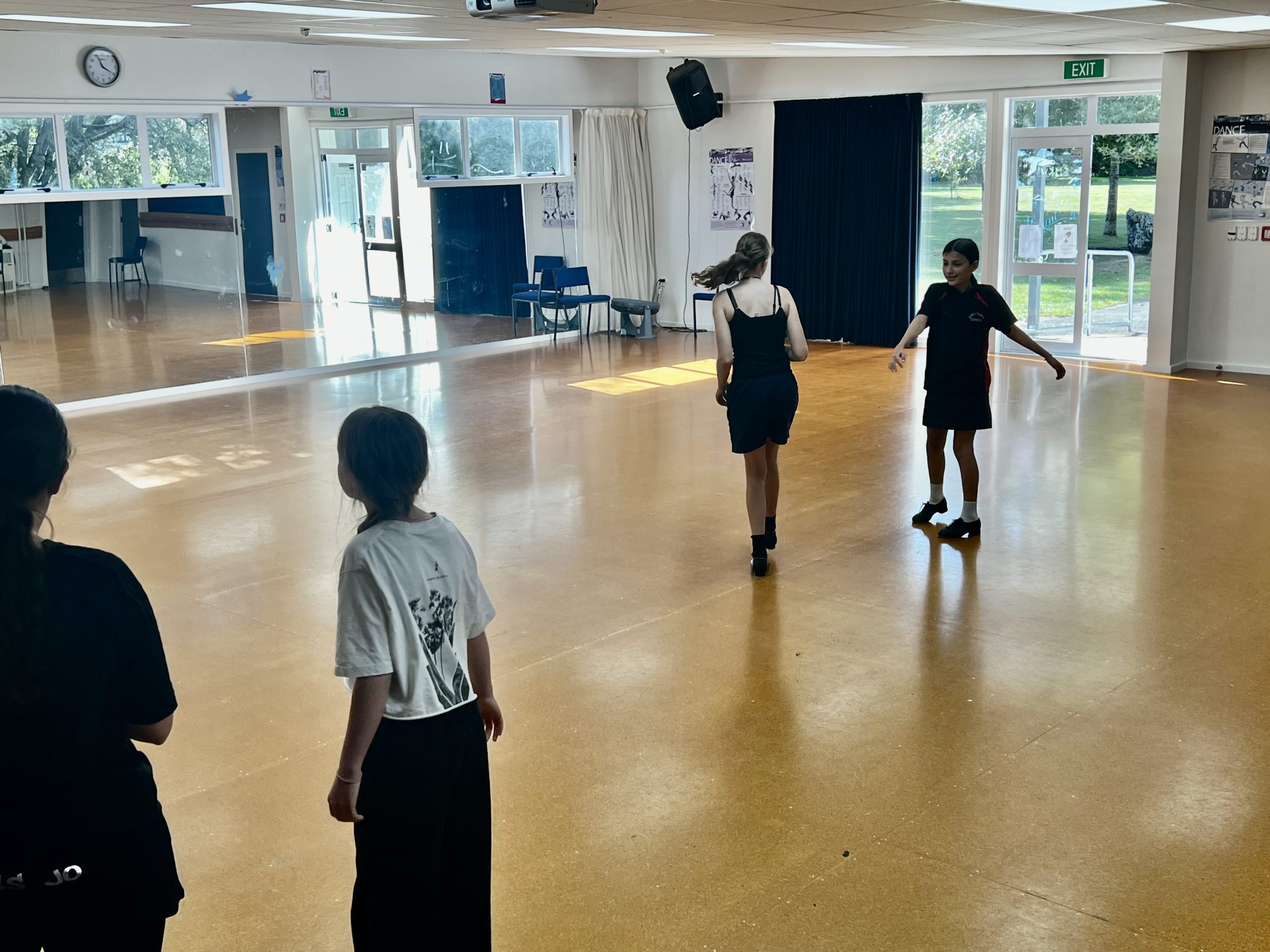
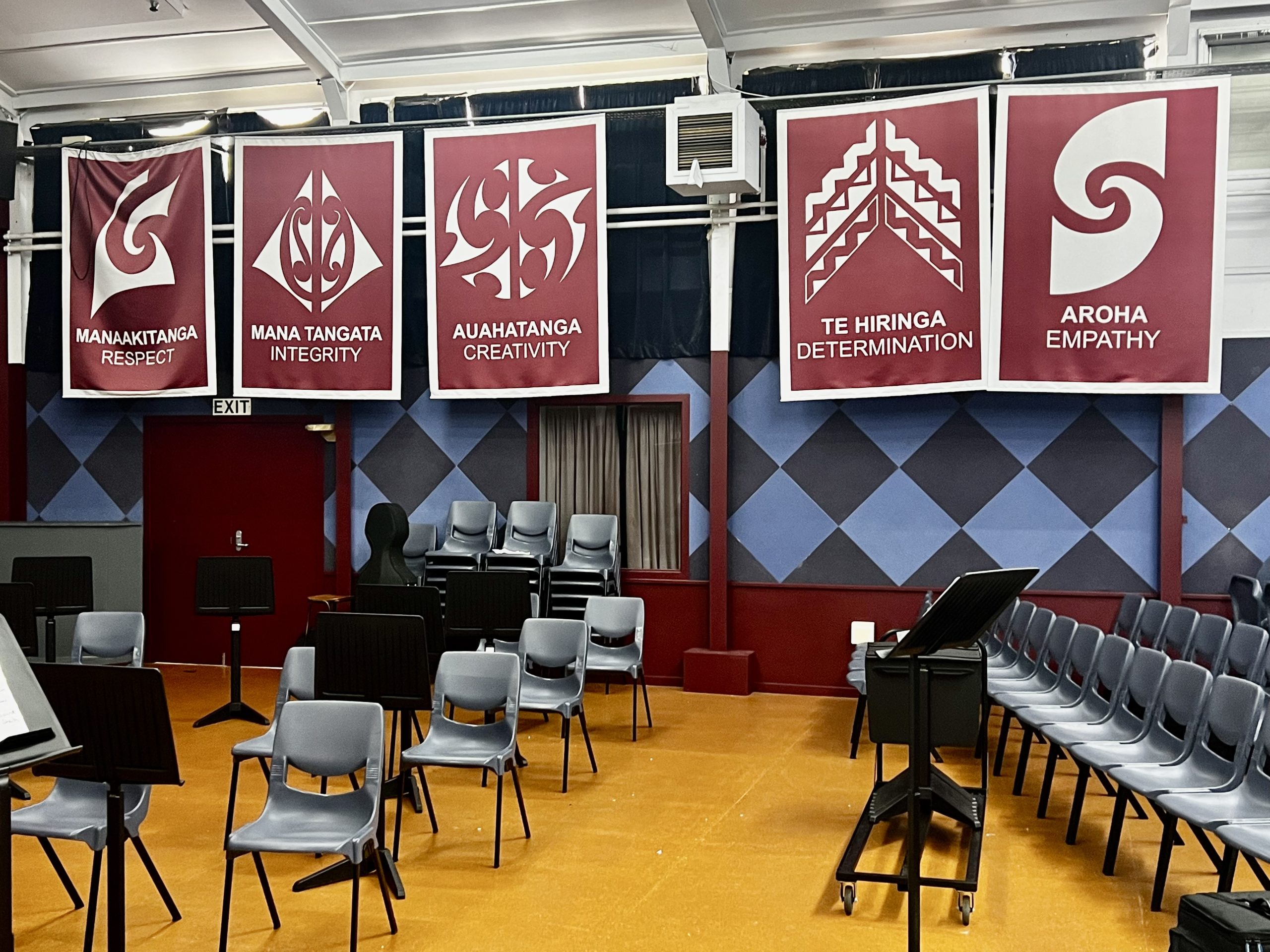
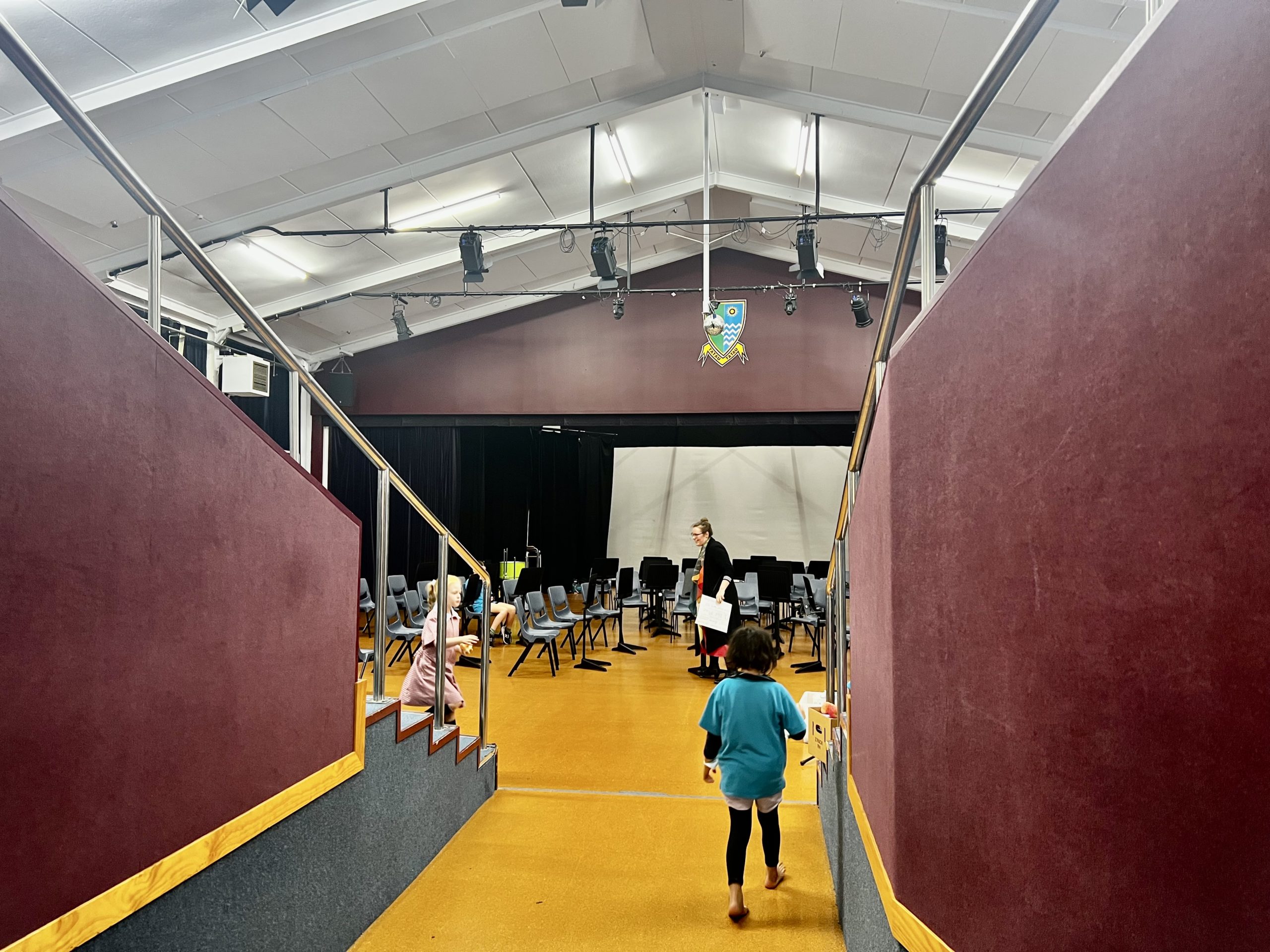
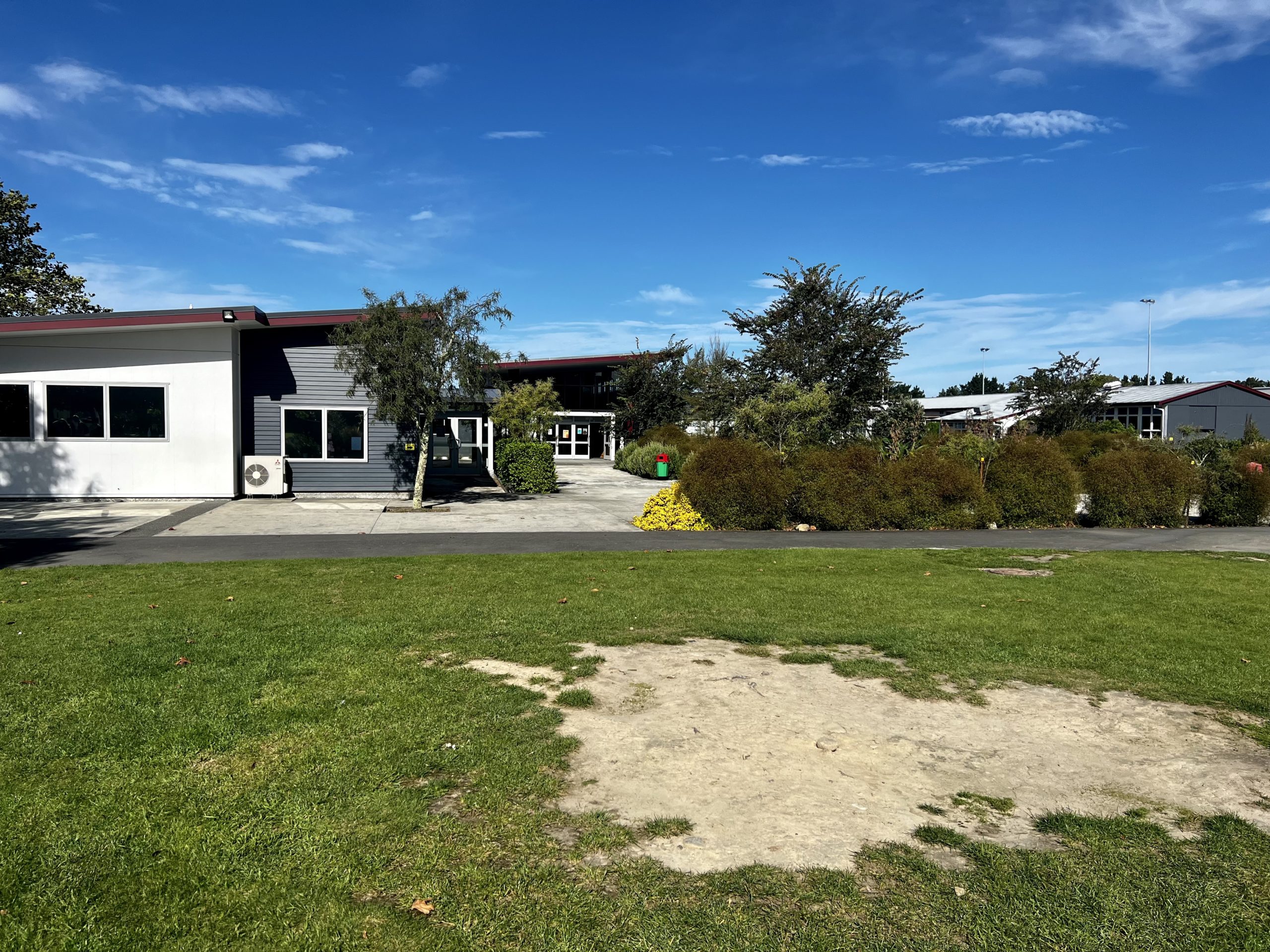
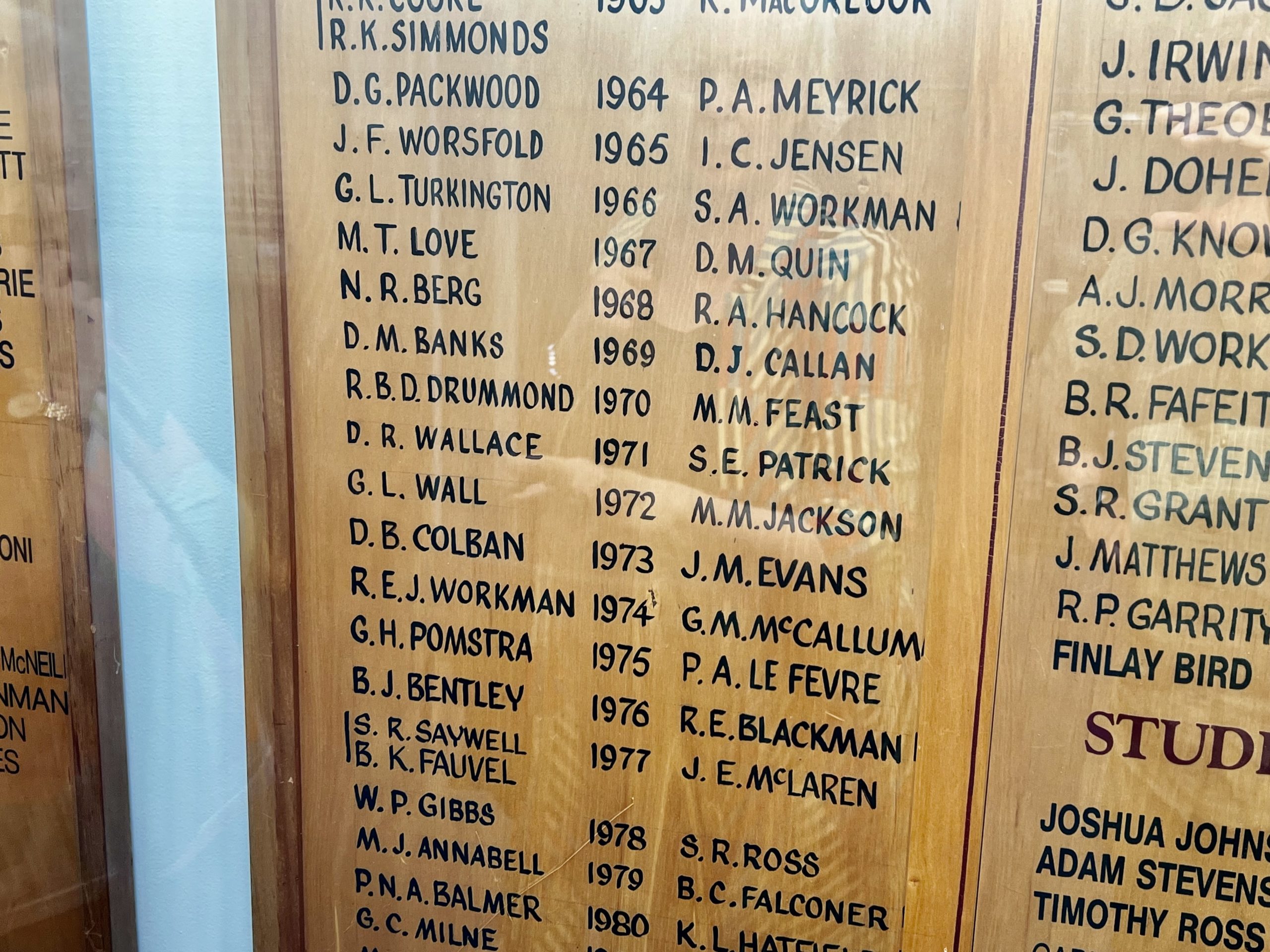
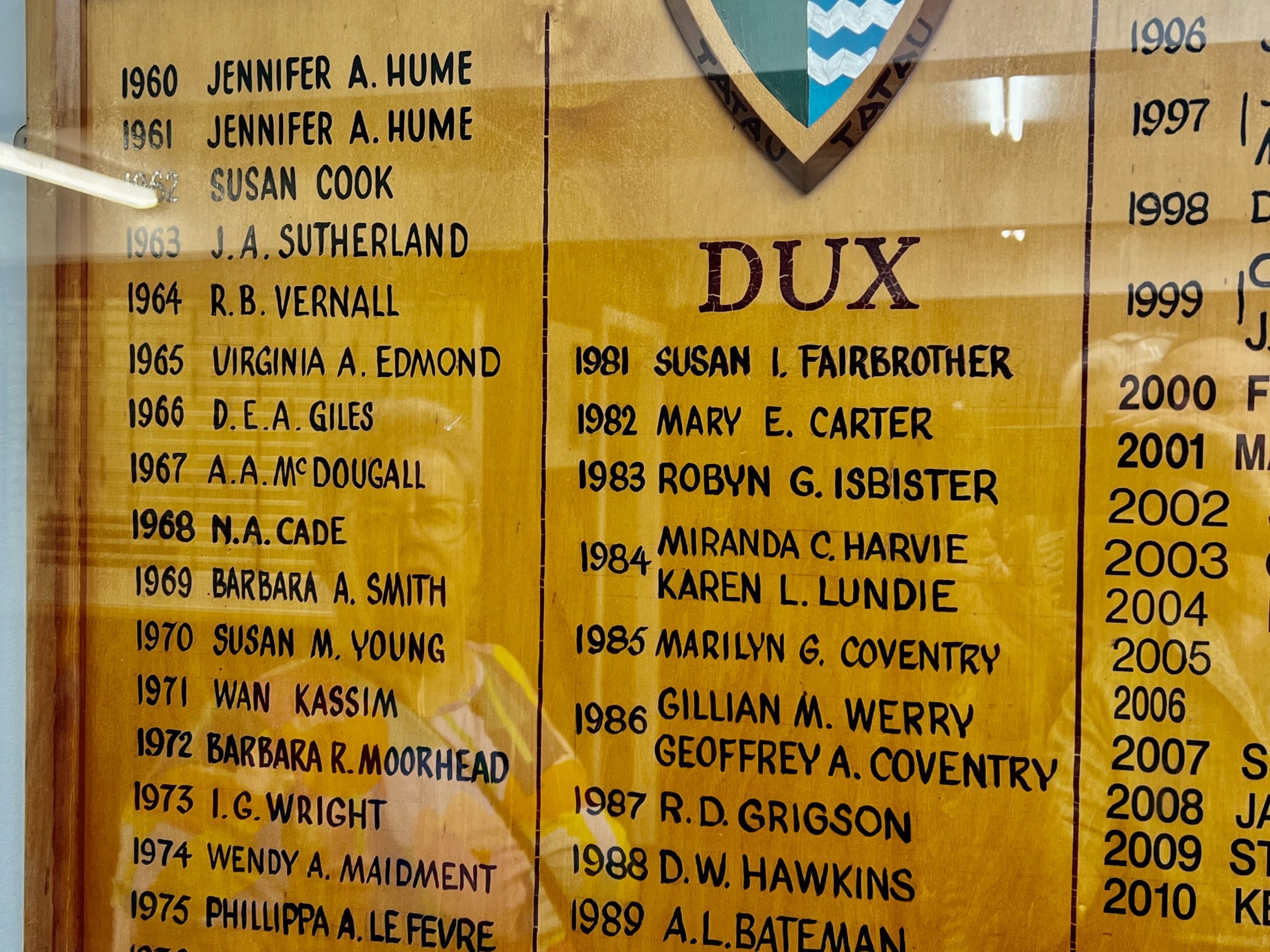
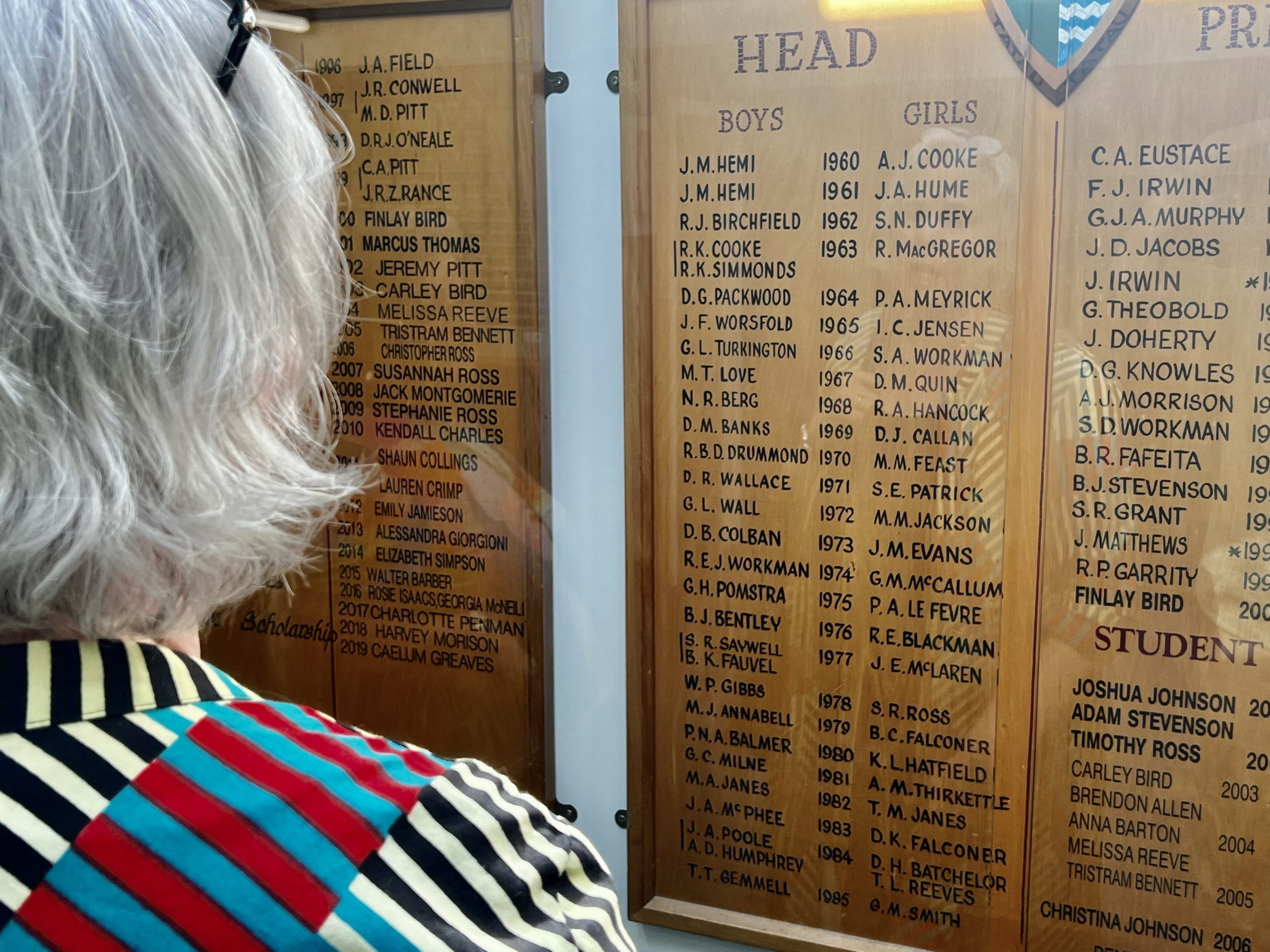
Greytown
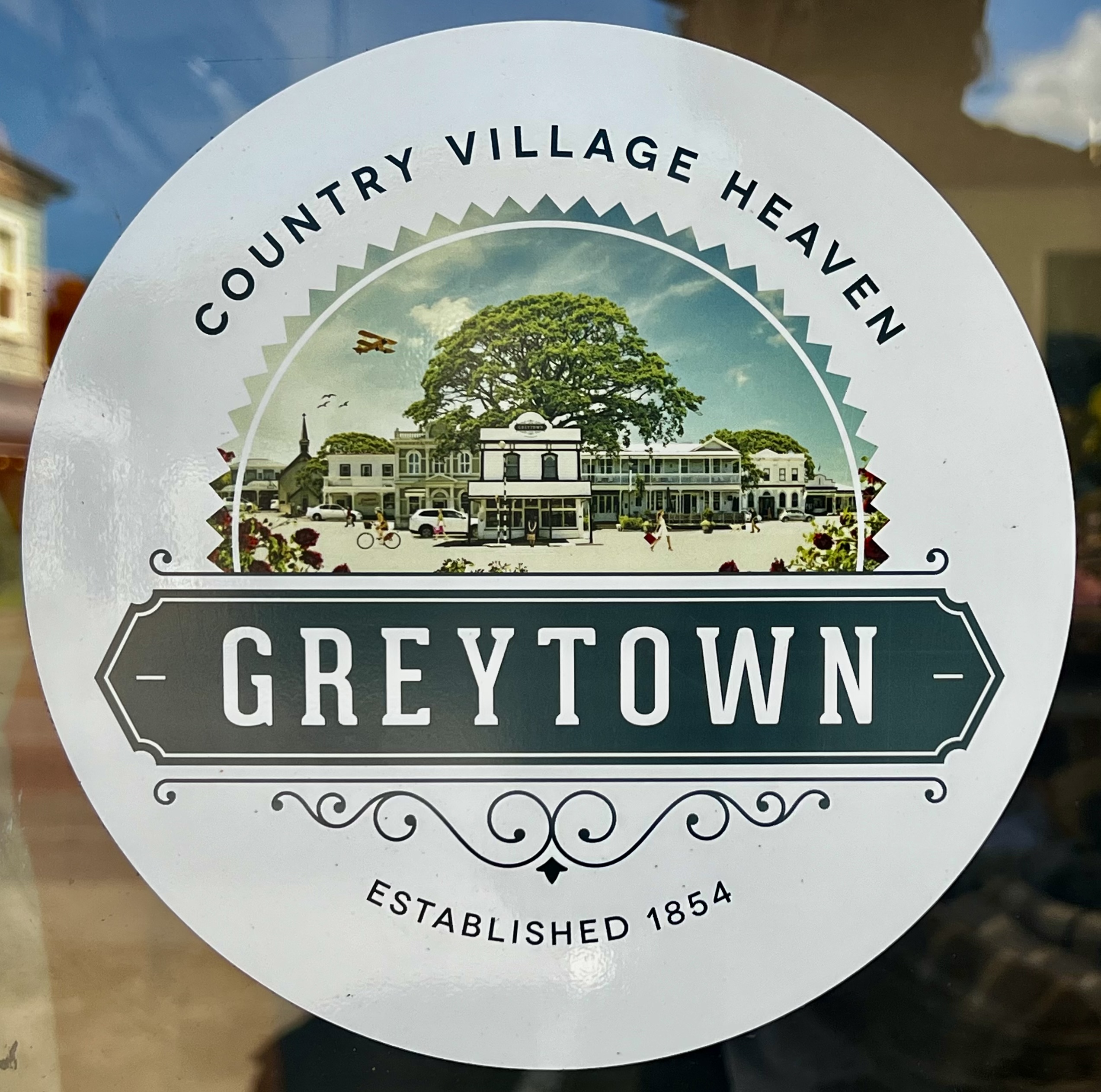
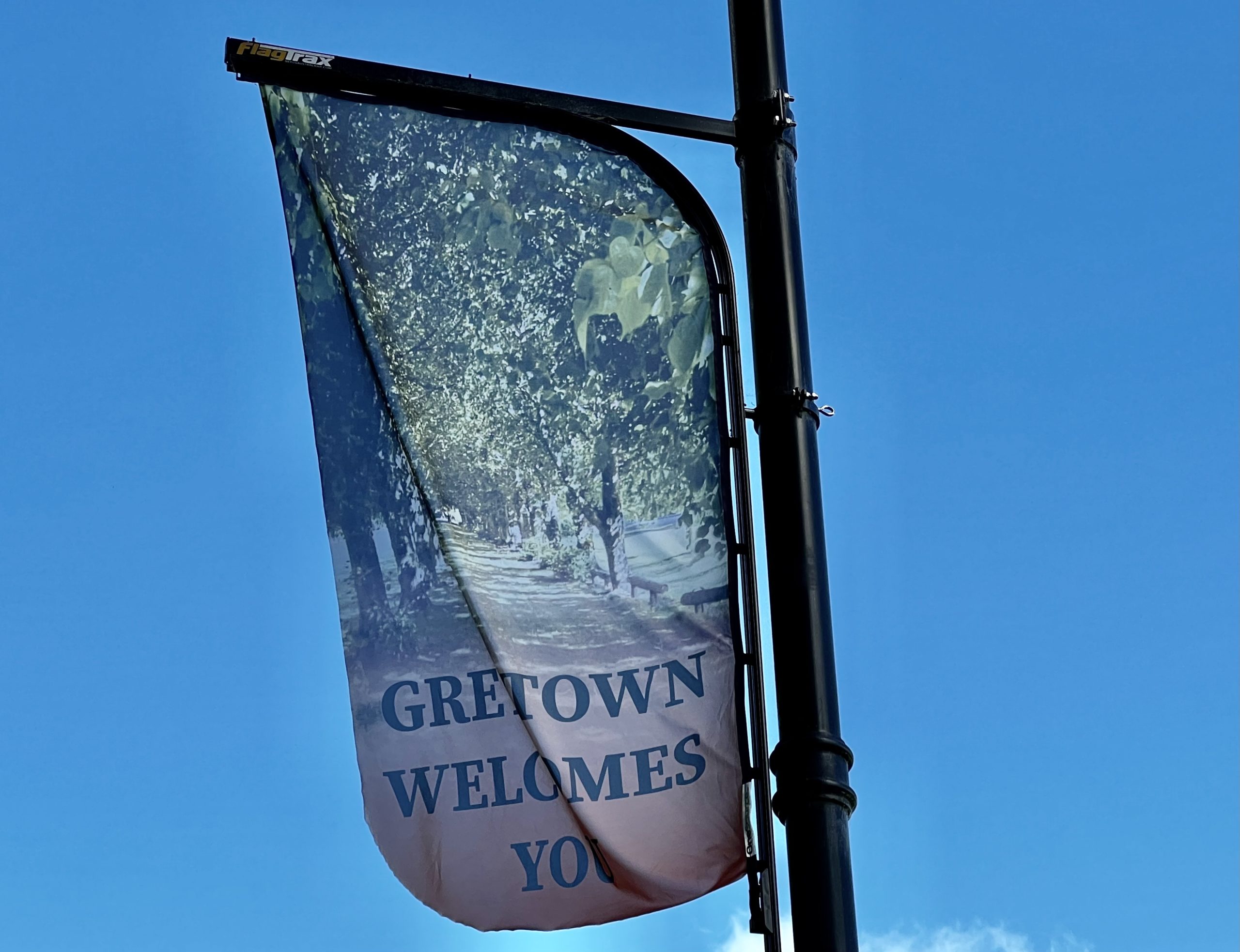
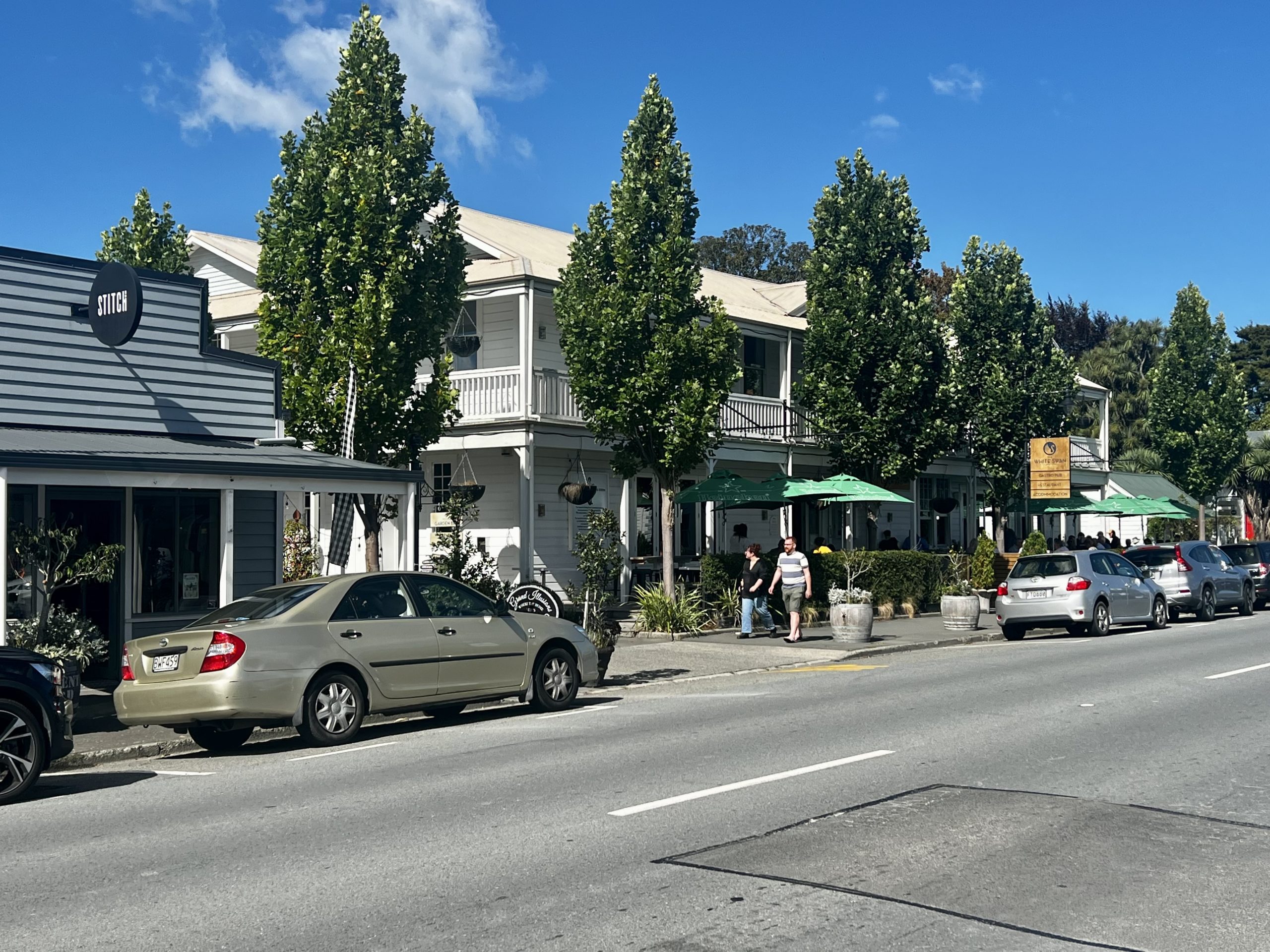
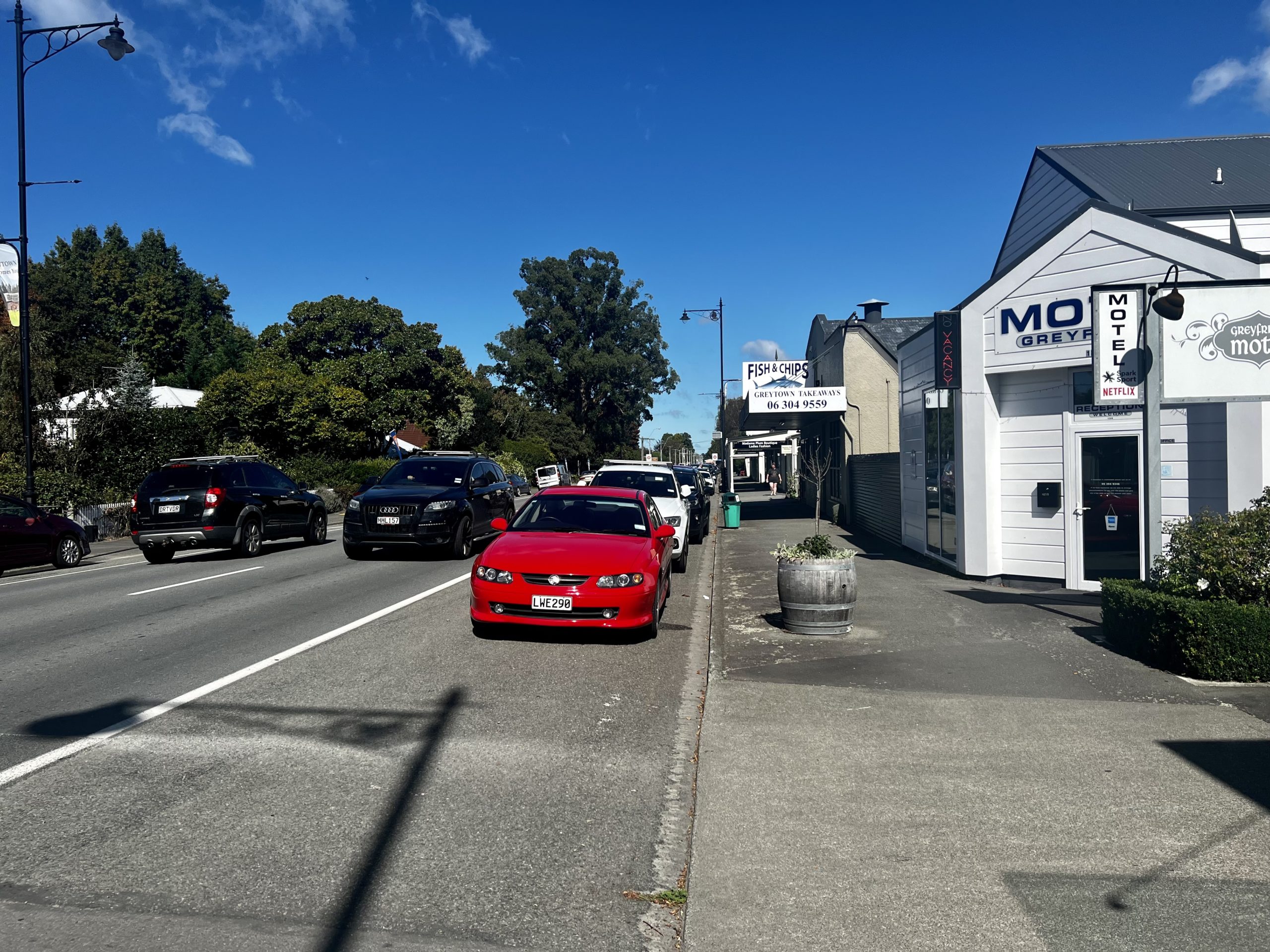
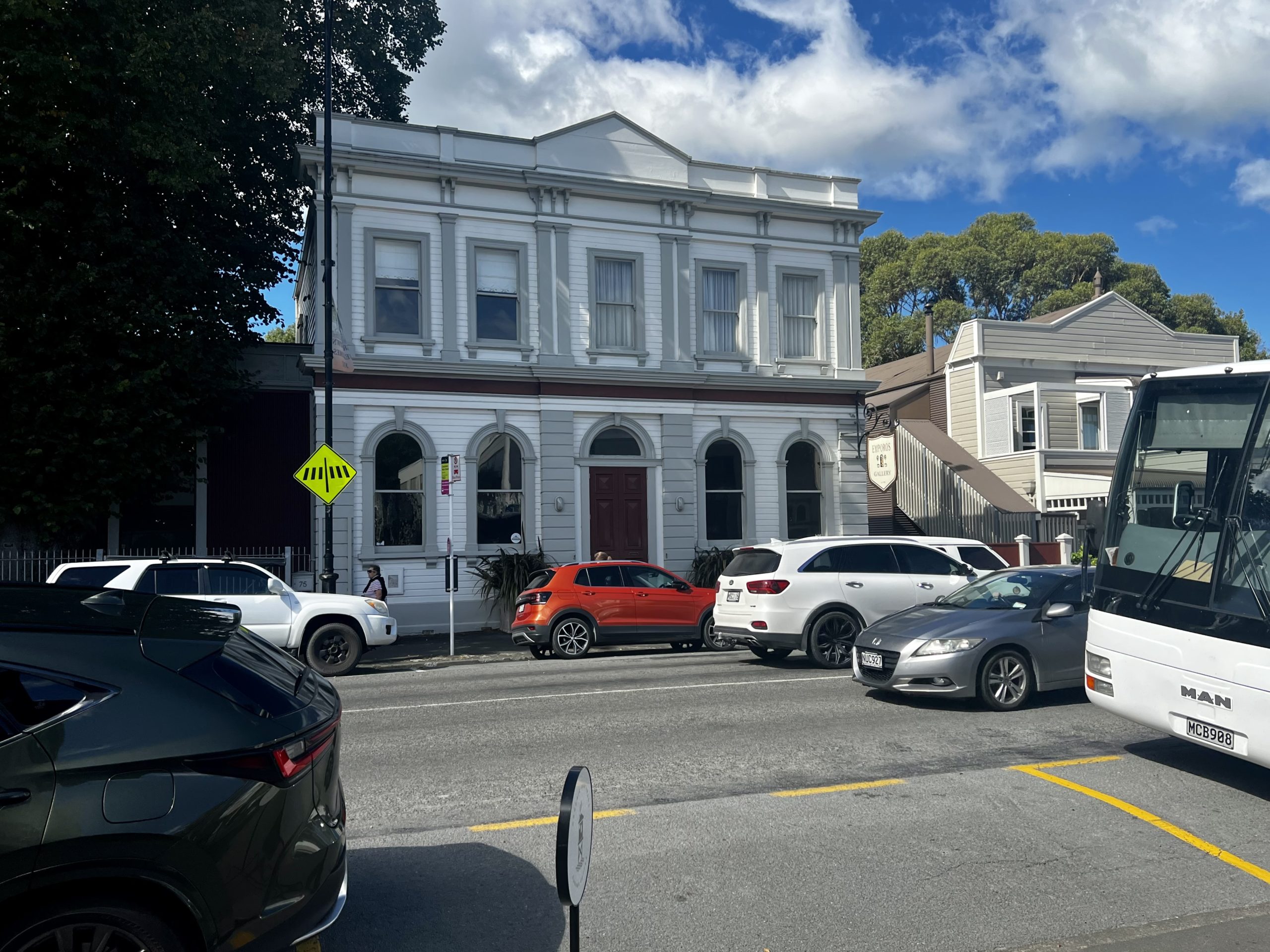
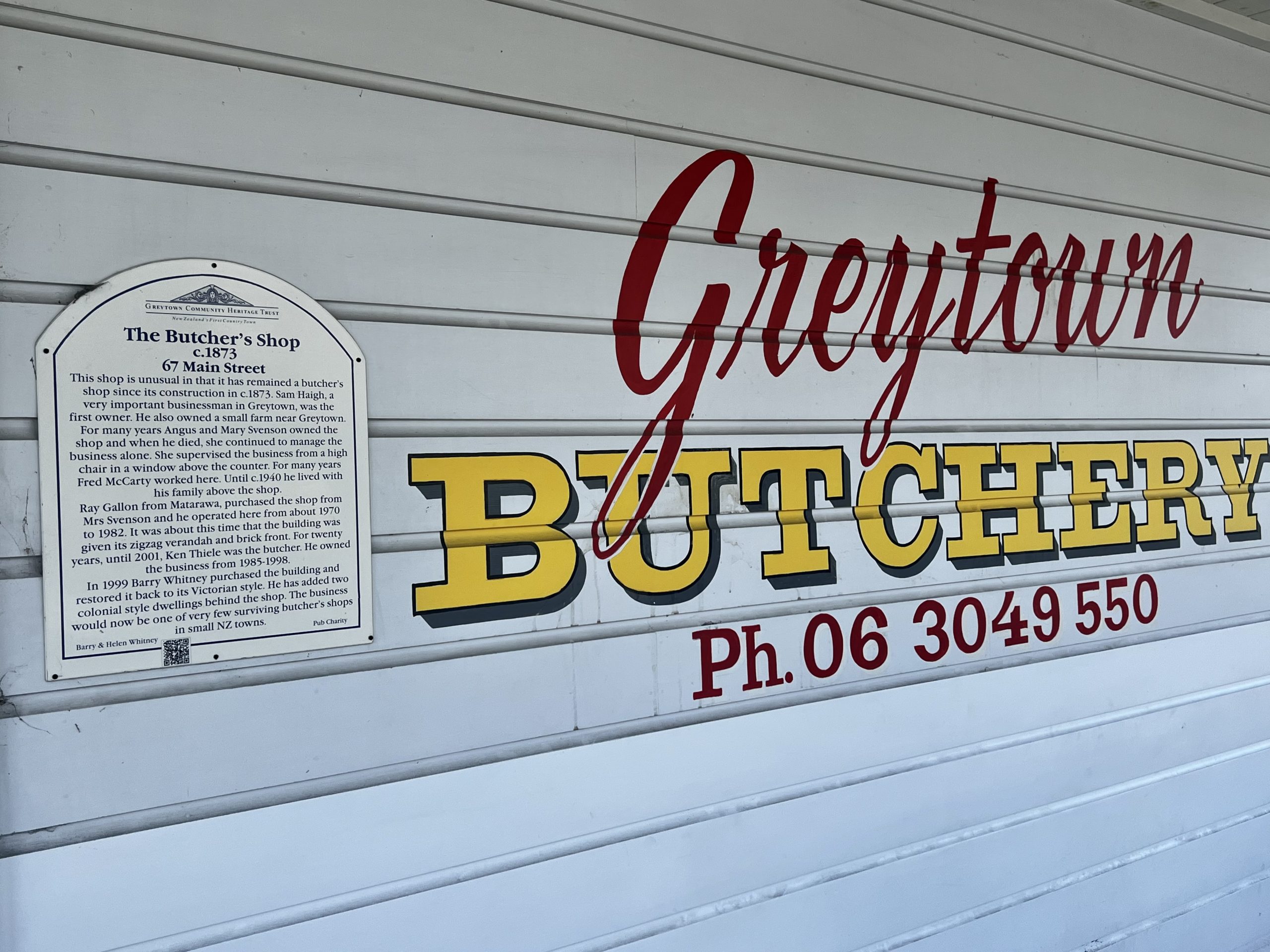
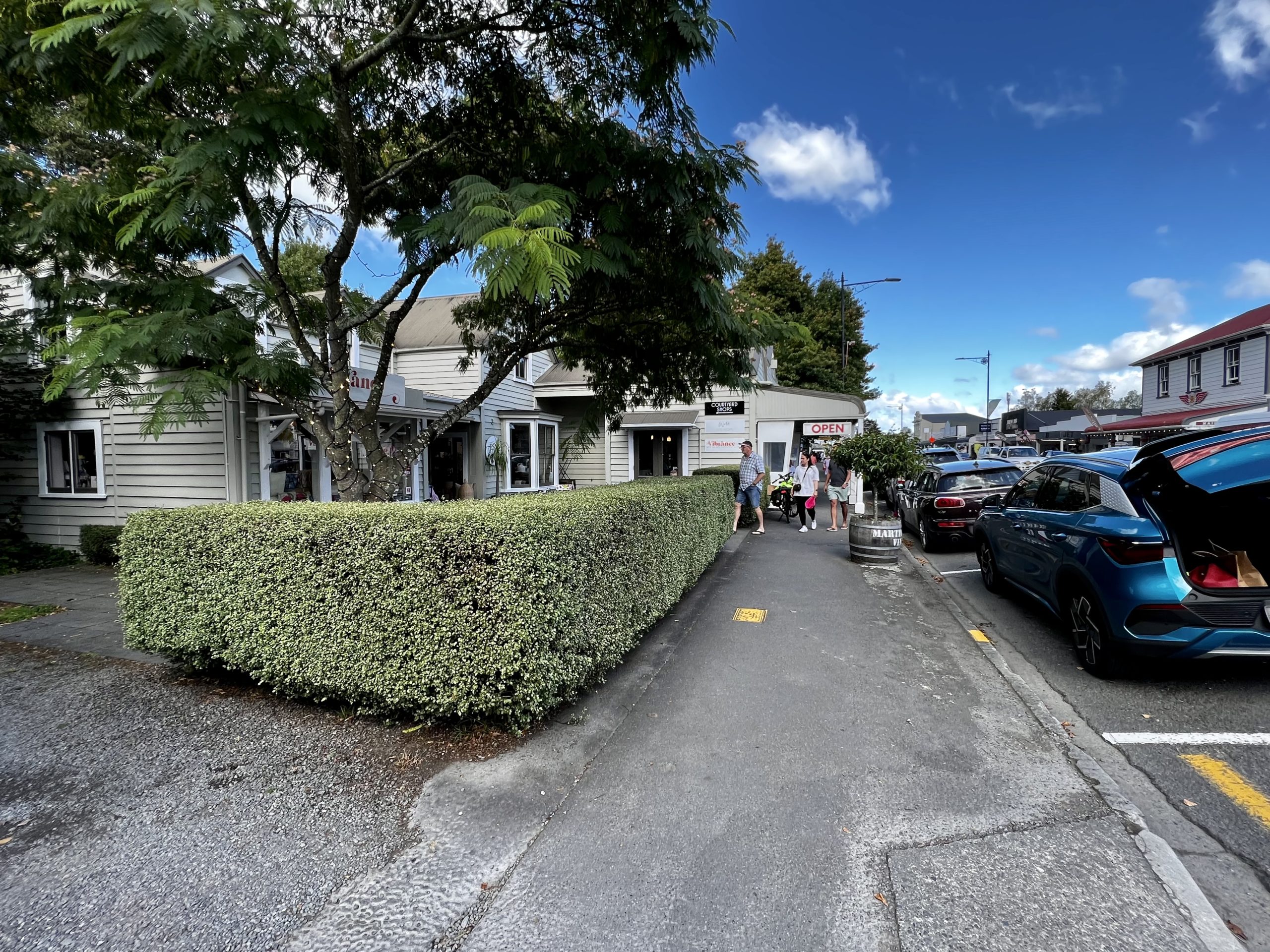
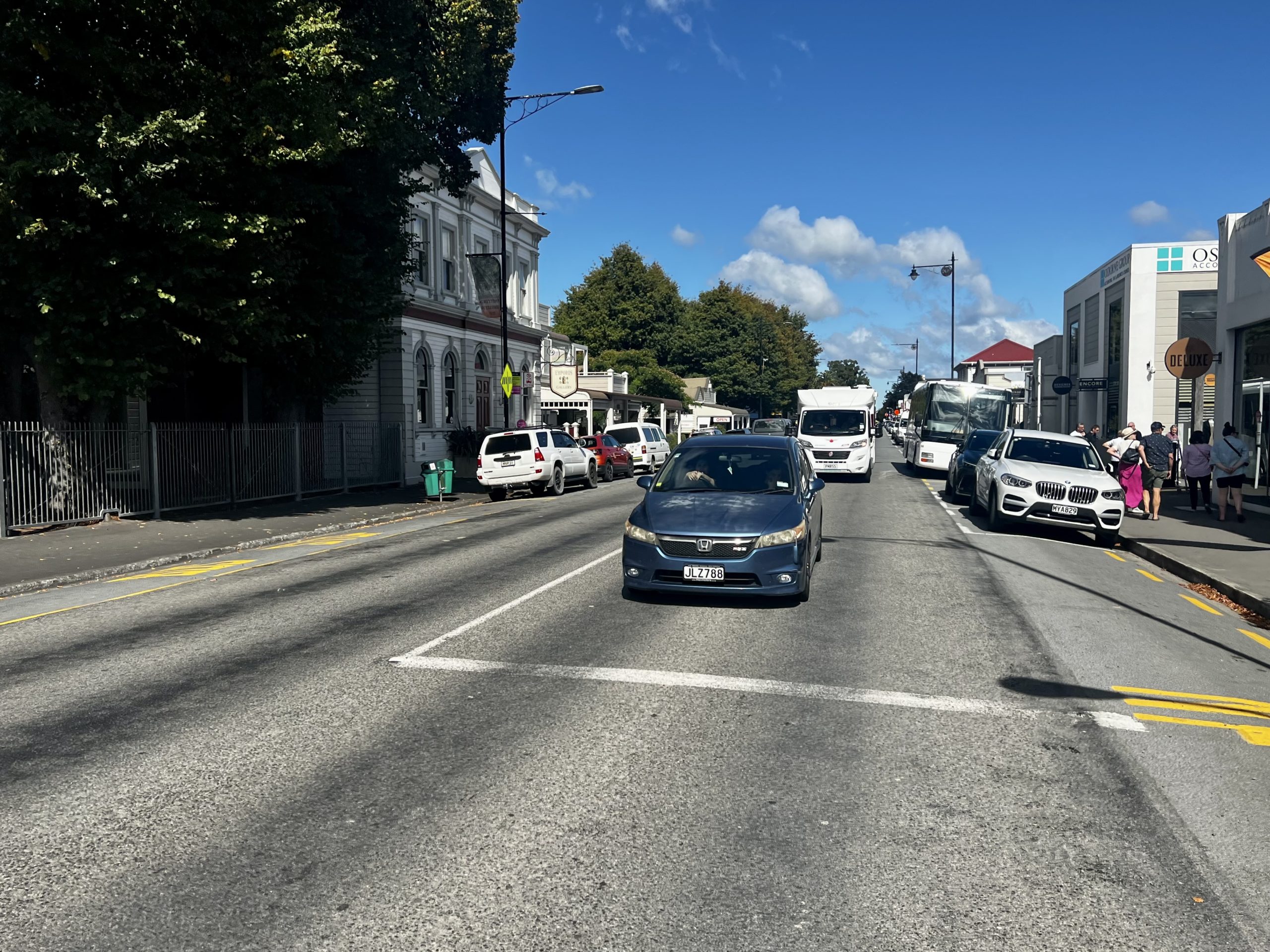
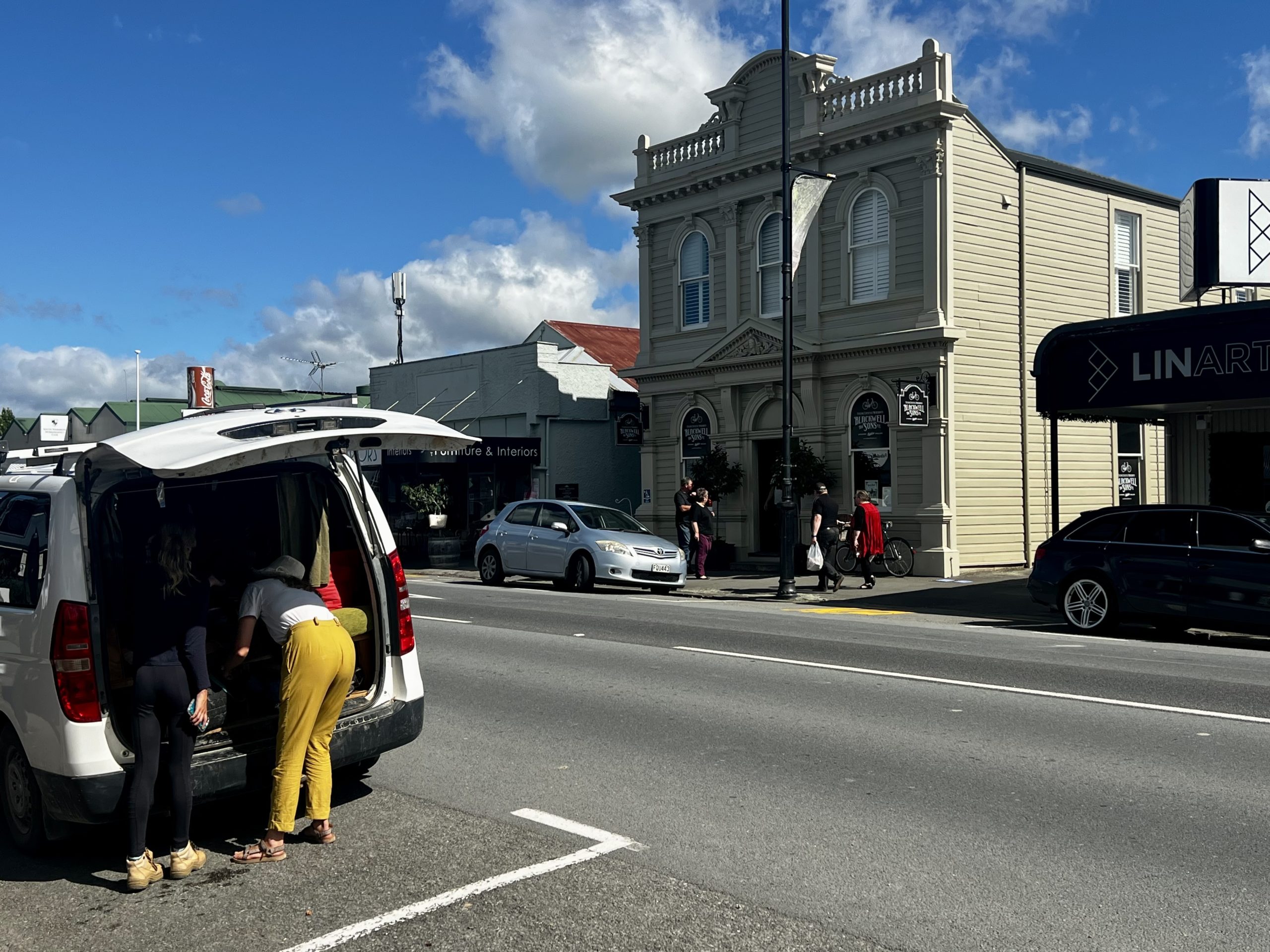
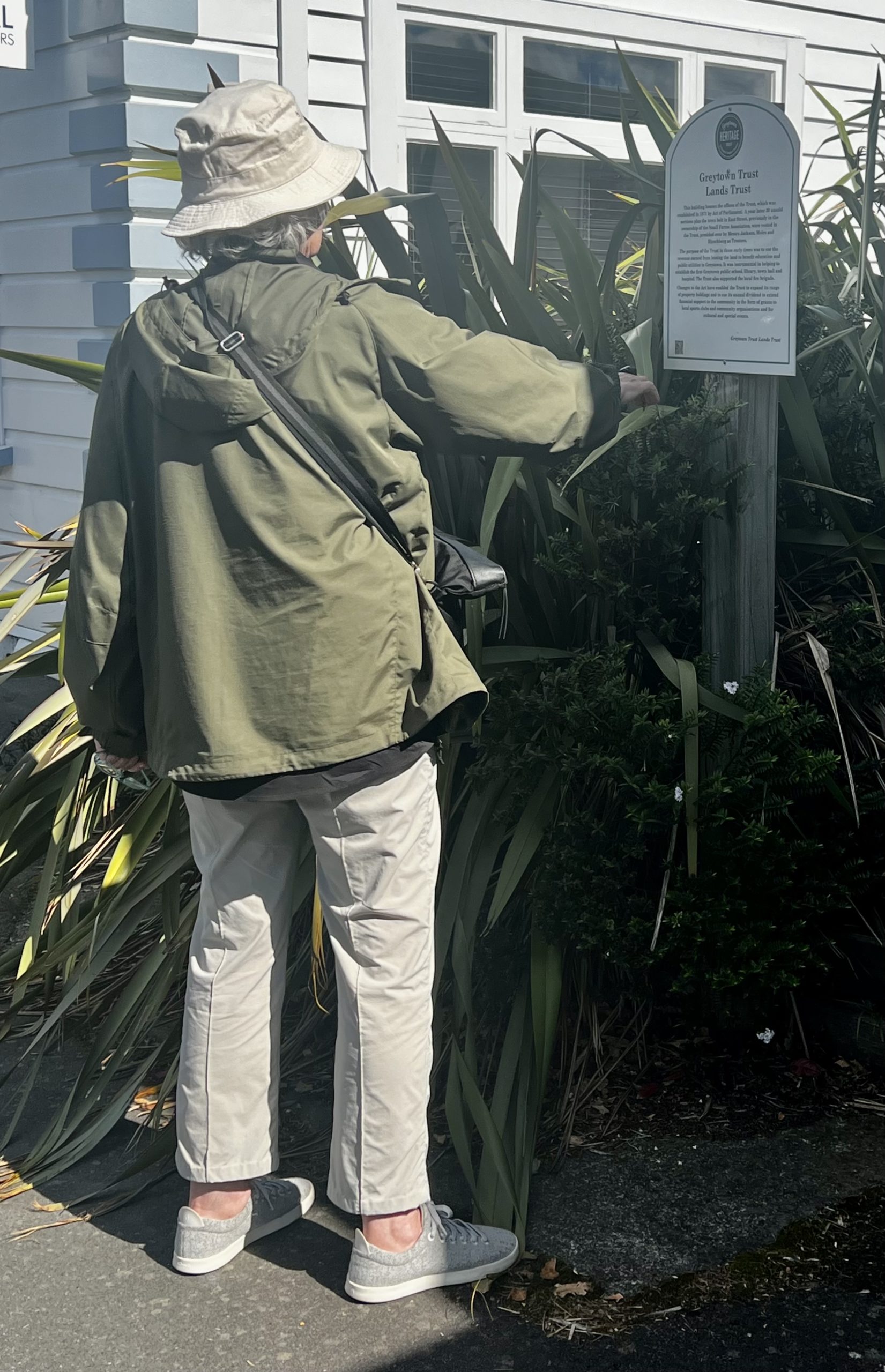
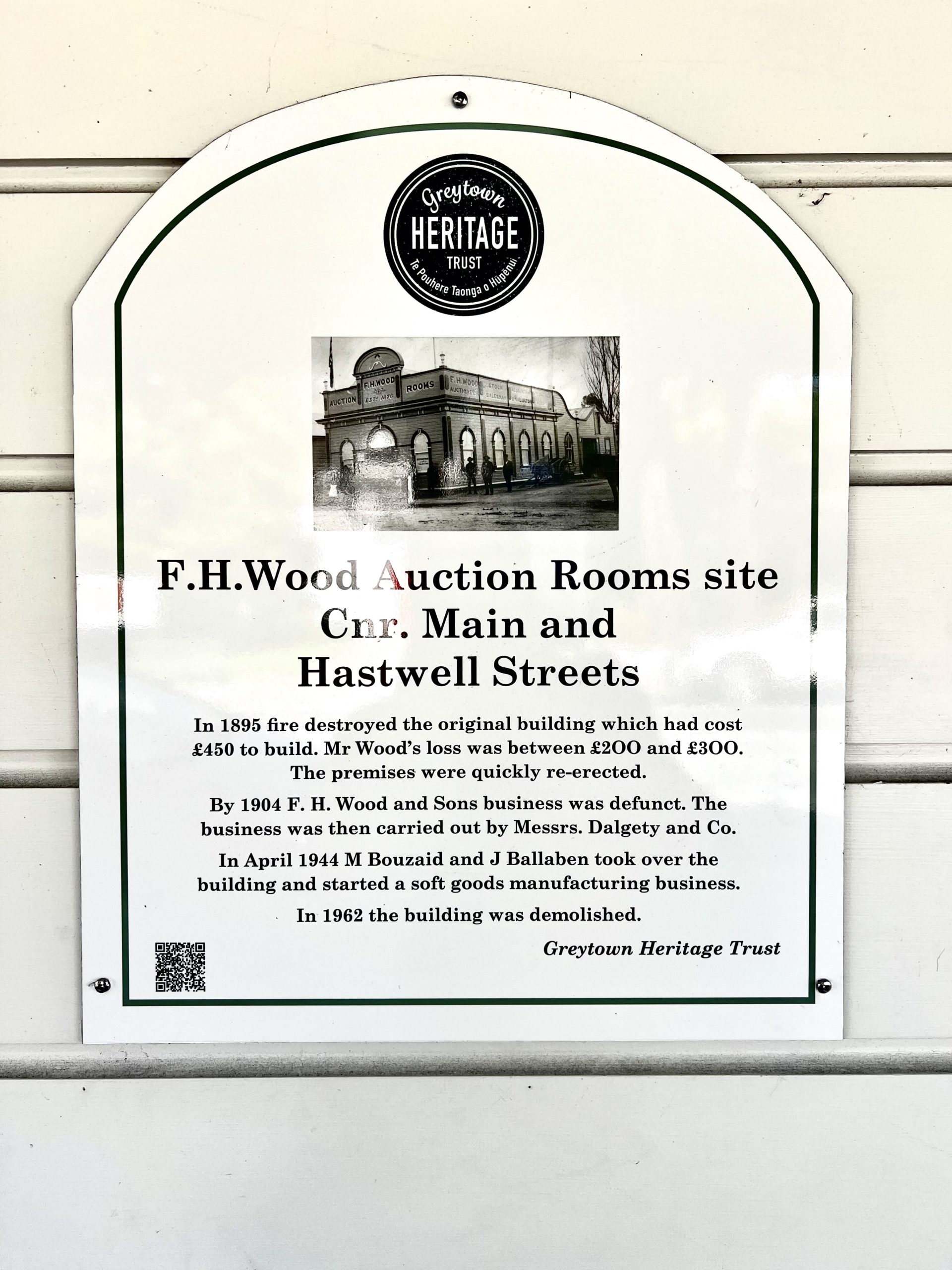
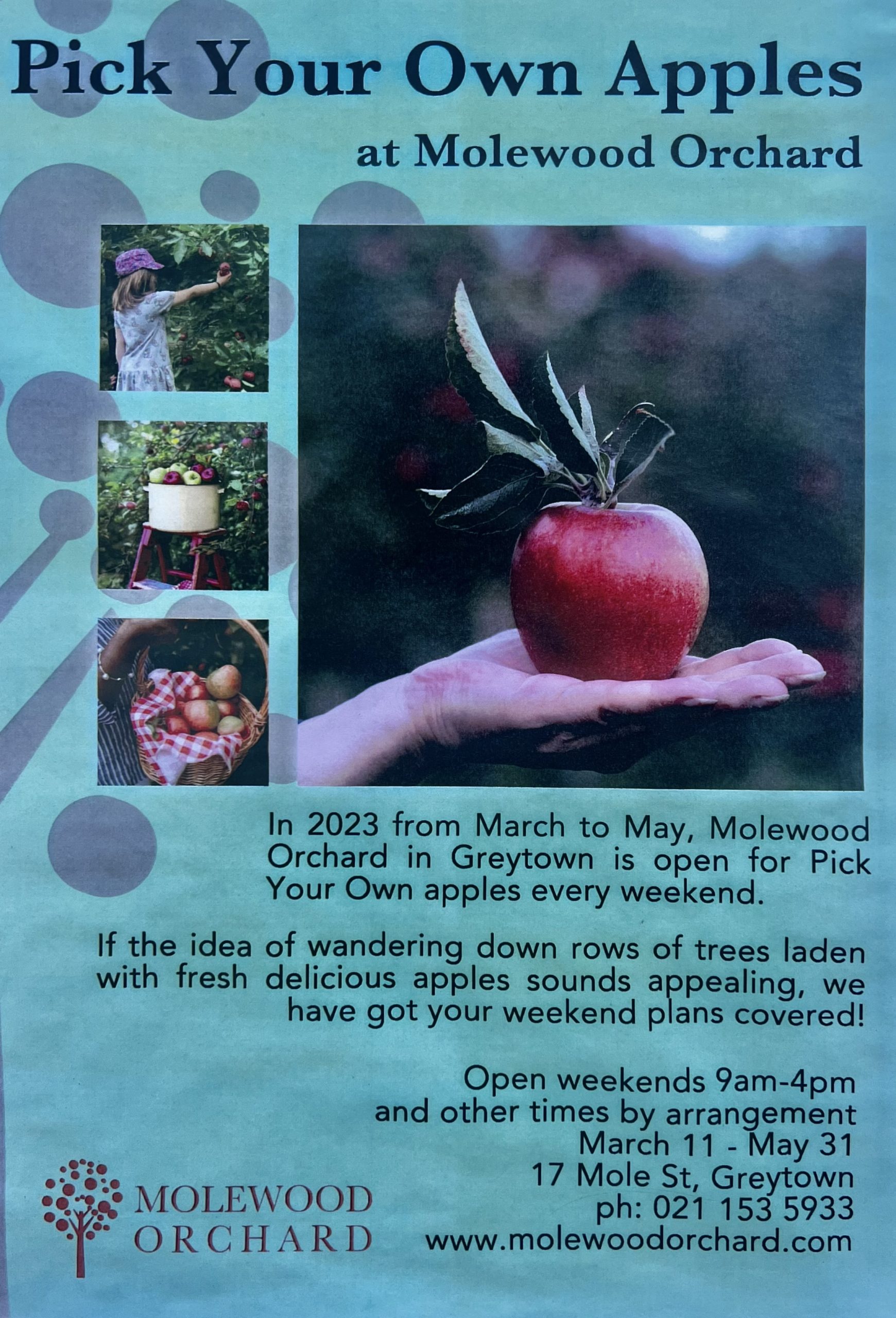

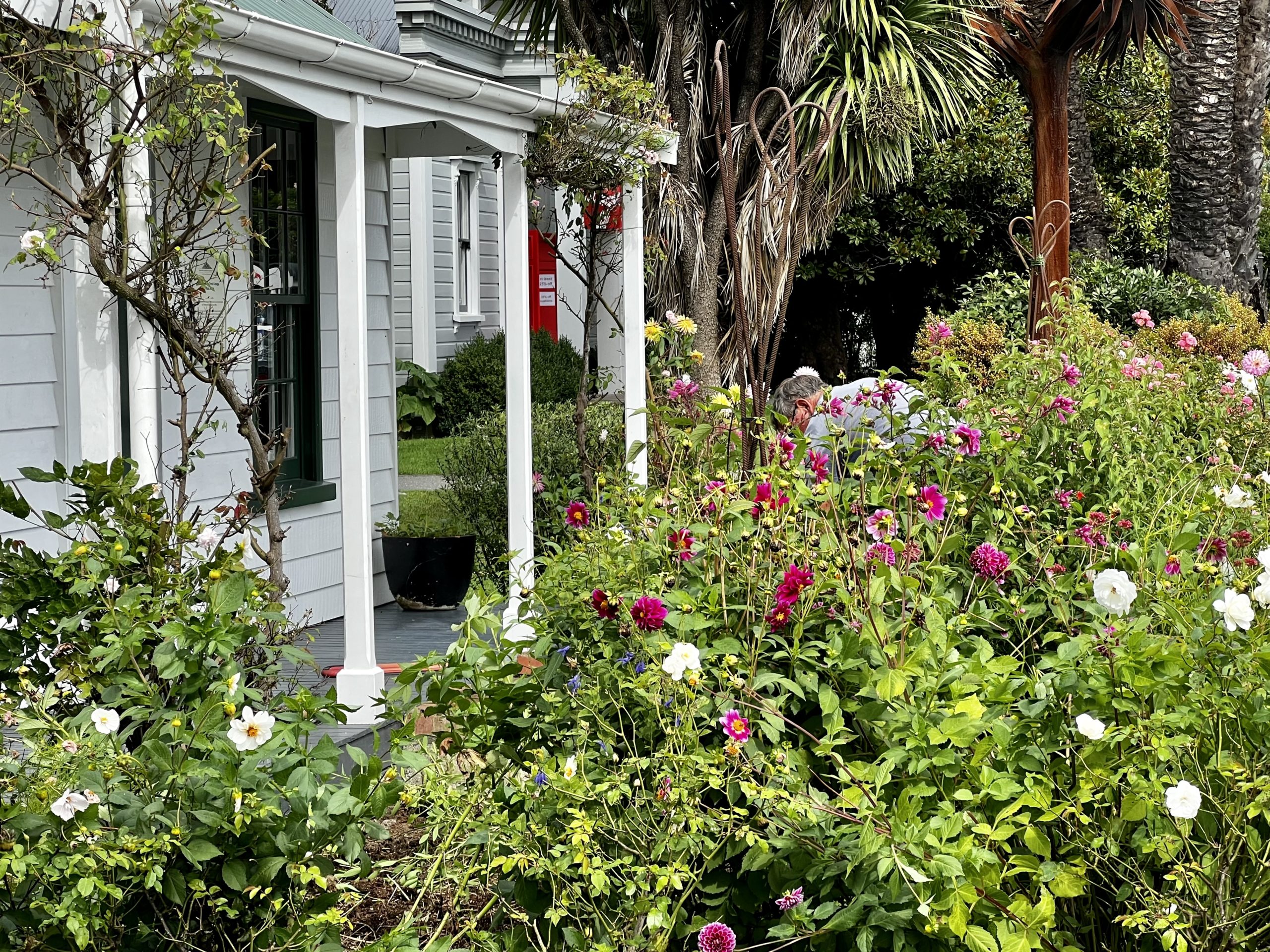
An Eye on Fashion
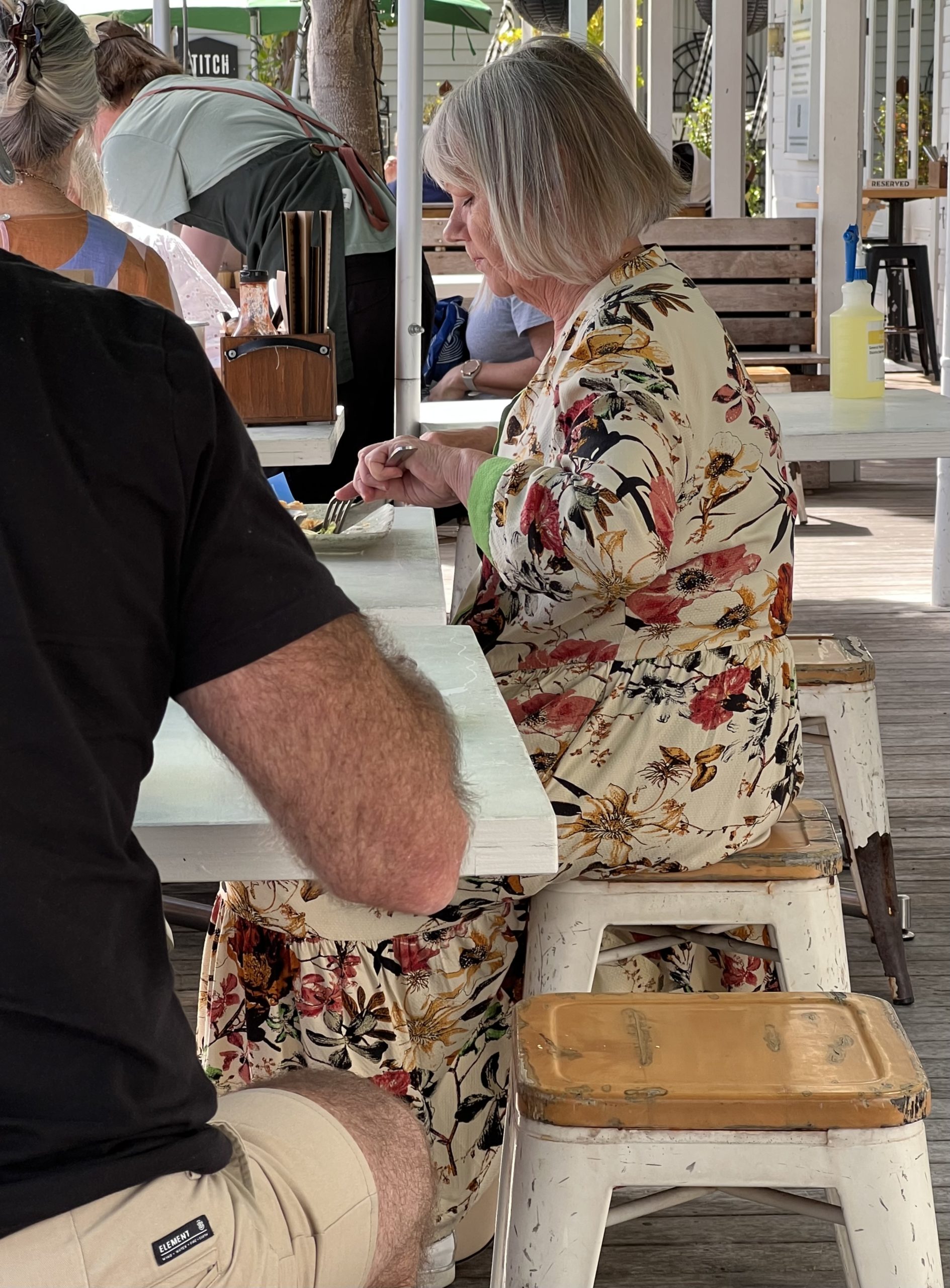
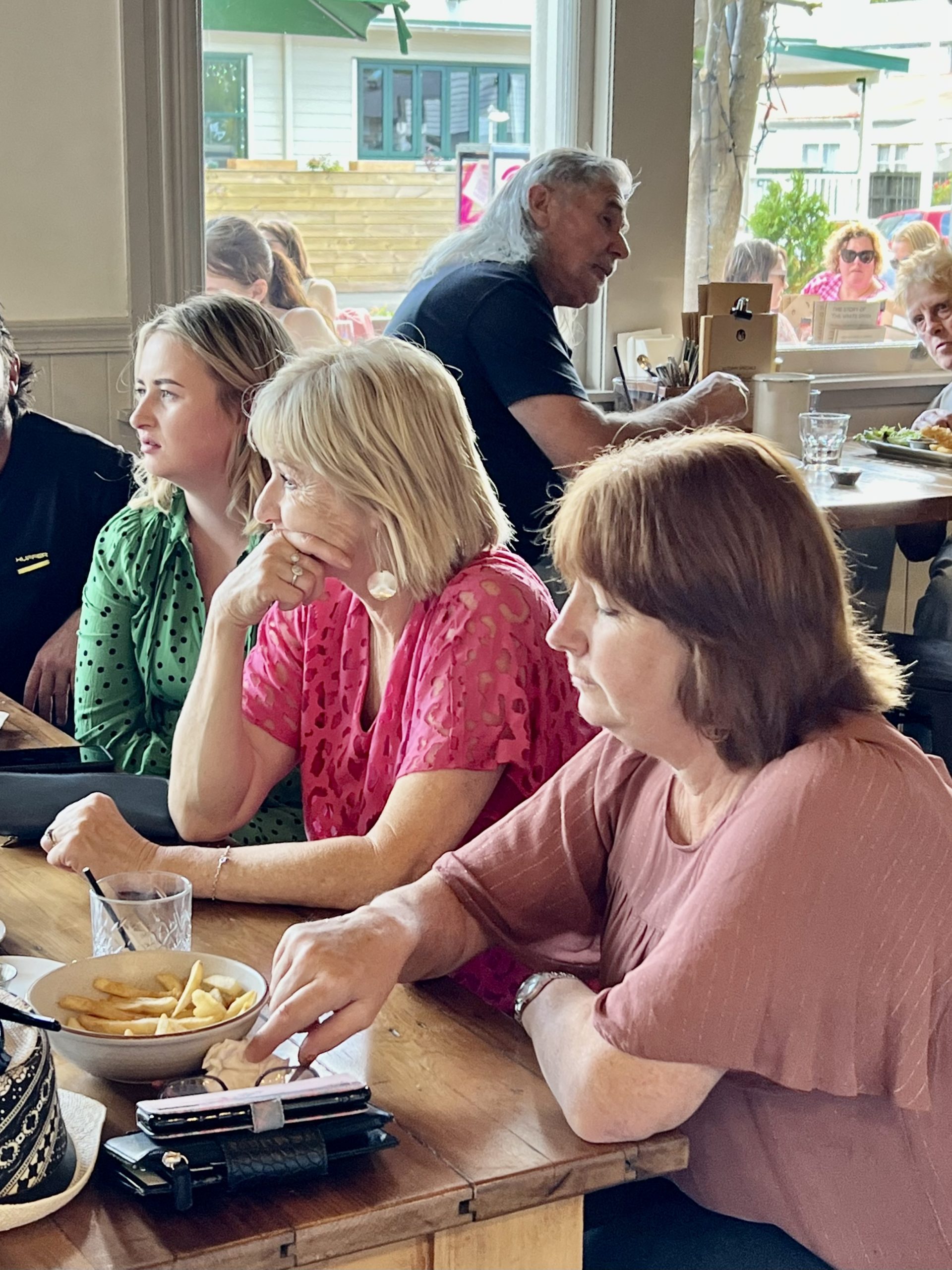
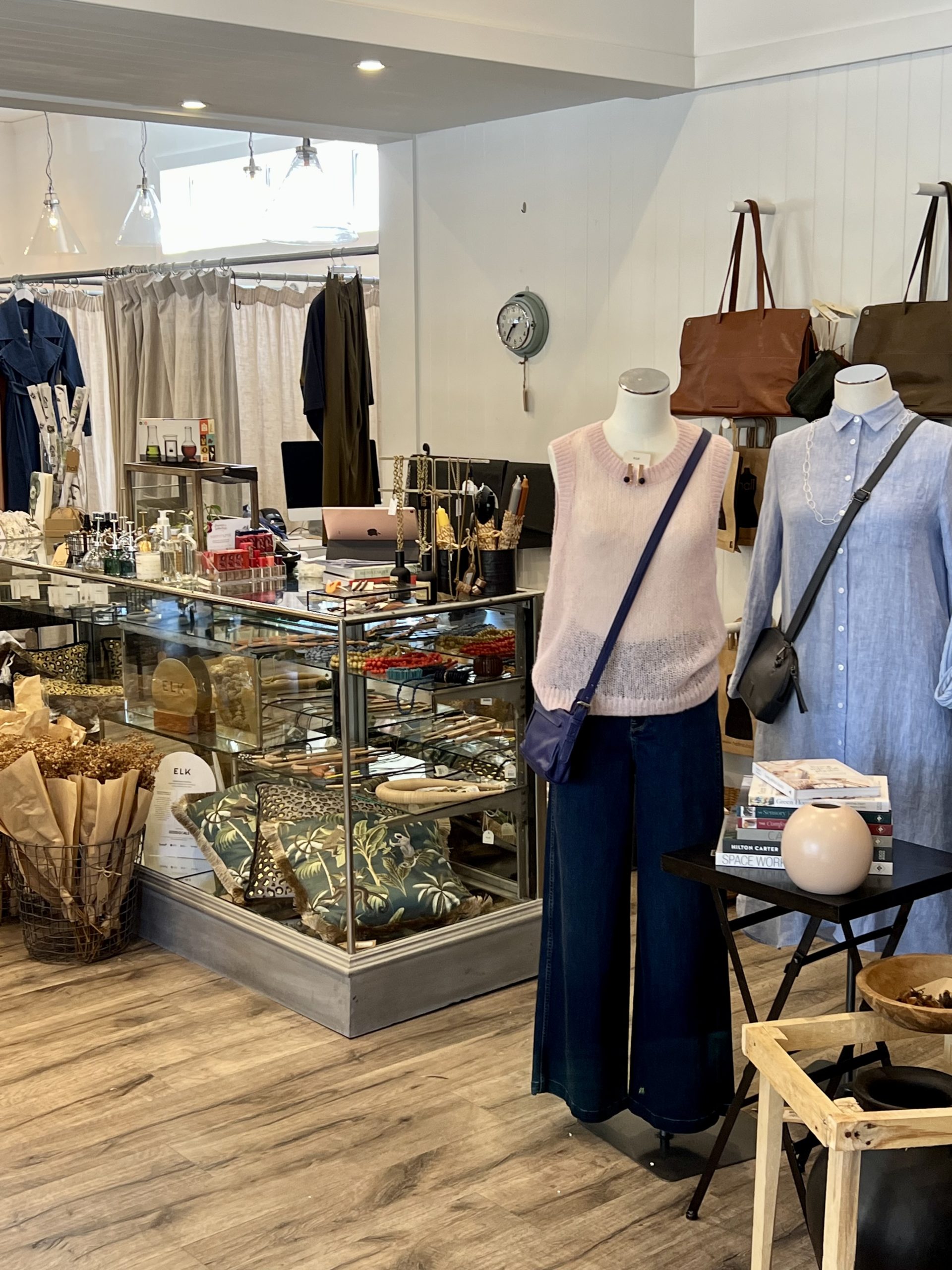
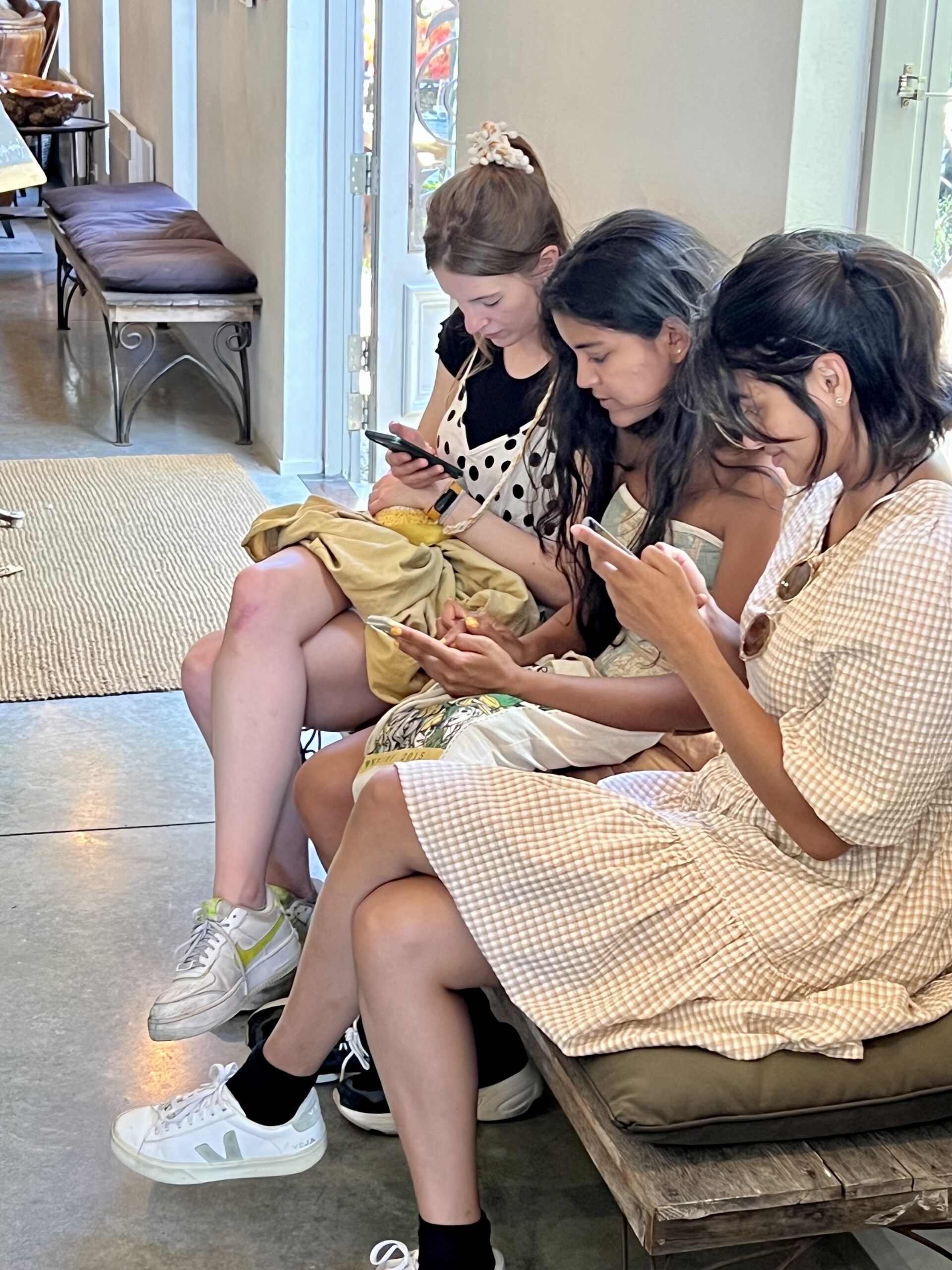
Poppies Vineyard
When we asked for advice on wine tasting on Sunday afternoon, the receptionist at the resort recommended three wineries from nearly forty around Martinborough. We stopped first at Poppies and that was a mistake. Their lovely tasting consisted of four wines plus a few others we choose. Their demeanor was impeccable, and they had great observations about each wine. We were impressed especially by the rose and pinot gris. The setting was beautiful and comfortable. Because we thoroughly enjoyed the experience at Poppies, the next two vineyards did not measure up—too commercial and too rushed. We went back to Poppies the next day and ordered wine to ship home. The Formula One racing car in the parking lot was a welding exercise by the fellow who did all the ironwork at the vineyard.
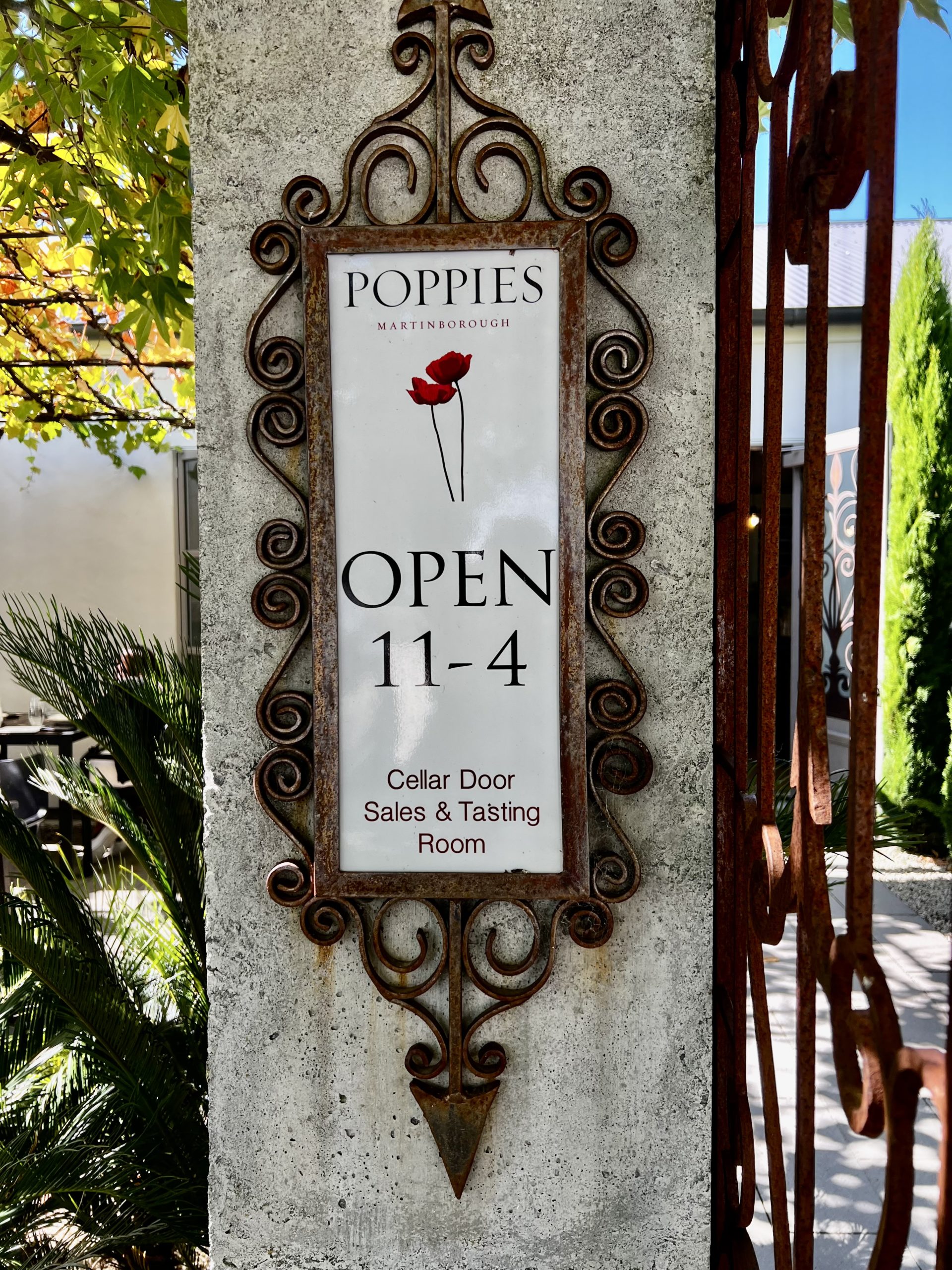
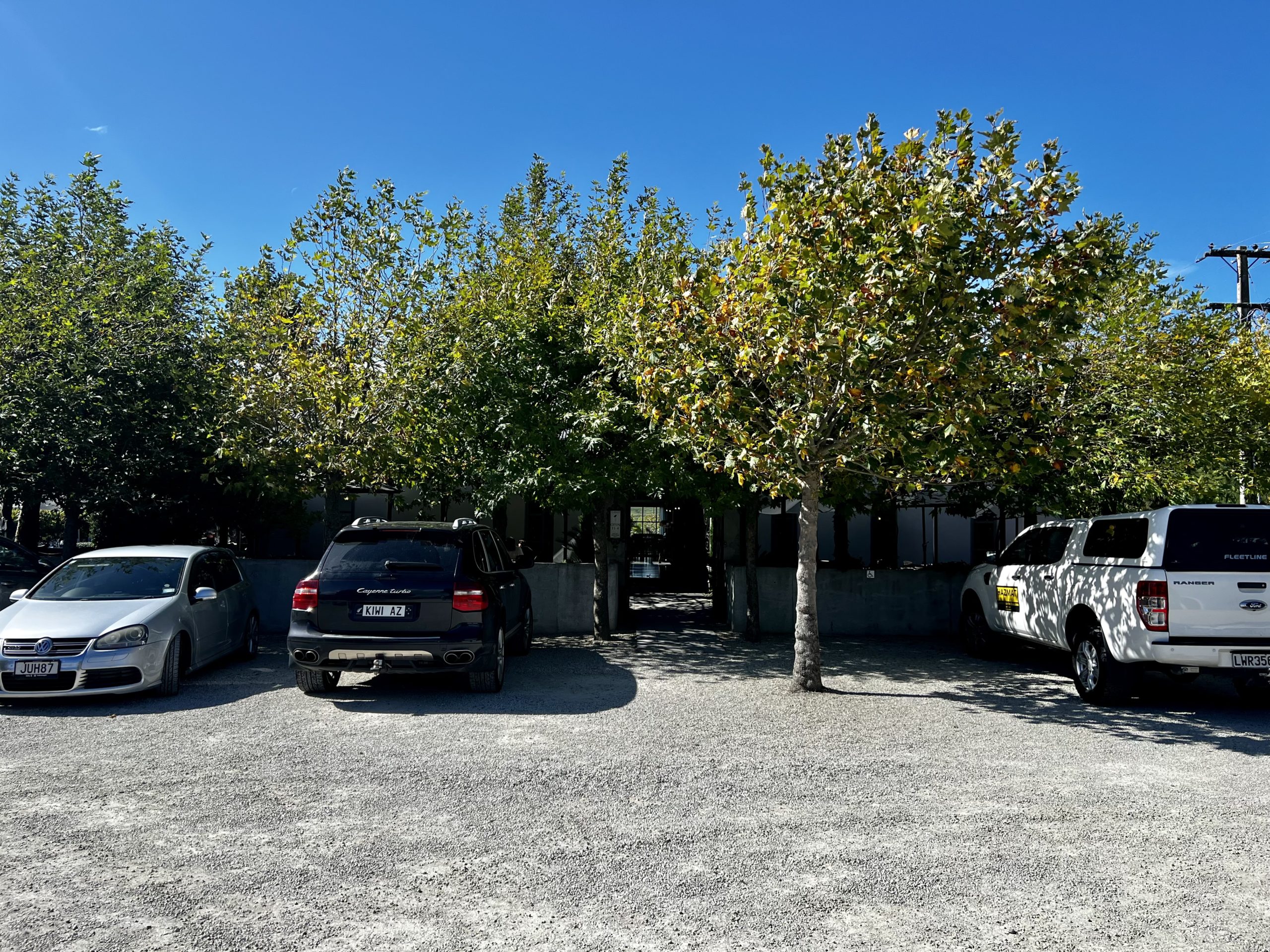
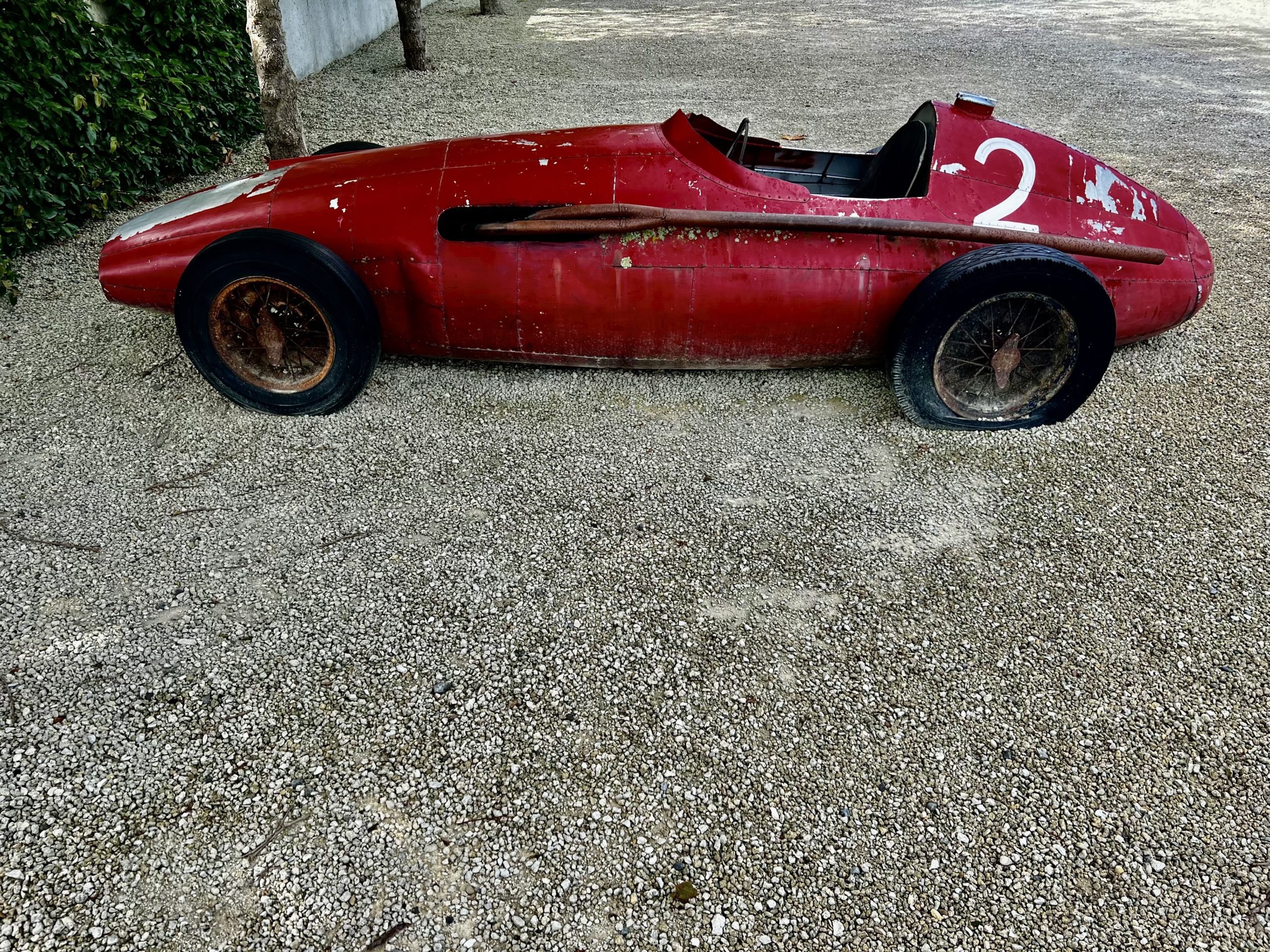
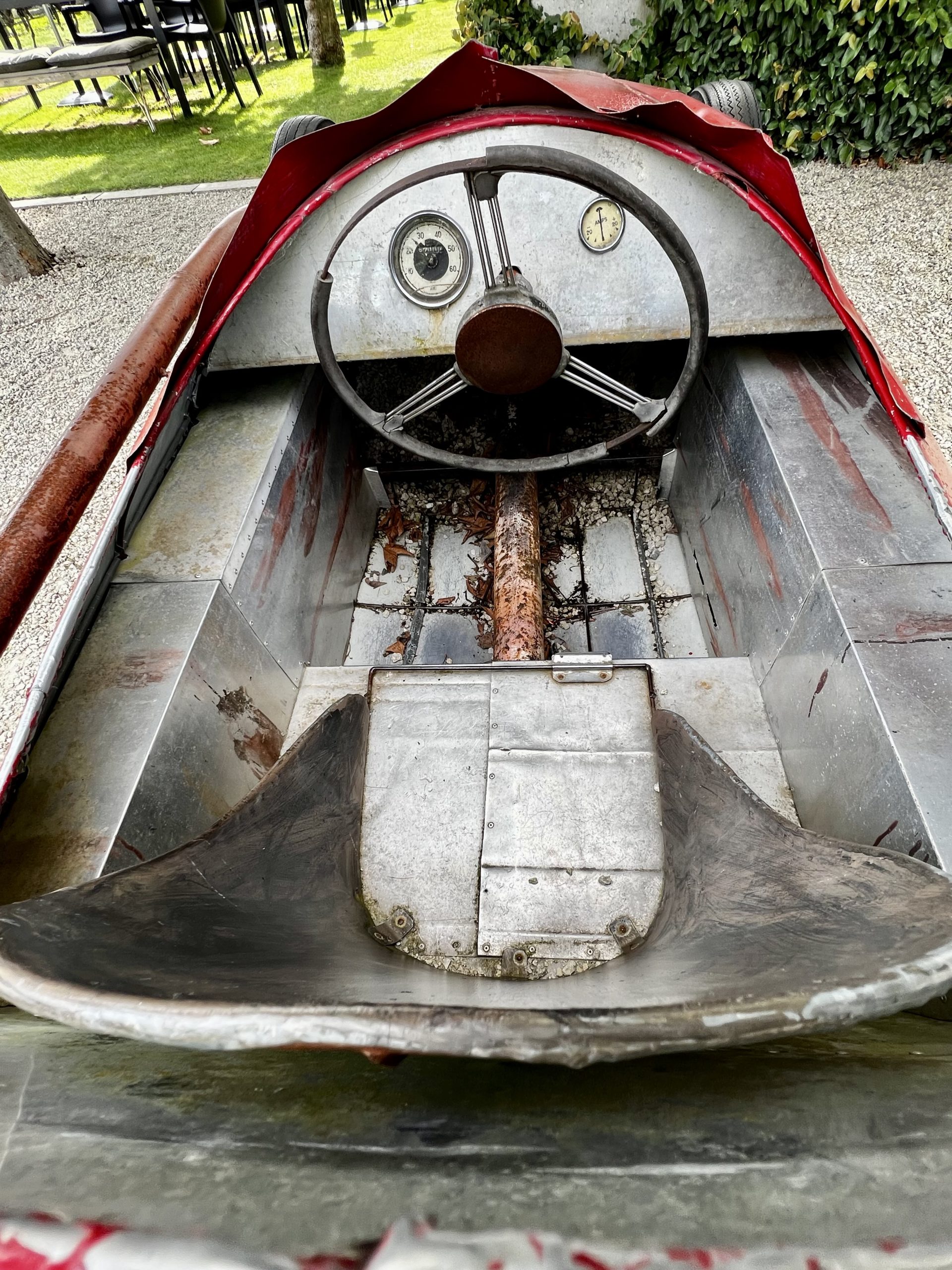

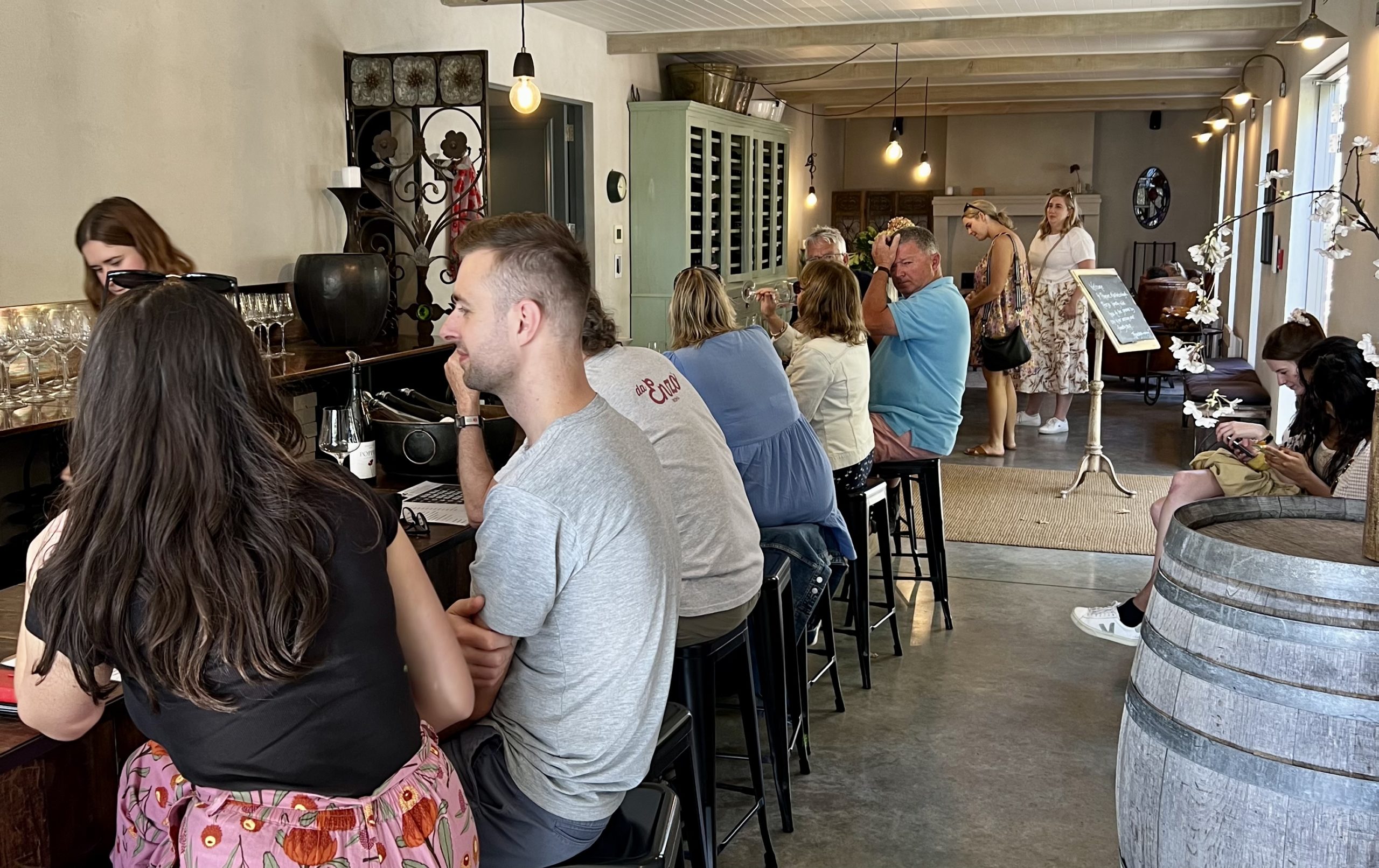
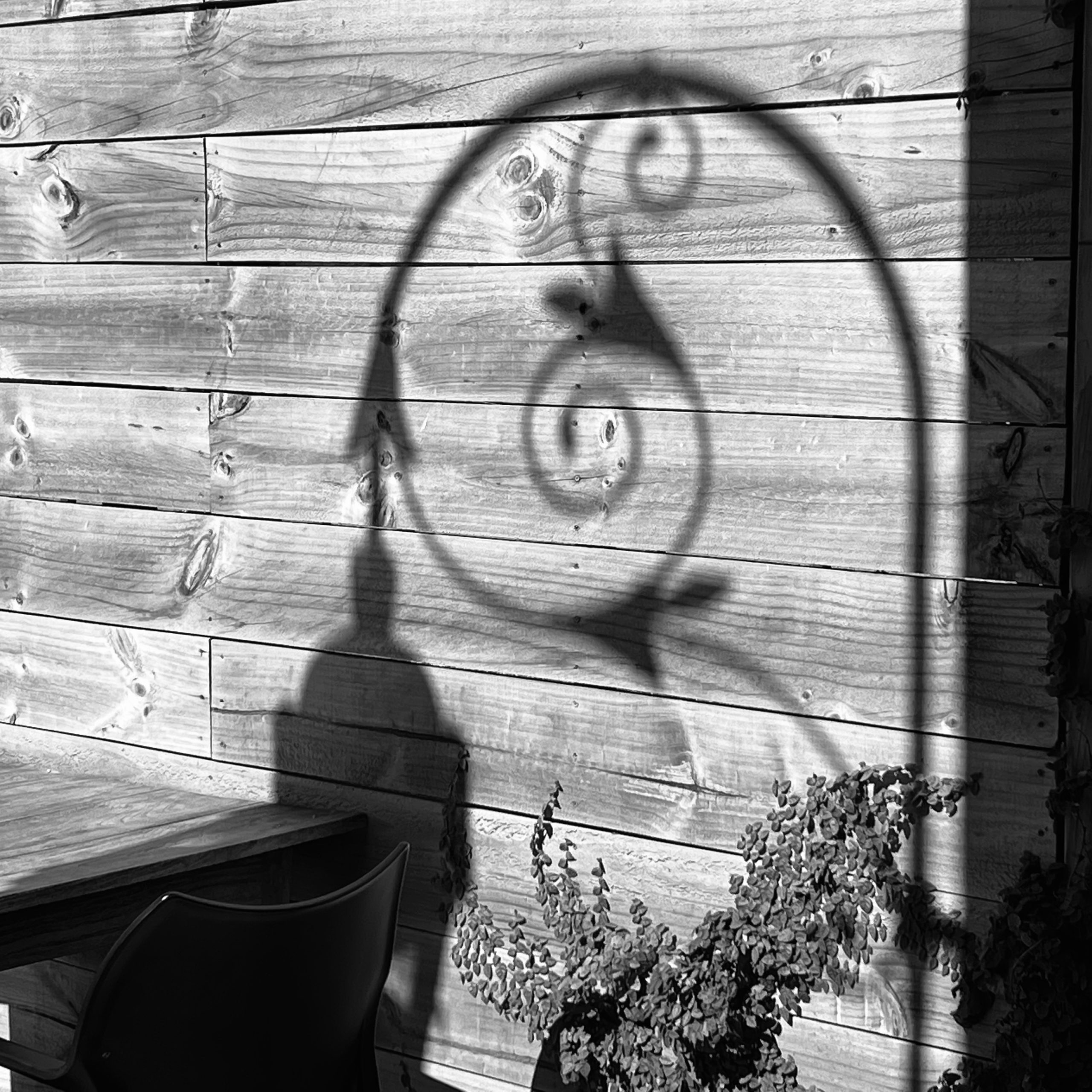
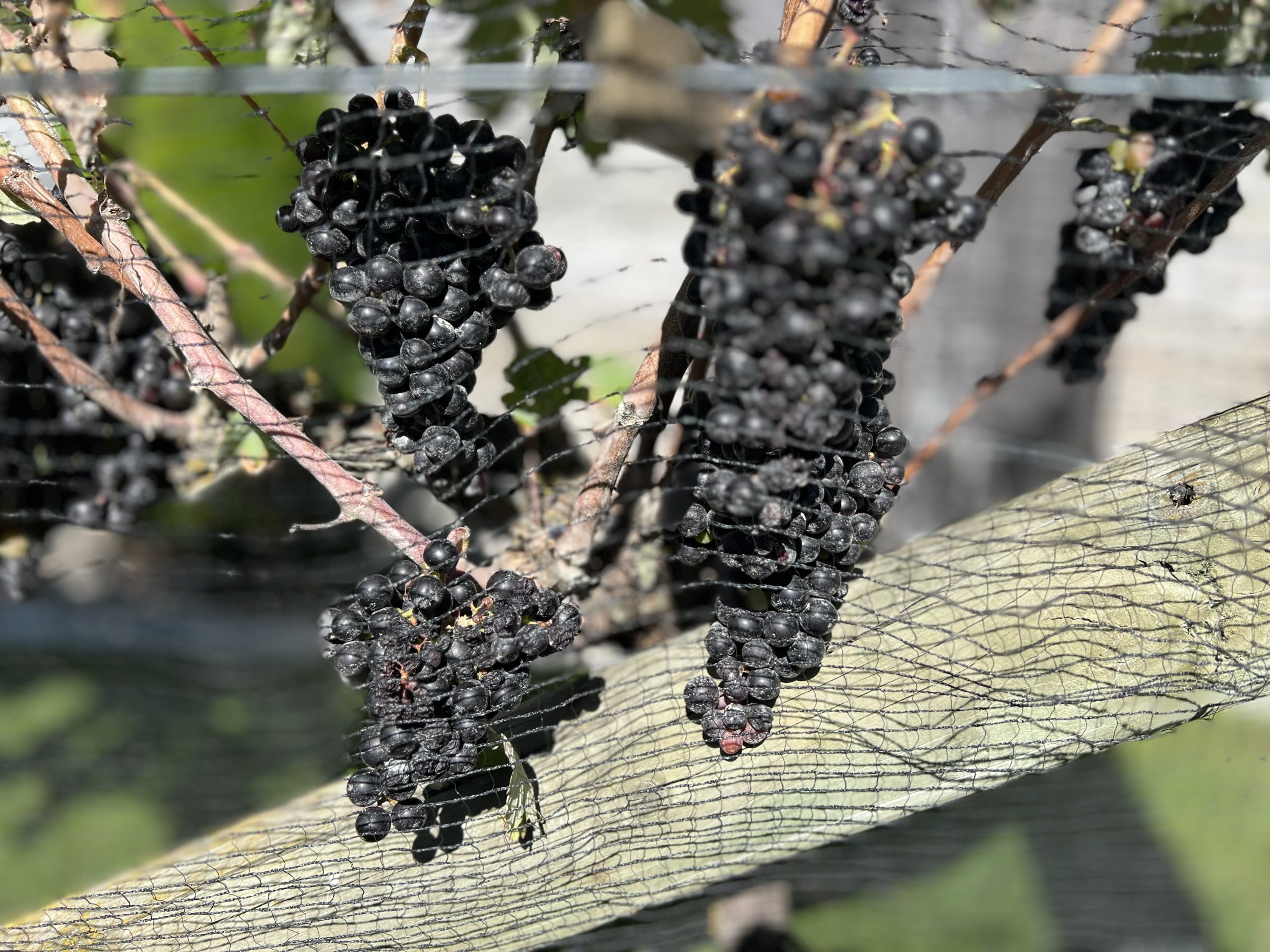
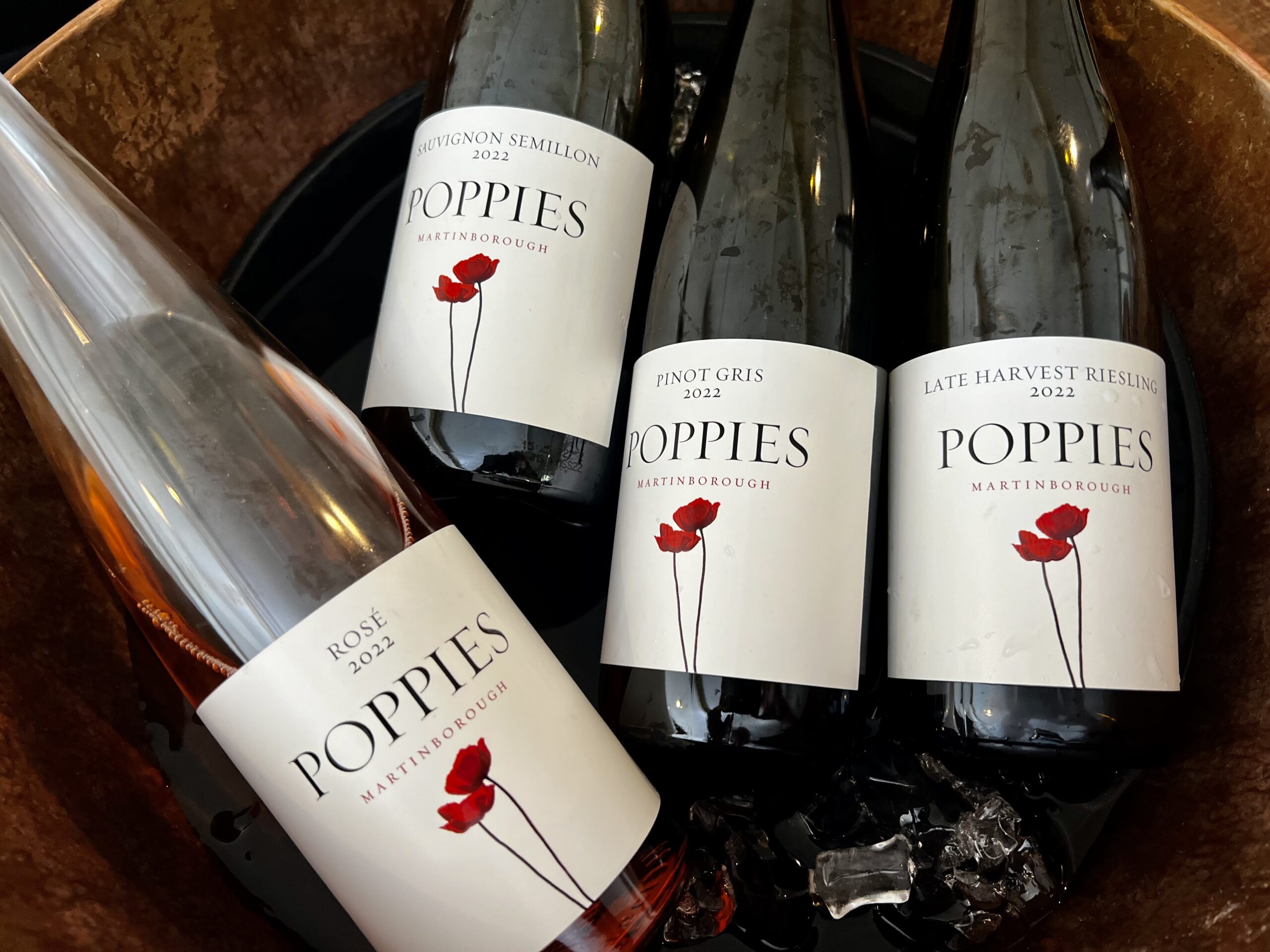
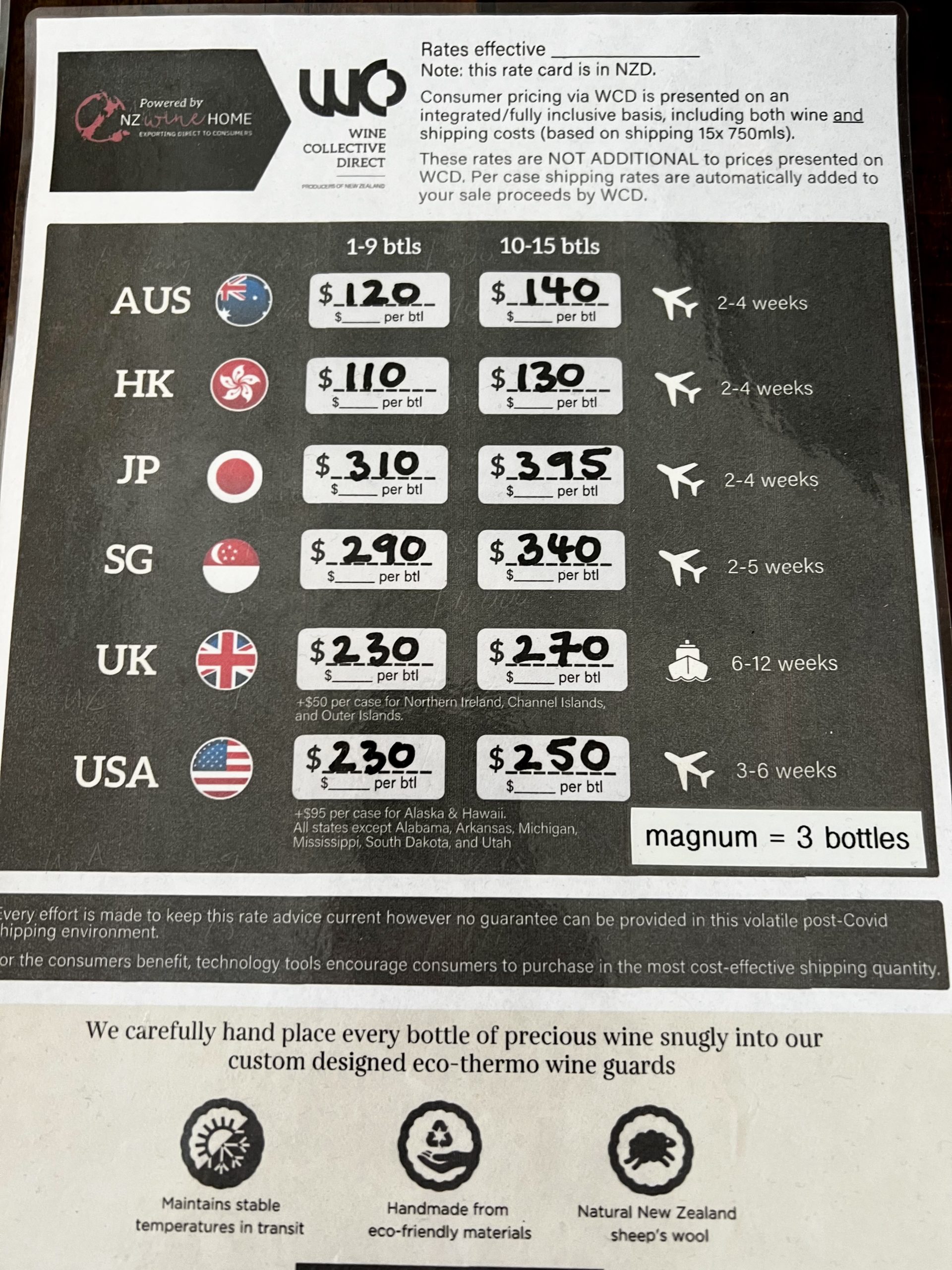
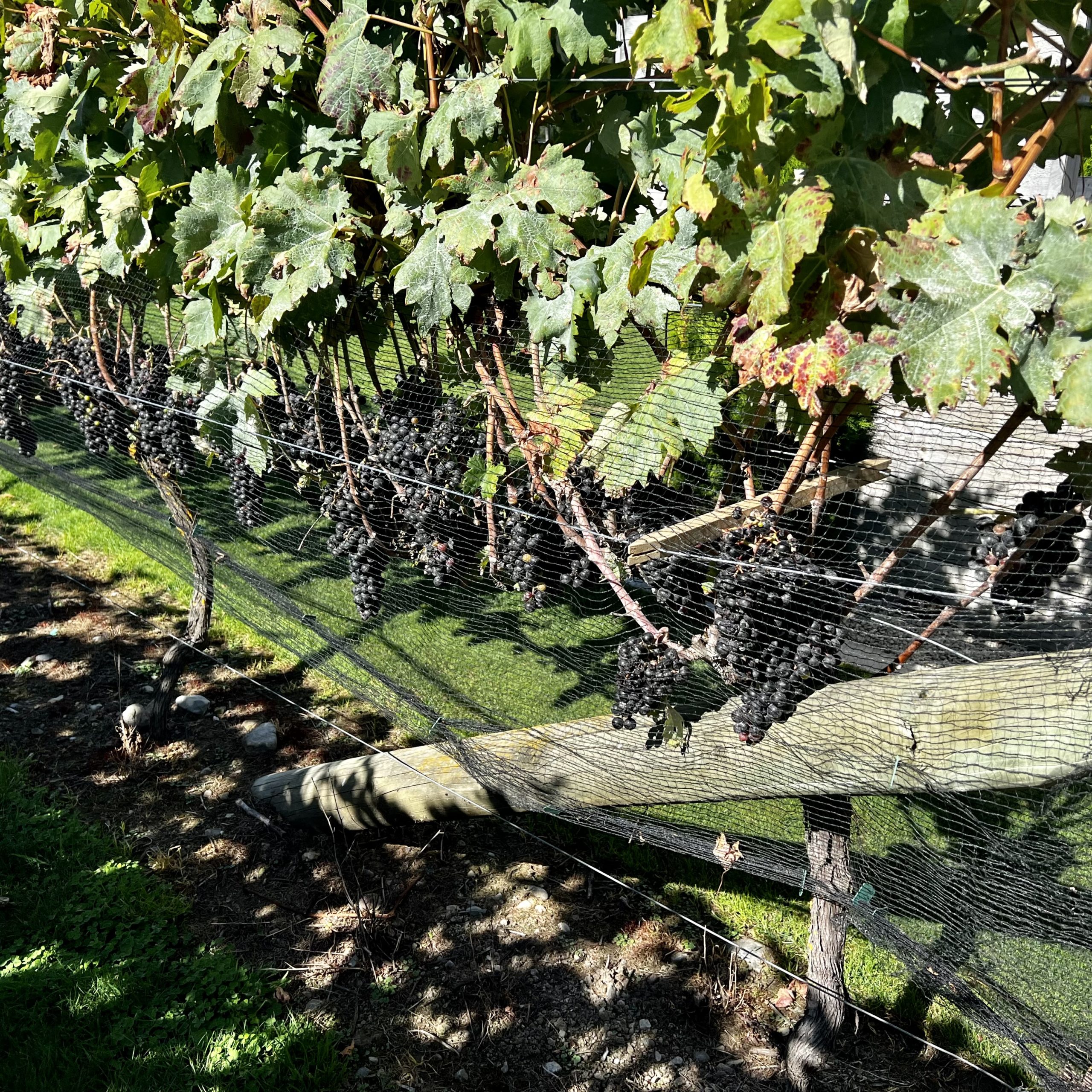
Martinborough
The town square looked sleepy when we visited on Sunday afternoon, even though the hotel restaurant was fully booked for that night and the following night. But Martinborough, originally a sheep town, is now known for spectacular wines, especially pinot noir. Vineyards vary in size but are larger than in Napa Valley. Martinborough has 38 wineries covering 39,000 acres (15,783 hectares); Napa Valley has 400 vineyards covering 43,000 acres (17,400 hectares).
A few of Bonnie’s classmates lived in Martinborough and took the bus to school in Greytown. During covid, the director of Avatar, James Cameron, gave up his house in Malibu and moved his family to this area full time. They have a large property with a produce farm about thirty minutes farther into the countryside.
Sheep were first imported from Australia to New Zealand into this region. The broad Wairarapa valley, including Martinborough and Greytown, was ideal for sheep farming, and giant sheep stations were established here. In the days before refrigerated shipping for meat, sheep were raised for wool, which was sent back to England. Wool is no longer a lucrative product, especially with synthetics taking over in carpets, so sheep farming is focused on the meat market. Think racks of lamb at Costco. In fact, New Zealand is now breeding some sheep that shed their wool. Many sheep have been replaced by dairy cattle, beef cattle, and grapes.
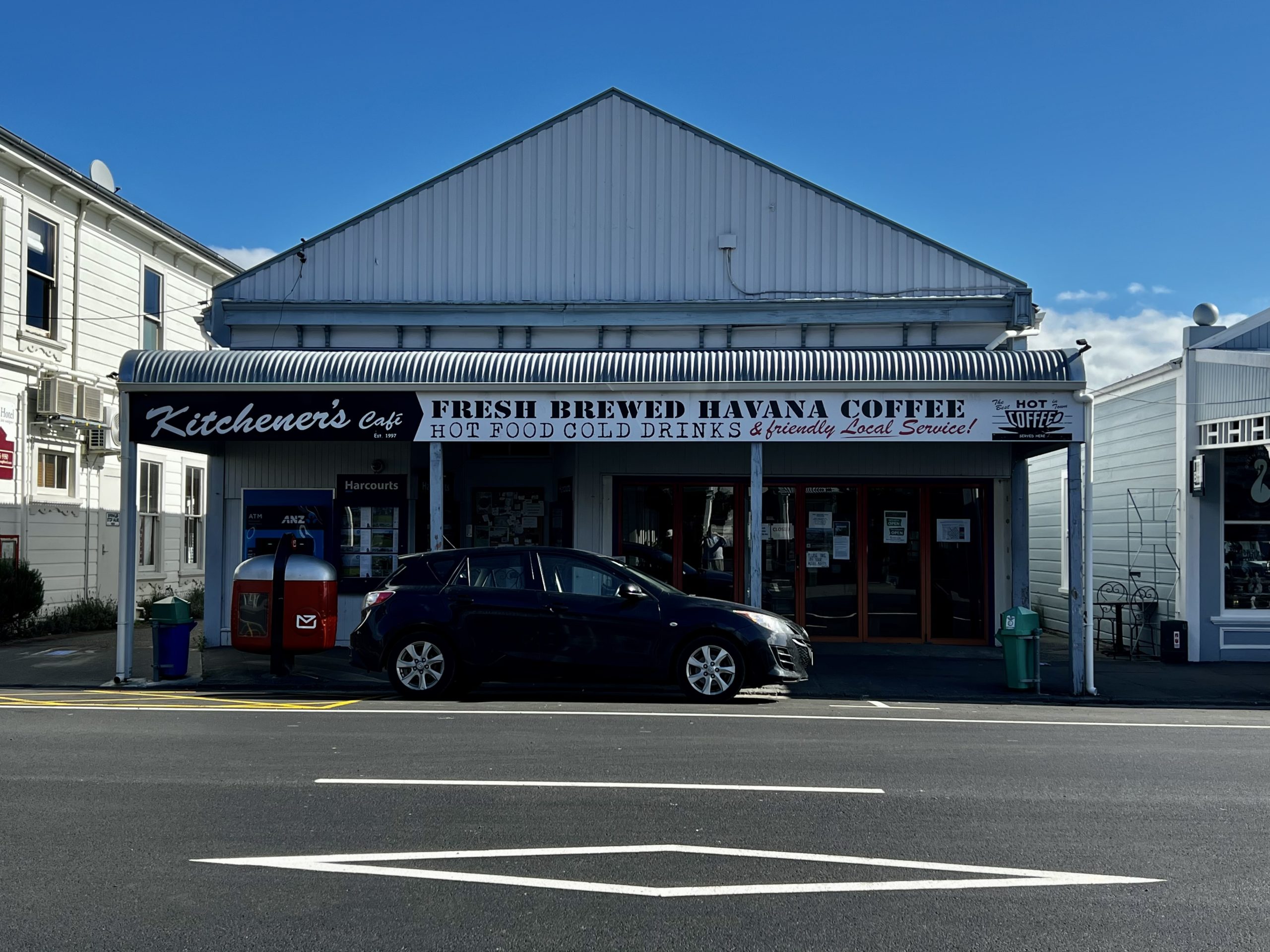
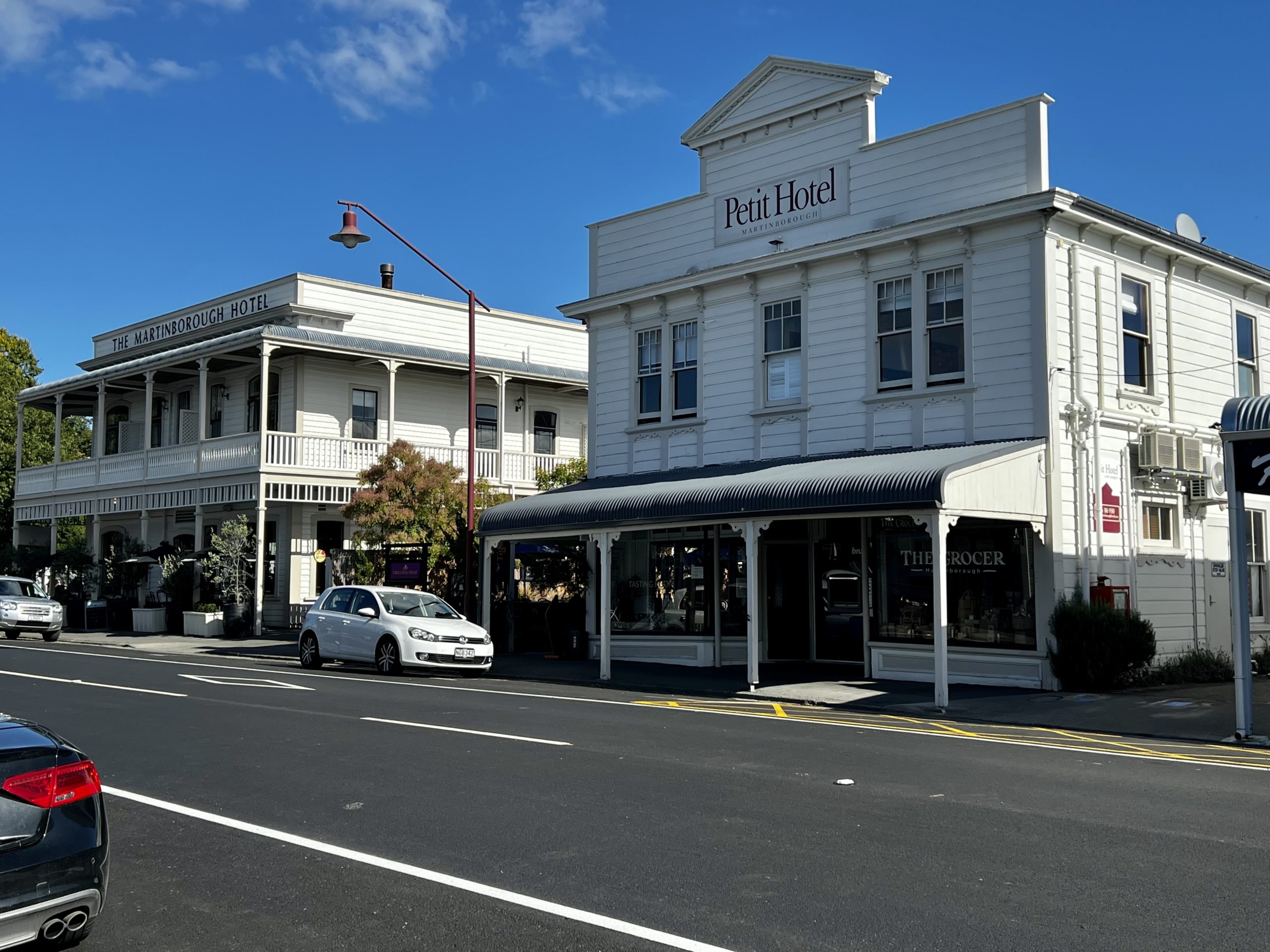
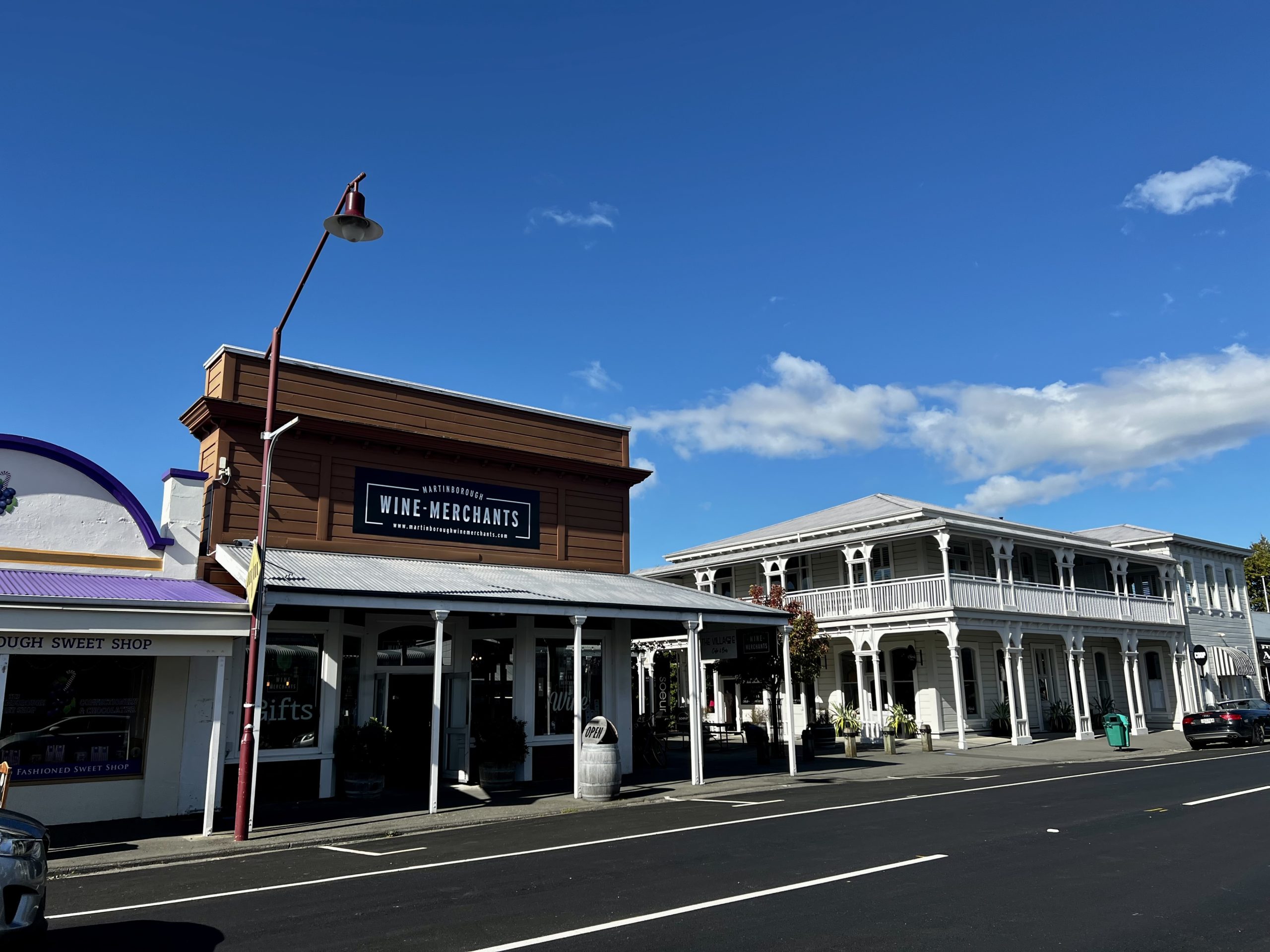
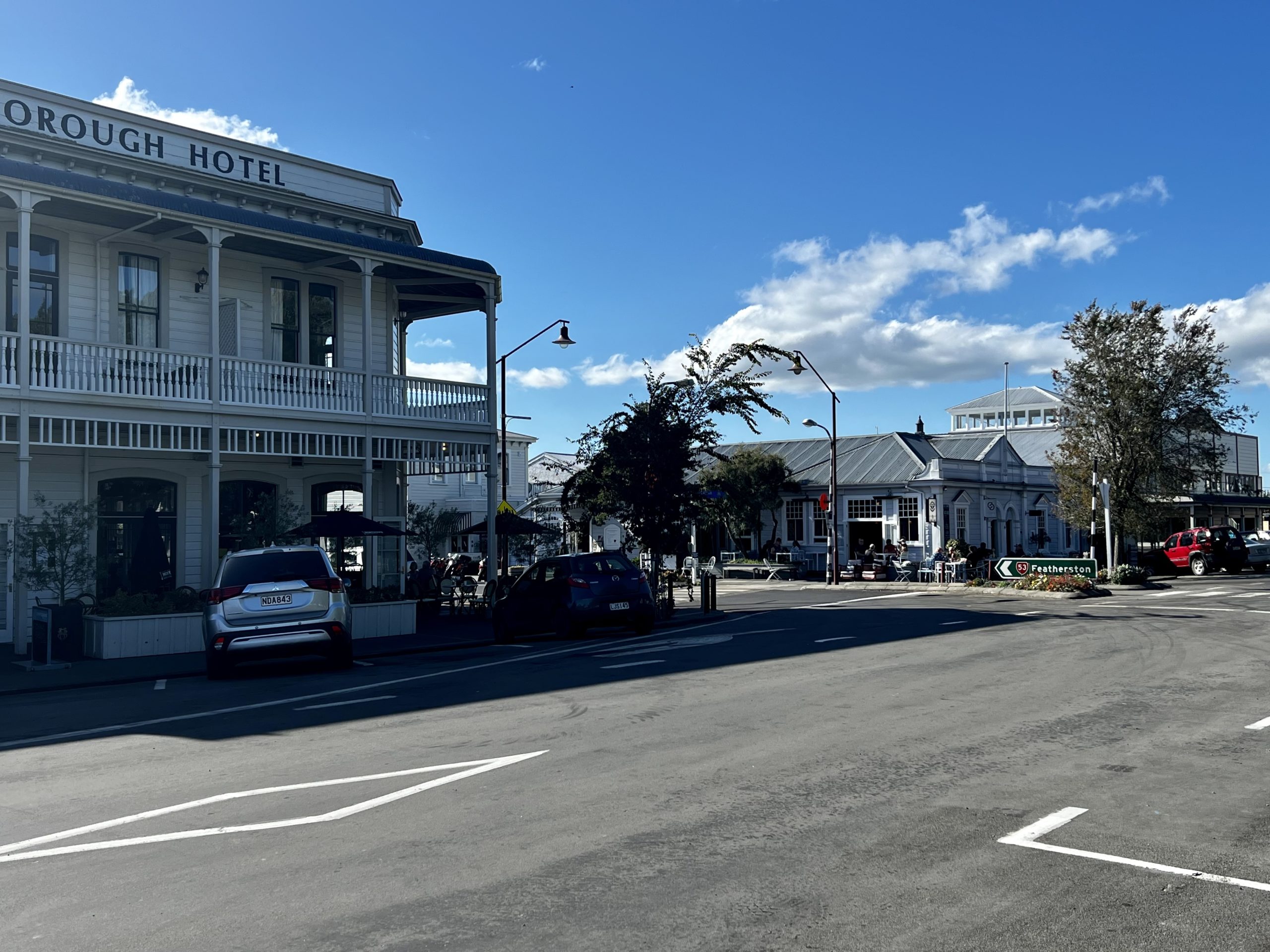
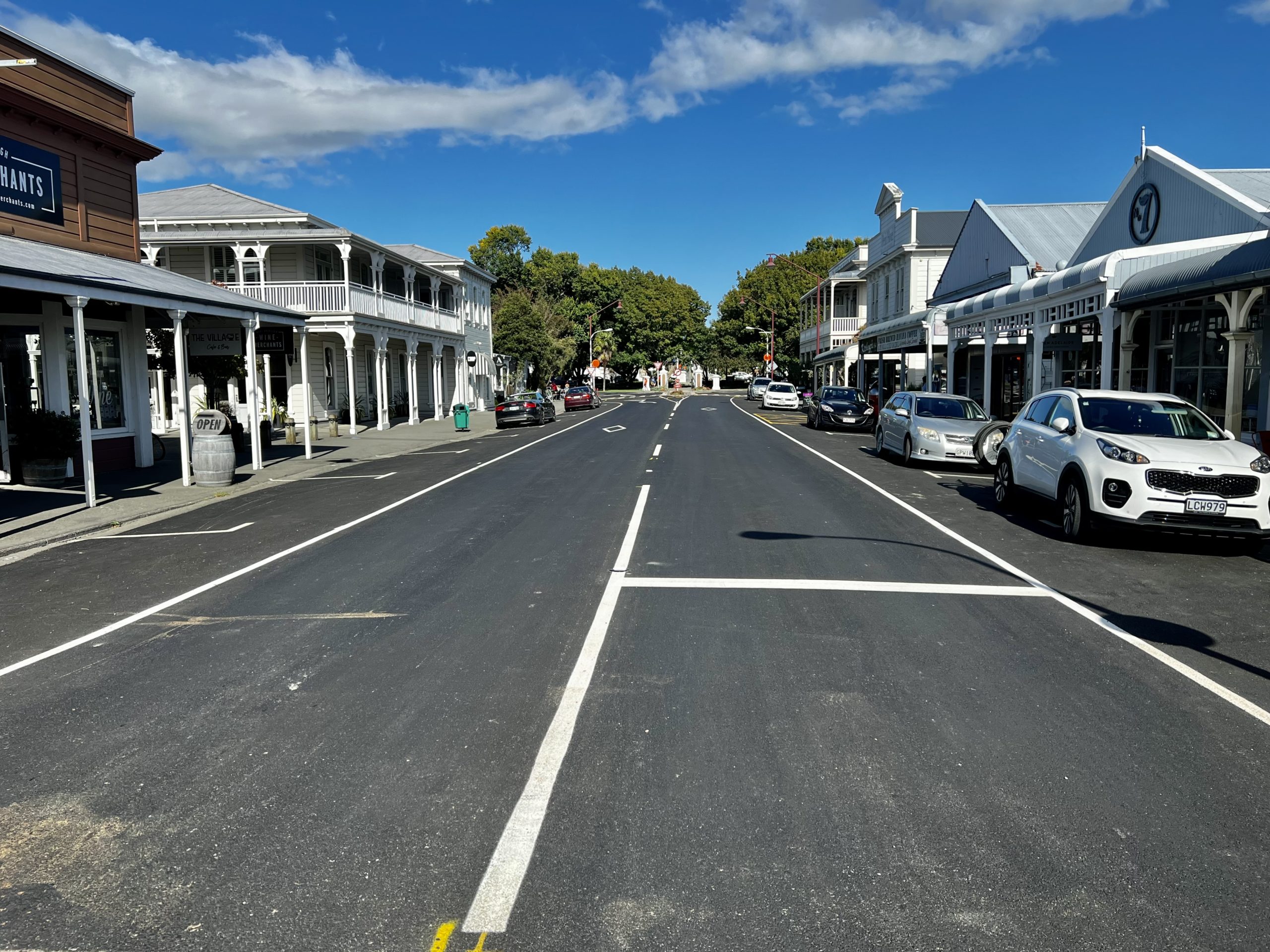
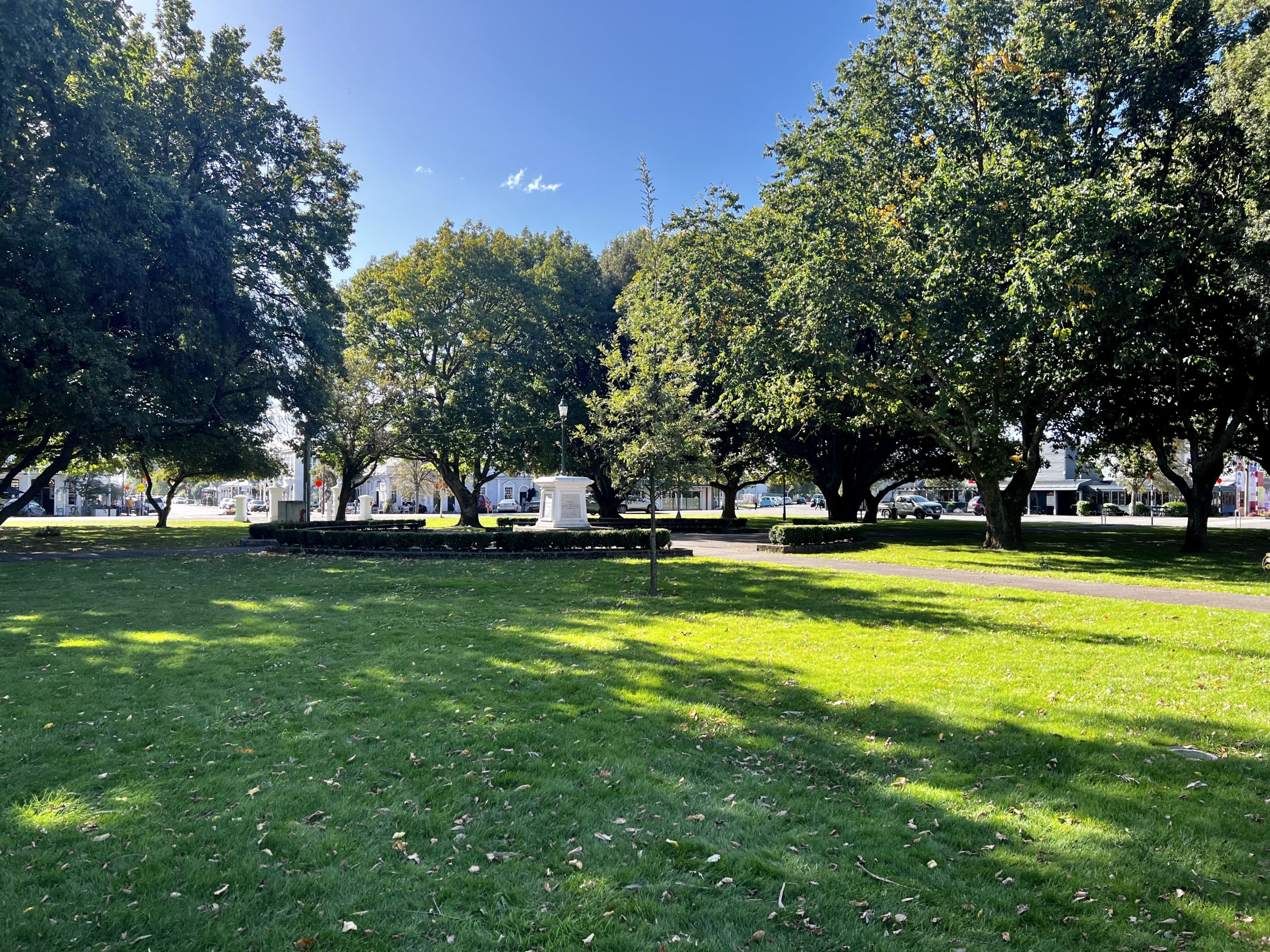
Food, Wine, and Beer
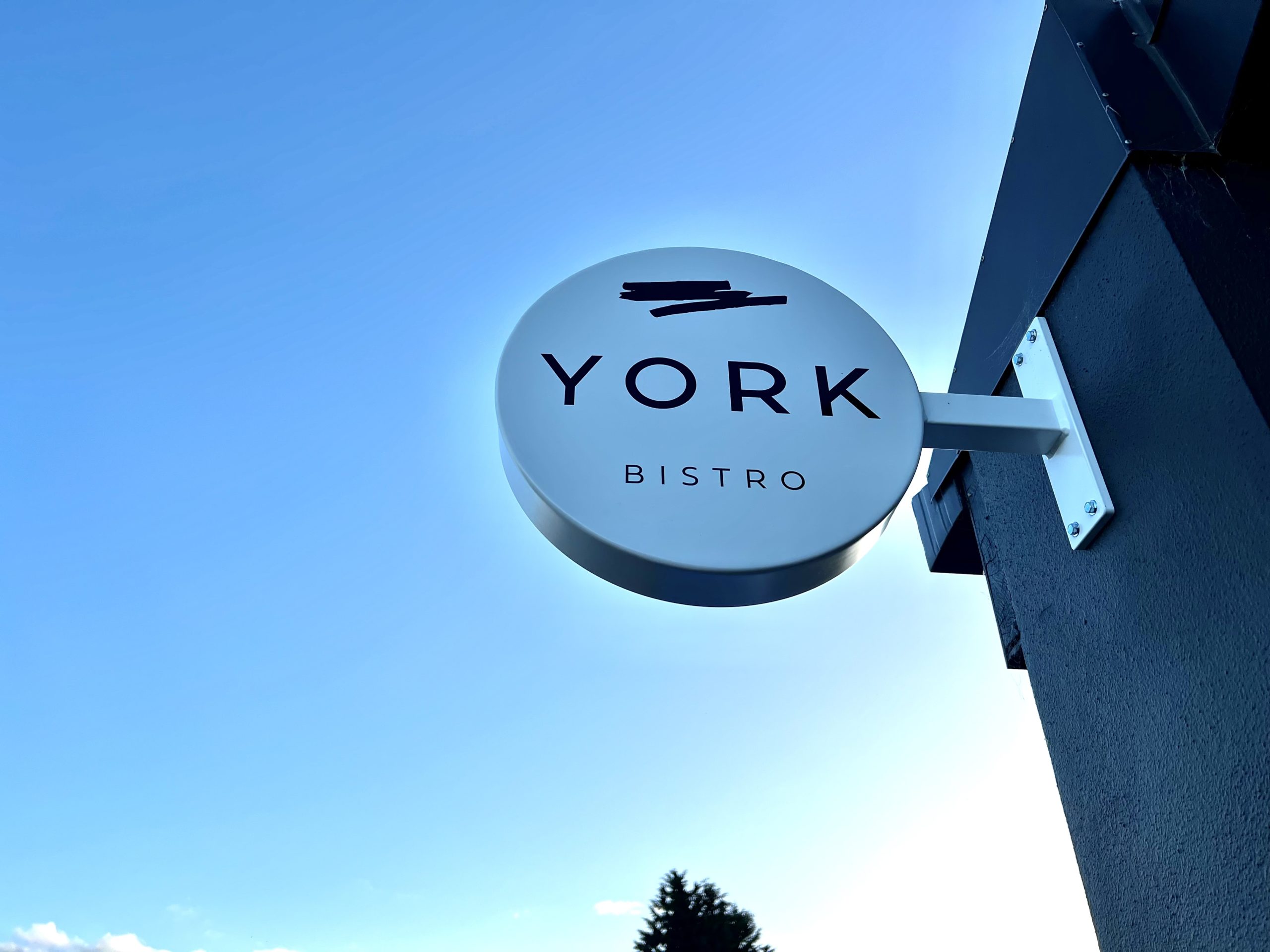
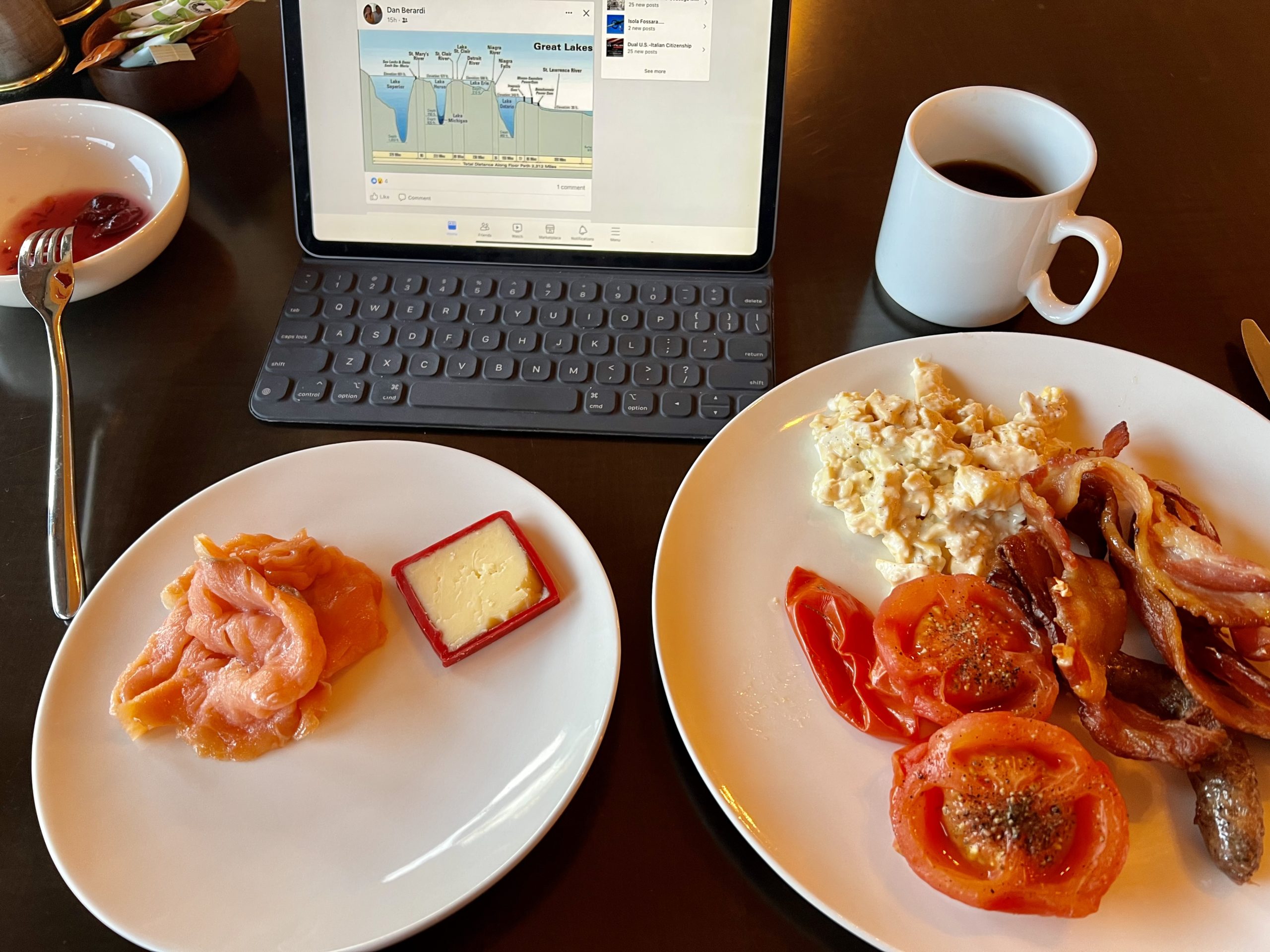
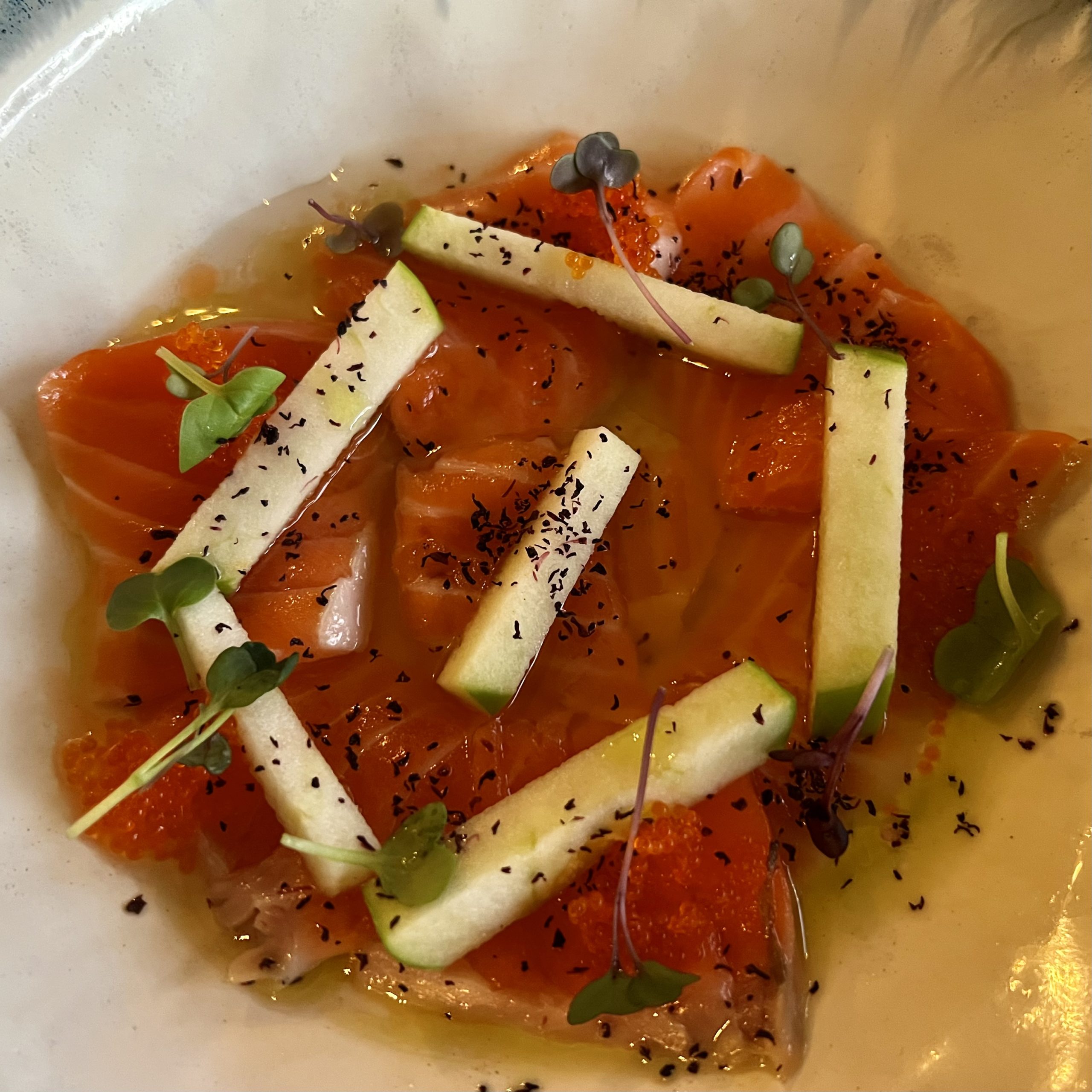
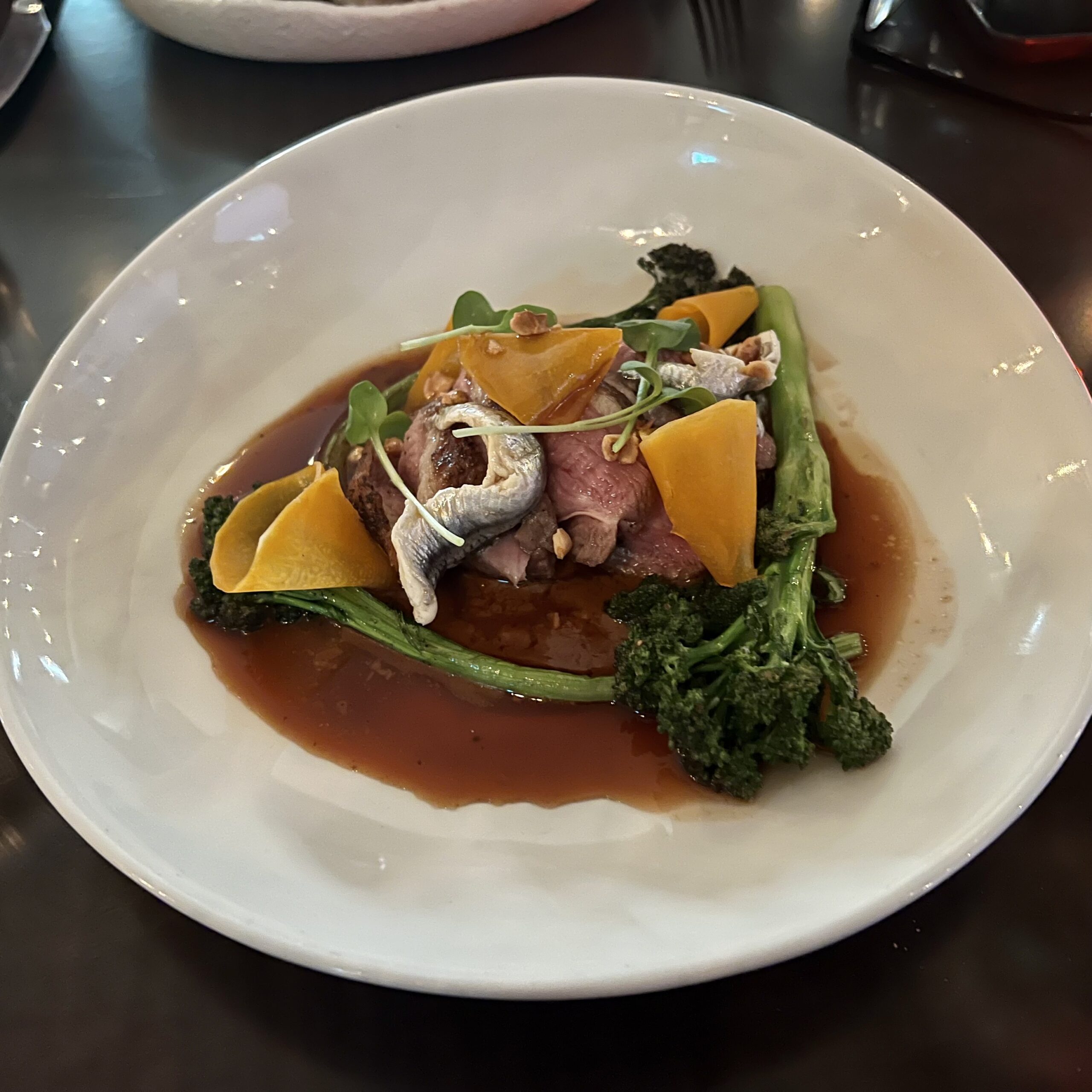
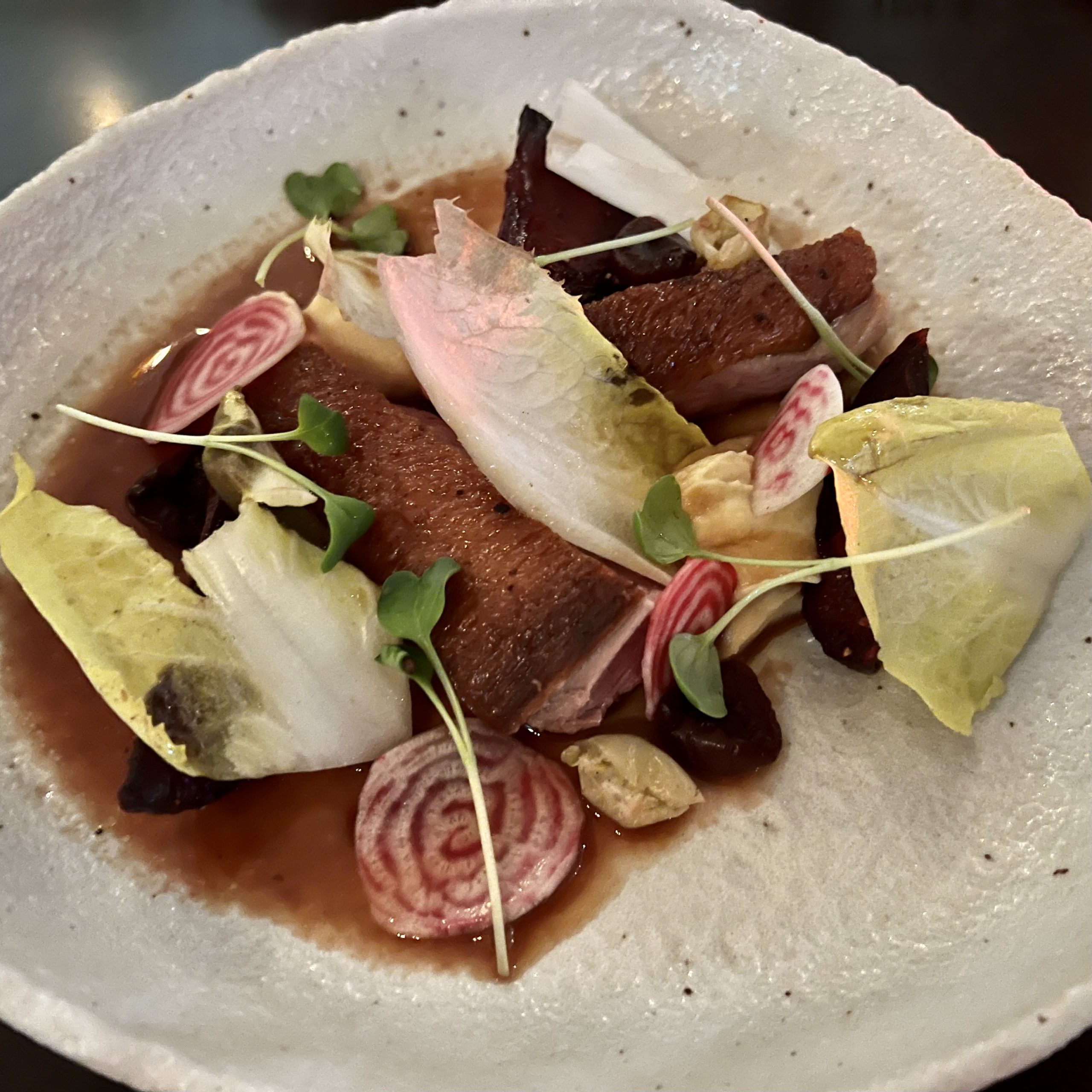
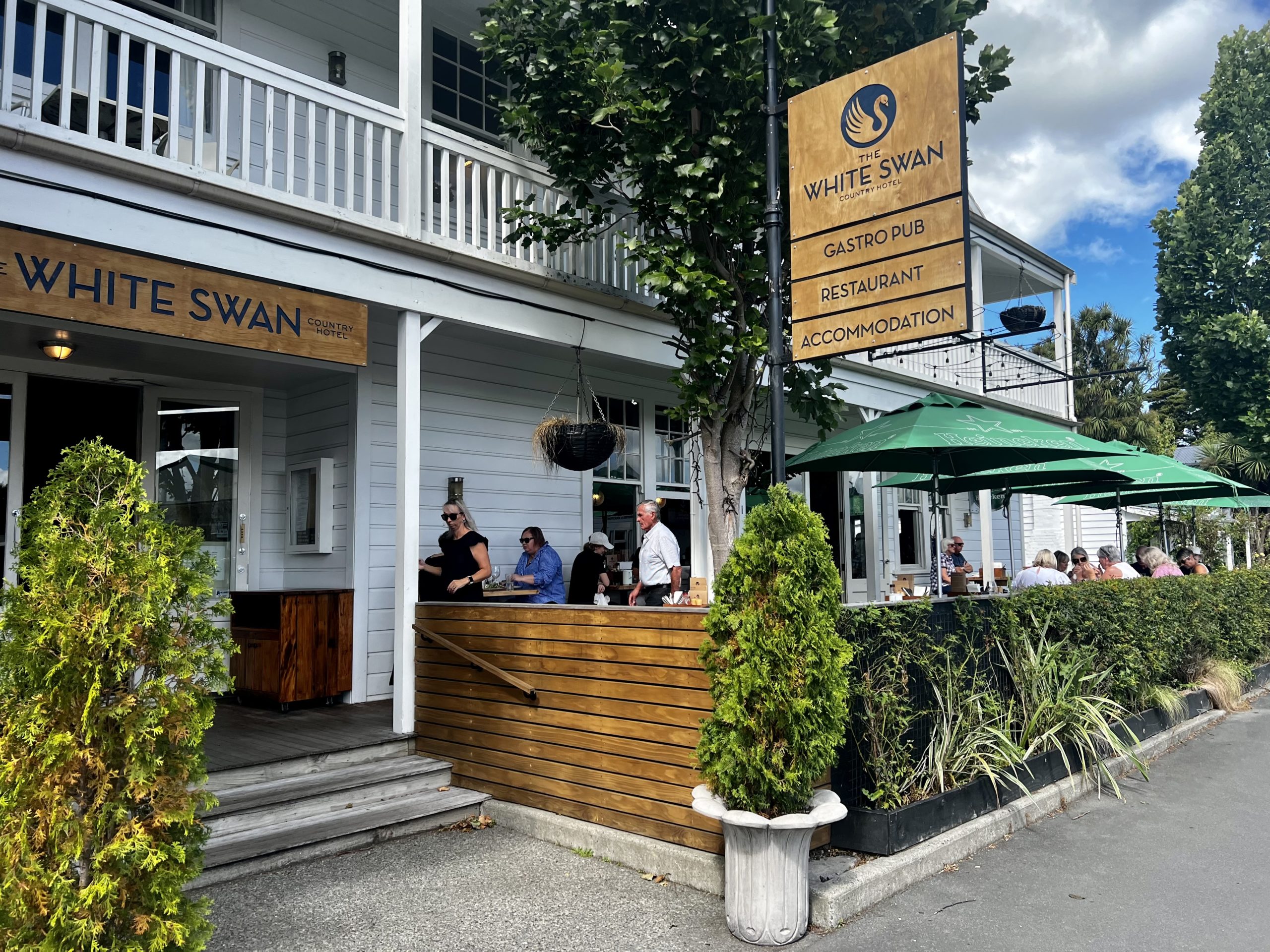
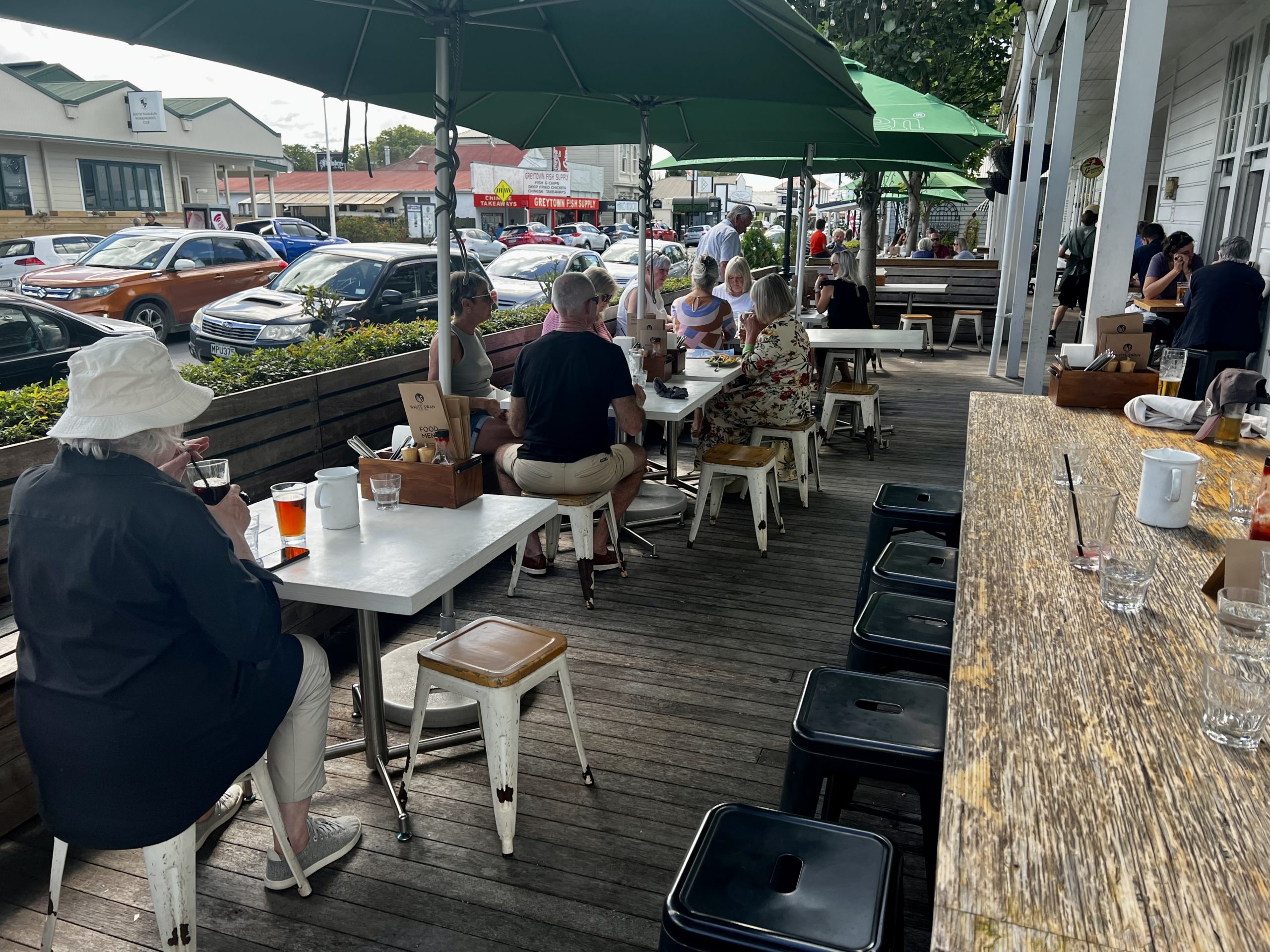
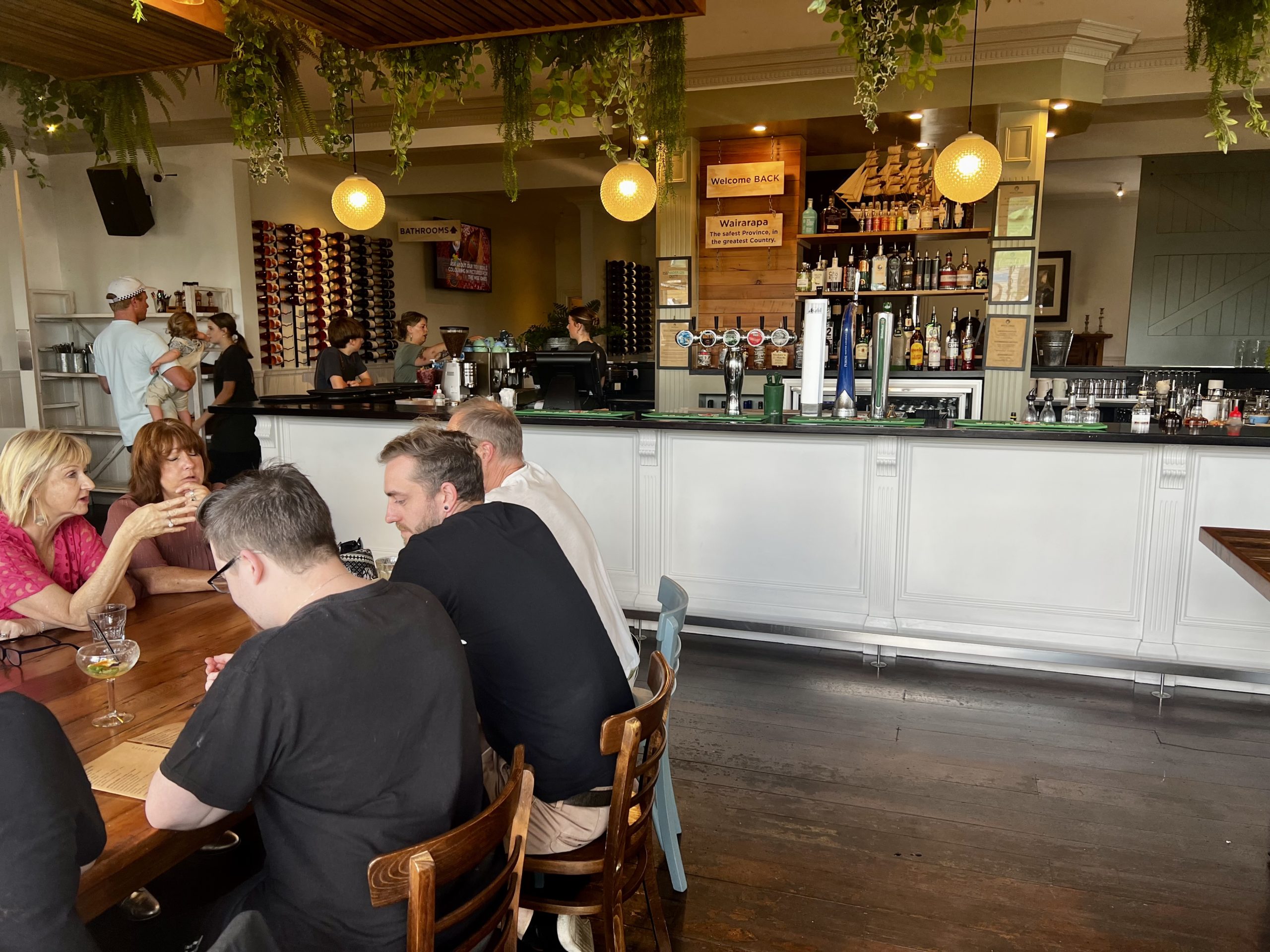
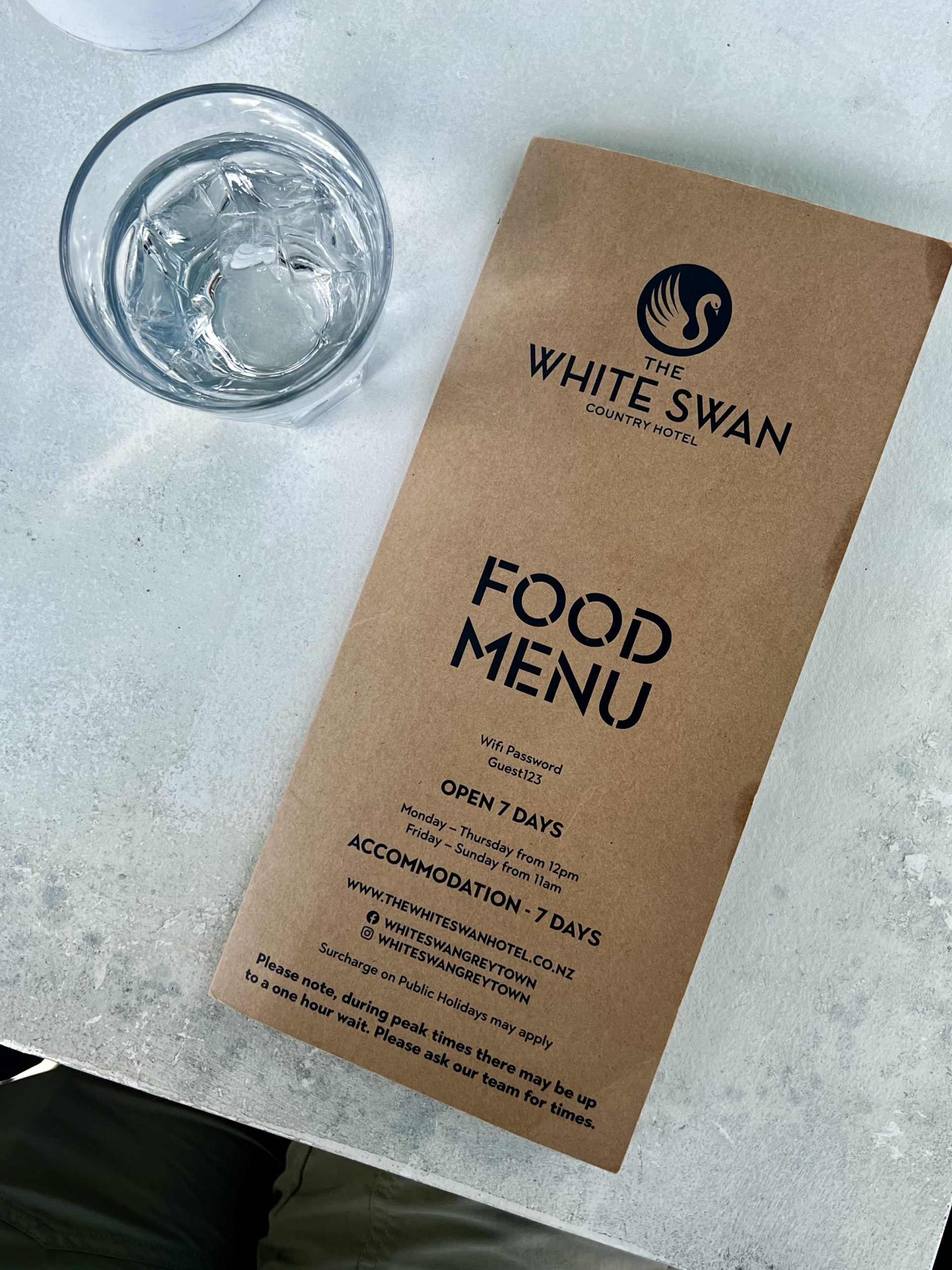
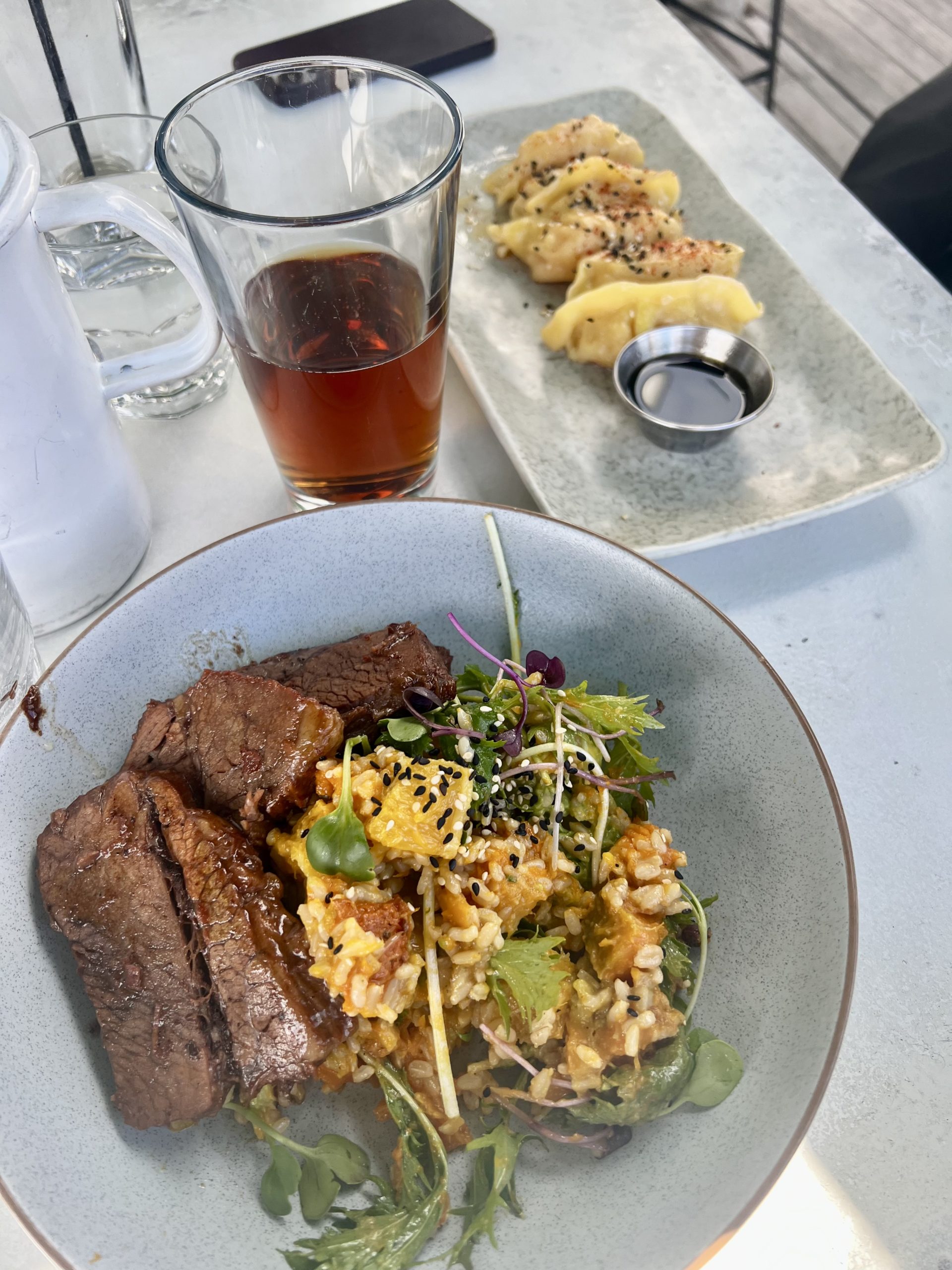
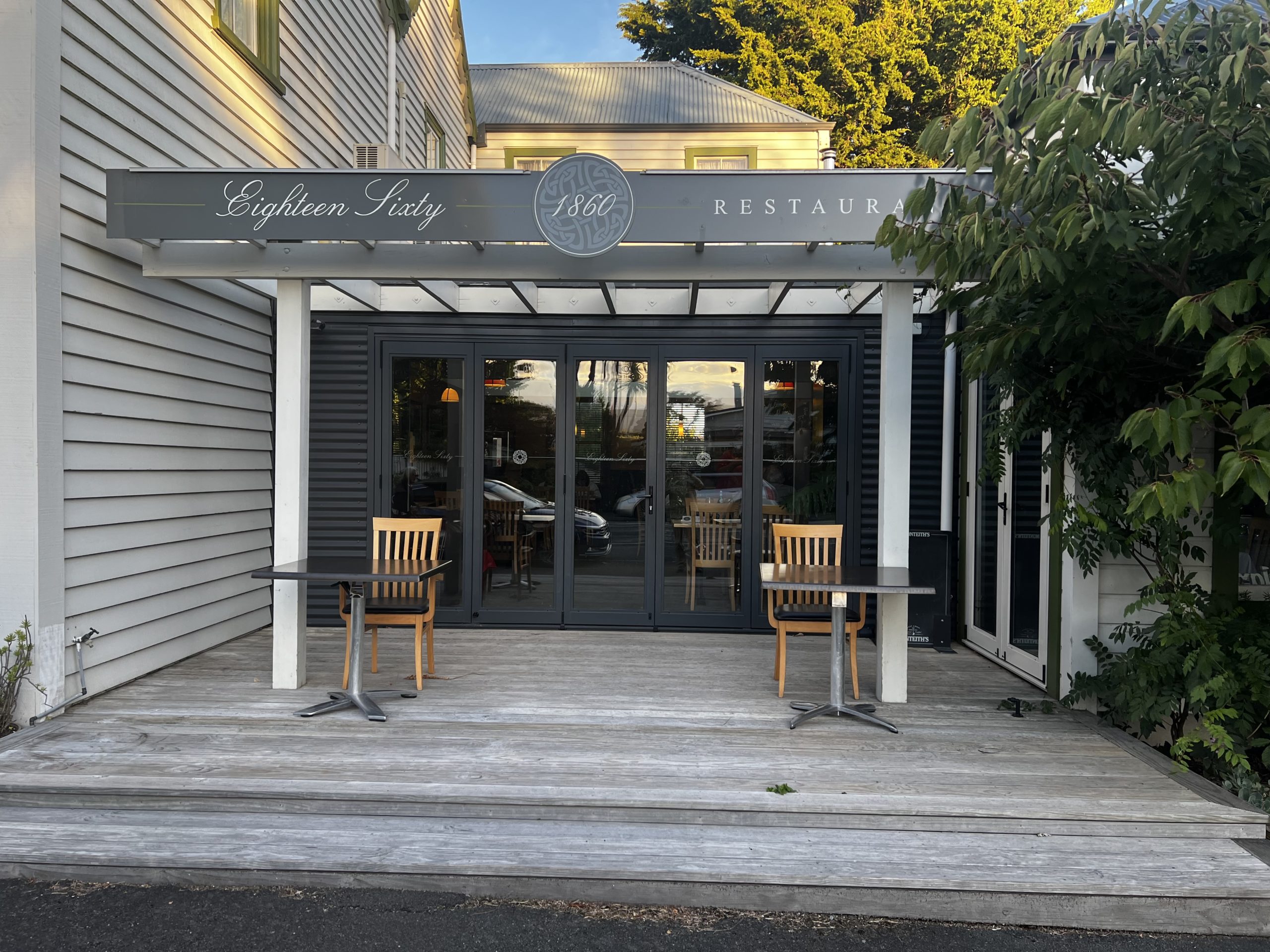
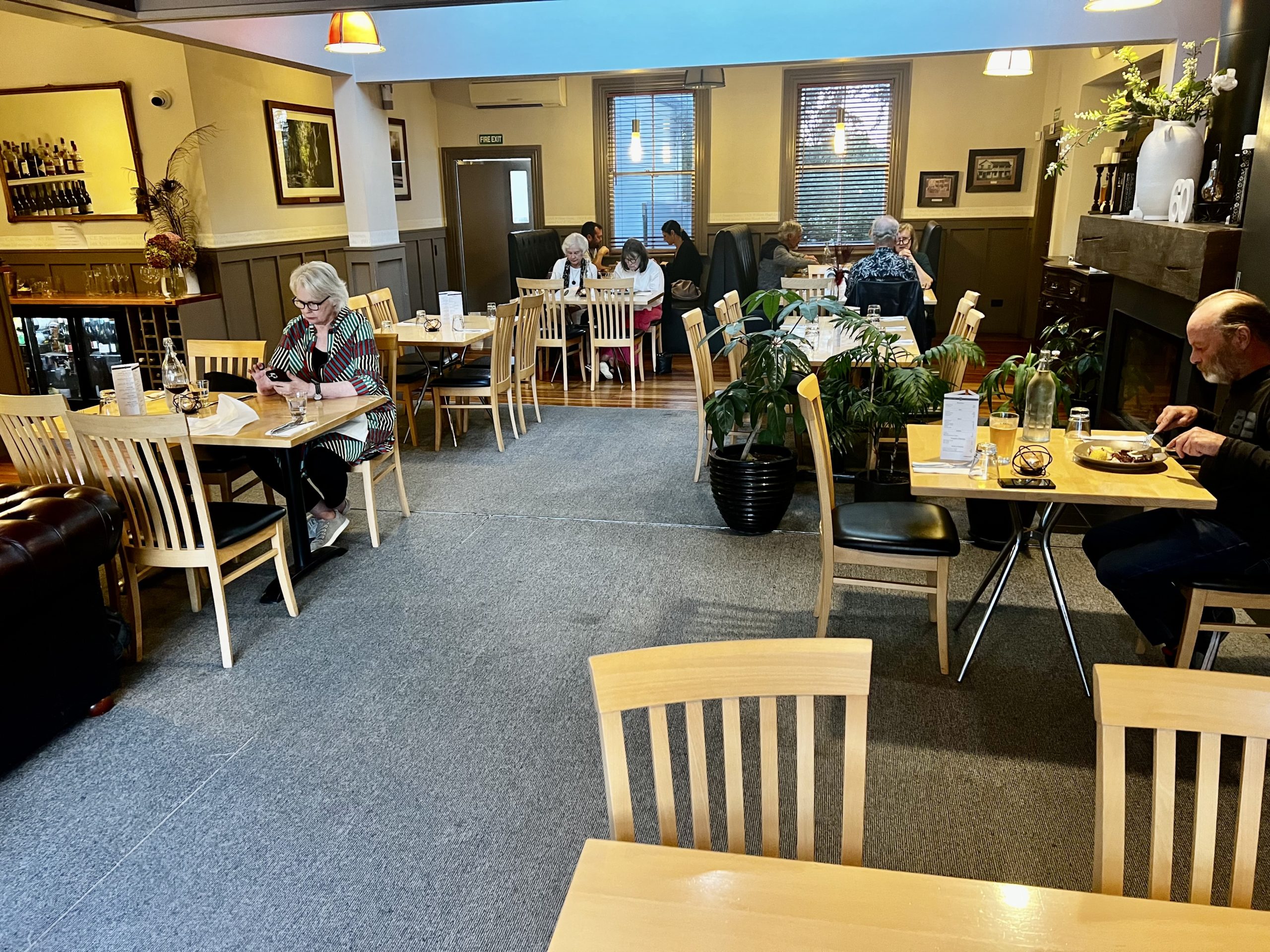
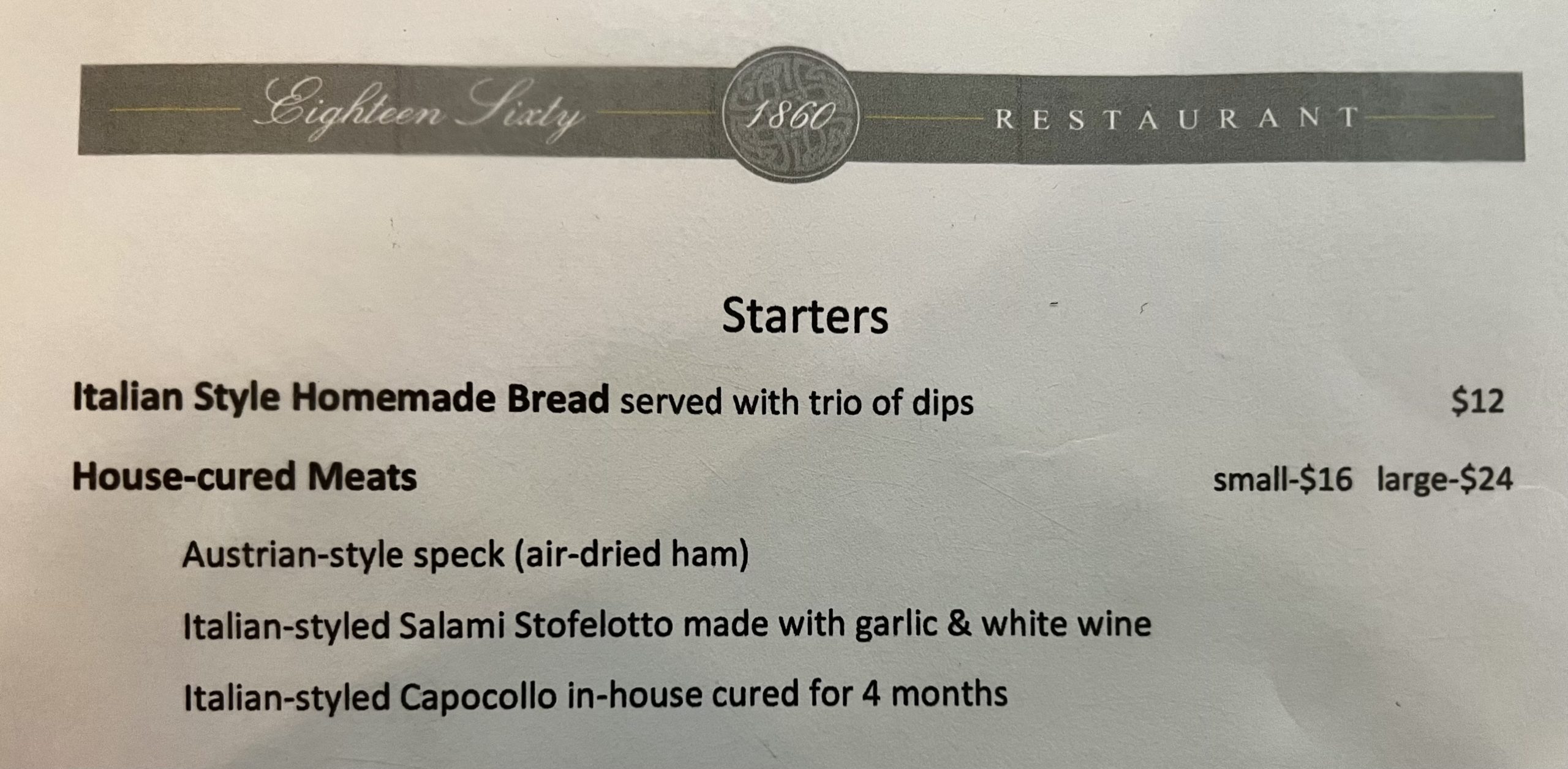
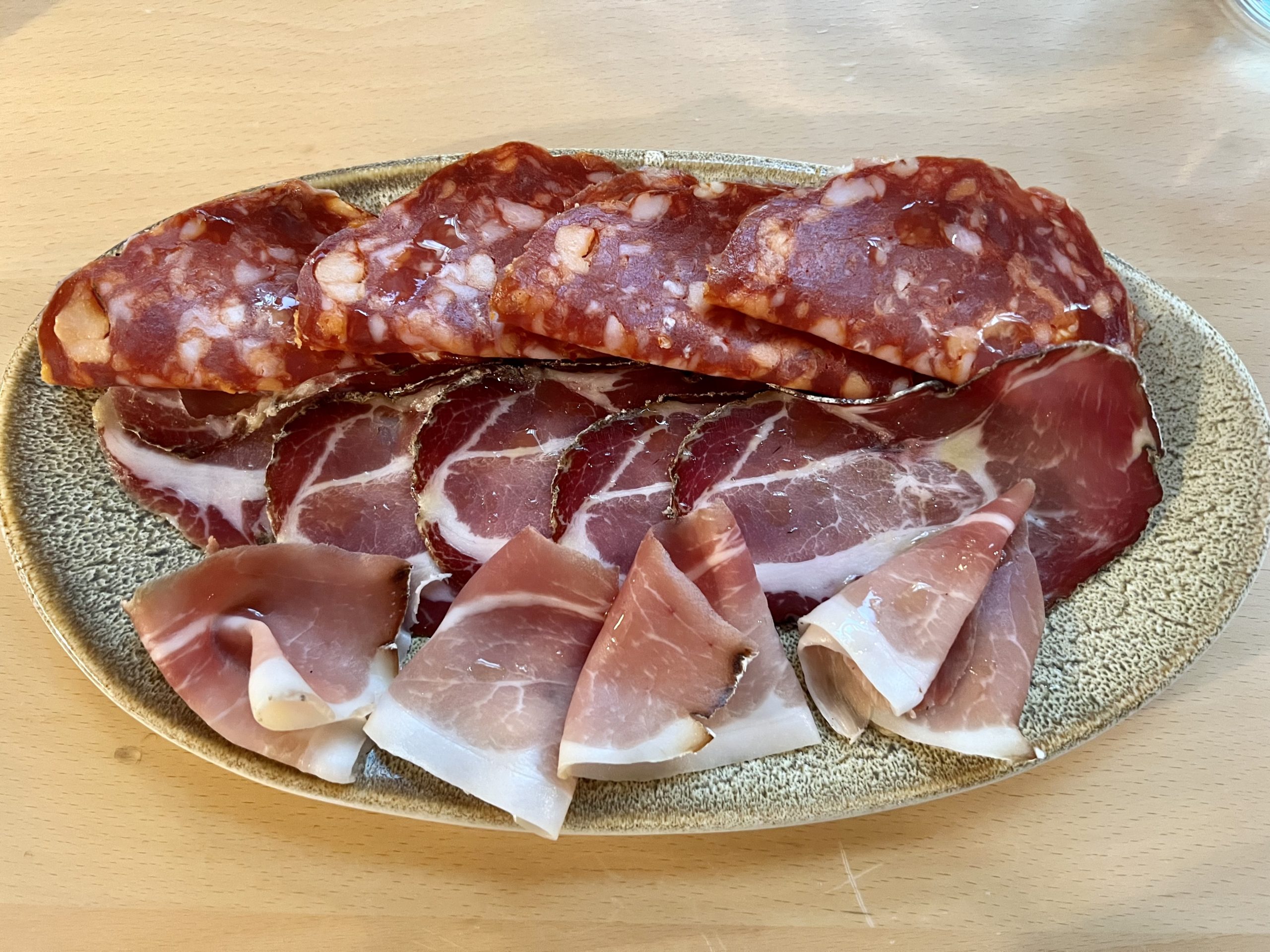
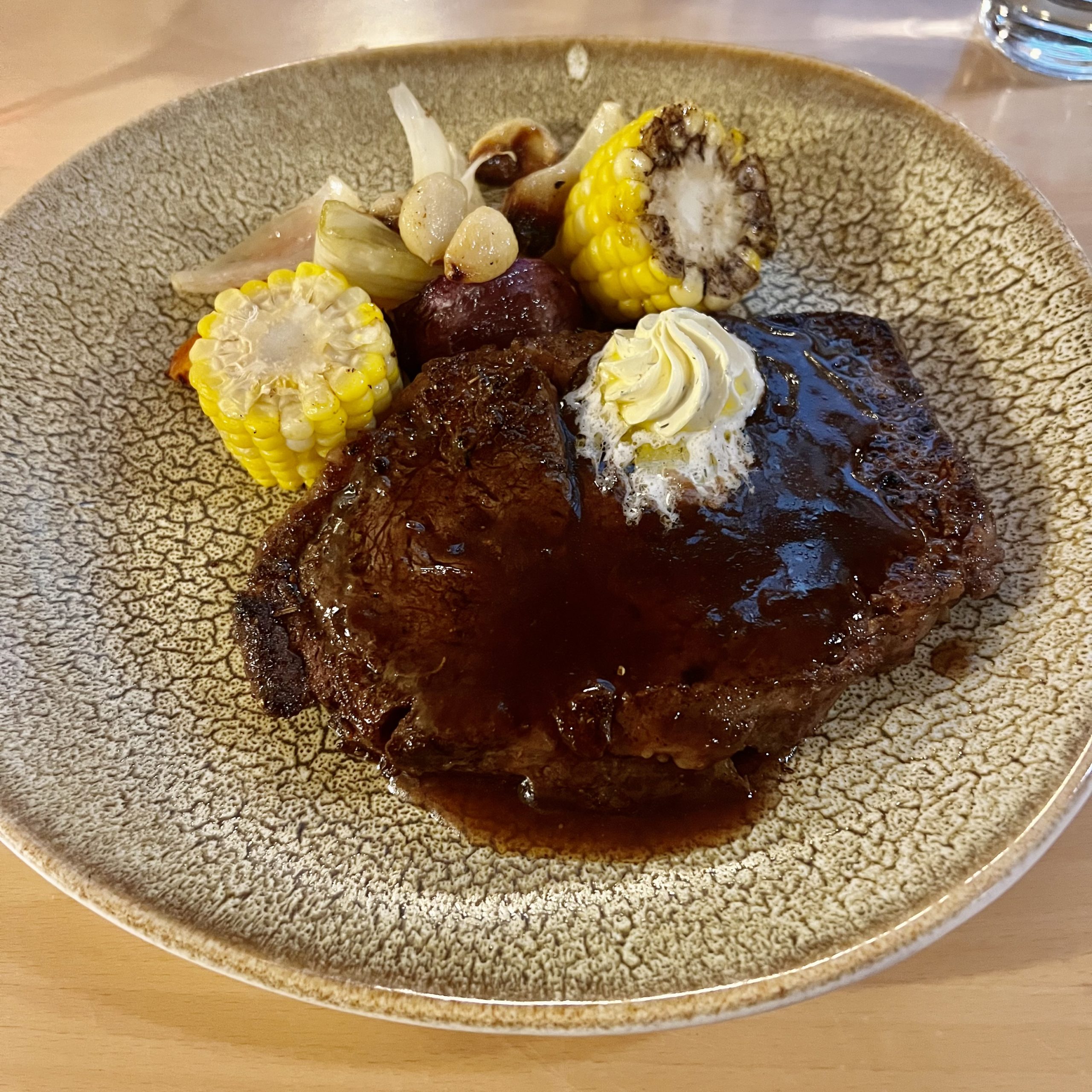
Next Stop—Palmerston North!
